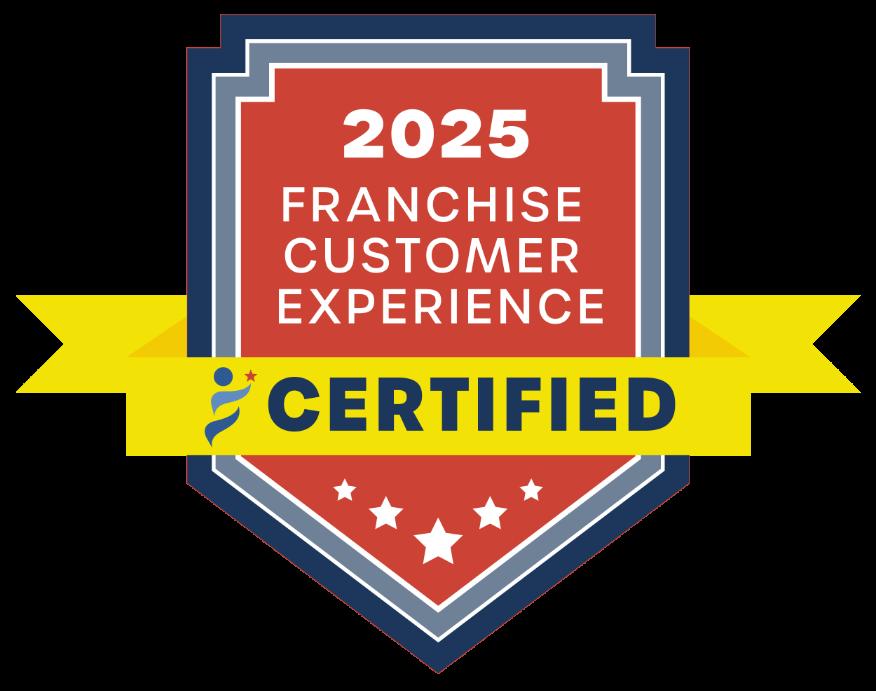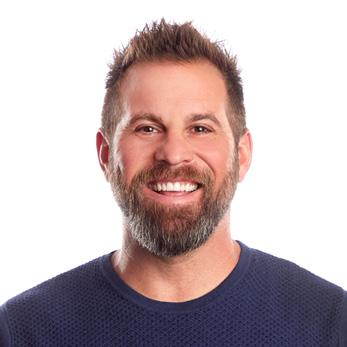

THE BEST Build
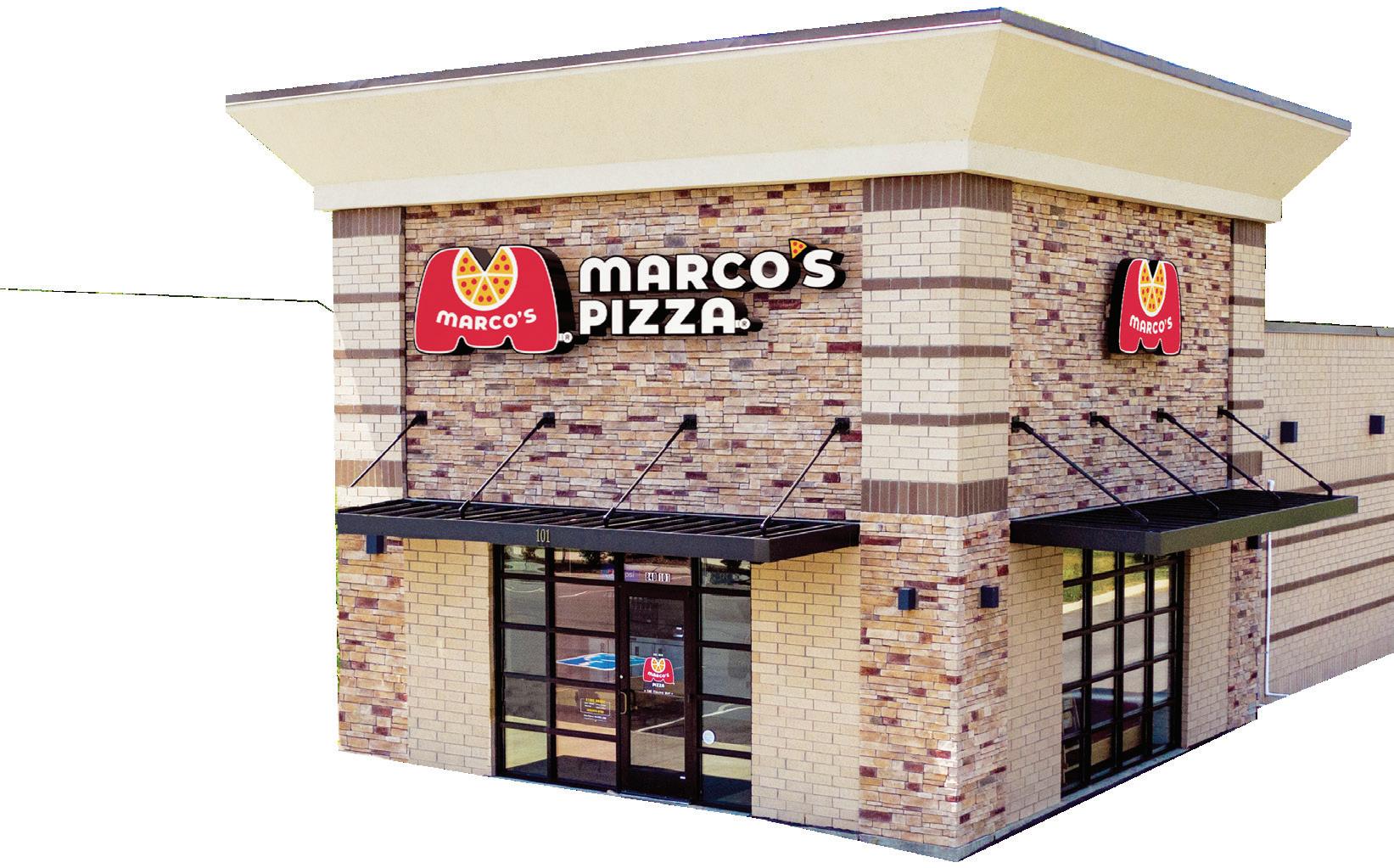

BRAG
Our flour, sauce and signature three cheeses make our product distinctly Marco’s. Our dough is prepared in-store daily and keeps customers coming back.


1,200+ locations and key territories available in the U.S. and international markets.
Business support, enterpriselevel systems and an experienced corporate leadership team make Marco’s a scalable investment for multiunit entrepreneurs.
OPEN TERRITORIES AVAILABLE





































Main Street to Capitol
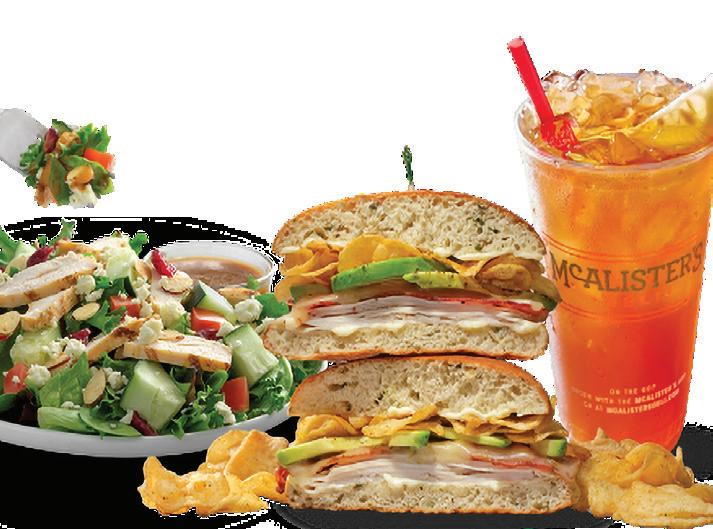



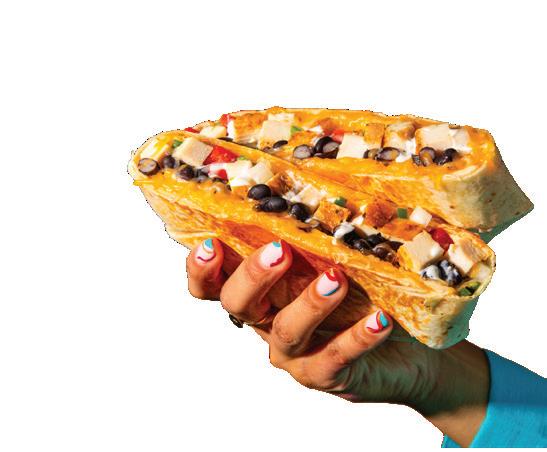






This information is not intended as an offer to sell a franchise. We will not offer you a franchise until we have complied with disclosure and registration requirements in your jurisdiction. Contact Auntie Anne’s Franchisor SPV LLC, Carvel Franchisor SPV LLC, Cinnabon Franchisor SPV LLC, Jamba Juice Franchisor SPV LLC, McAlister’s Franchisor SPV LLC, Moe’s Franchisor SPV LLC, or Schlotzsky’s Franchisor SPV LLC, located at 5620 Glenridge Drive, NE, Atlanta, GA 30342, to request a copy of their FDD. RESIDENTS OF NEW YORK: This advertisement is not an offering. An offering can only be made by a prospectus filed first with the Department of Law of the State of New York. Such filing does not constitute approval by the New York Department of Law. RESIDENTS OF MINNESOTA: MN Franchise Registration Numbers: Auntie Anne’s Franchisor SPV LLC: F-8191, Carvel Franchisor SPV LLC: F-8199, Cinnabon Franchisor SPV LLC: F-8190, Jamba Juice Franchisor SPV LLC: F- 6111, McAlister’s Franchisor SPV LLC: F-8196,
FEATURES
46 From Main Street to Capitol Hill
Franchise leaders tell their stories to Congress at IFA’s 2025 Advocacy Summit 52 Revive and Refresh
How remodels can drive revenue for franchisees
58 One Umbrella, Many Brands
Multi-unit franchisees link their fortunes to multibrand platform companies
COLUMNS
64 Customers Count
Why customer service feels colder than ever
Our Team
CO-FOUNDER
Gary Gardner
CO-FOUNDER
Therese Thilgen
VP, EVENT OPERATIONS
Sue Logan
VP, MARKETING AND CONTENT
Diane Phibbs
VP, BUSINESS DEVELOPMENT
Barbara Yelmene
DIRECTOR, BUSINESS DEVELOPMENT SALES
Krystal Acre Hope Alteri
Jeff Katis
DIRECTOR, EXECUTIVE EDITOR
Kerry Pipes
Drawing distinct lines between the duties of franchisees and franchisors
IFA Report
The American Franchise Act is a landmark step for franchise independence
Is your accounting method limiting your expansion potential? 72 Business Law
System change without buy-in is a recipe for resistance 74 Market Trends
The franchise financing ecosystem is changing fast
76 Exit Strategies
Explore the opportunities and risks of multi-brand franchising
MANAGER, EDITOR
M. Scott Morris
MANAGER, EDITOR
Kevin Behan
DIRECTOR, CREATIVE
Cindy Cruz
DIRECTOR, TECHNOLOGY
Benjamin Foley
SENIOR MANAGER, WEB DEVELOPER
Matt Wing
MANAGER, WEB DEVELOPER
Don Rush
COORDINATOR, DIGITAL
Juliana Foley
DIRECTOR, EVENT OPERATIONS
Katy Coutts
REGISTRATION NOW OPEN!

MANAGER, EVENT OPERATIONS
Sharon Wilkinson
COORDINATOR, EVENT OPERATIONS
Leticia Pascal
MANAGER, GRAPHIC DESIGN
Michael Llantin
DIRECTOR, CUSTOMER EXPERIENCE
Chelsea Weitzman
MANAGER, MARKETING
Taylor Williams
COORDINATOR, SPONSORSHIP BENEFITS
Alison Shelton
Heather Stoner
CONTRIBUTING WRITER
Colleen McMillar
CONTRIBUTING EDITORS
Carty Davis John DiJulius
Matt Haller
Nichole Holles
Larry Layton Paul Santomauro
Brian Schnell
ARTICLE INQUIRIES
editorial@franchiseupdate.com
SUBSCRIPTIONS subscriptions@franchising.com 408-402-5681






















If You Have Multi-Unit Challenges, You Need the MUFC

I was reflecting on how I first found out about the Multi-Unit Franchising Conference (MUFC). I remember talking with a franchisee who had attended the MUFC and served on the conference advisory board. He was someone I trusted, and we spoke about franchising all the time.
He told me how the MUFC was made for franchisees. He explained how the agenda was built by an advisory board made up entirely of franchisees. These were franchise operators who wanted to tackle the kinds of issues that keep franchisees up at night. They wanted to provide tactics and strategies to help solve some of those challenges.
When I registered for my first conference, I didn’t know what to expect. The first event was a franchisee-only meet and greet. I was so impressed to be welcomed by so many multi-unit and multibrand franchisees of all sizes.
This was the beginning of my love affair with the MUFC. The rest of the conference was filled with great keynote speakers, sessions, and information to help me successfully grow my network. Each day was packed with timely topics, great speakers, and panel discussions led by multi-unit franchisees.
The networking was amazing and allowed me to meet some of the most successful franchisees in the industry.
We all talk about investing in our businesses the way we should. Getting to scale is always a goal for franchisees who want to build wealth for themselves and their families. Do you ever think about investing in yourself to continue to gain knowledge and learn best practices from some of our industry’s elite?
The MUFC is the best investment I have made. I have not only educated myself more on this great business, but also gained new friends who are now part of my franchisee family.
If you have never been to the Multi-Unit Franchising Conference, I strongly suggest you make the investment to attend.
I look forward to seeing you in Las Vegas, March 24–27.
Mitch Cohen
MITCH COHEN MUFC 2026 Chair
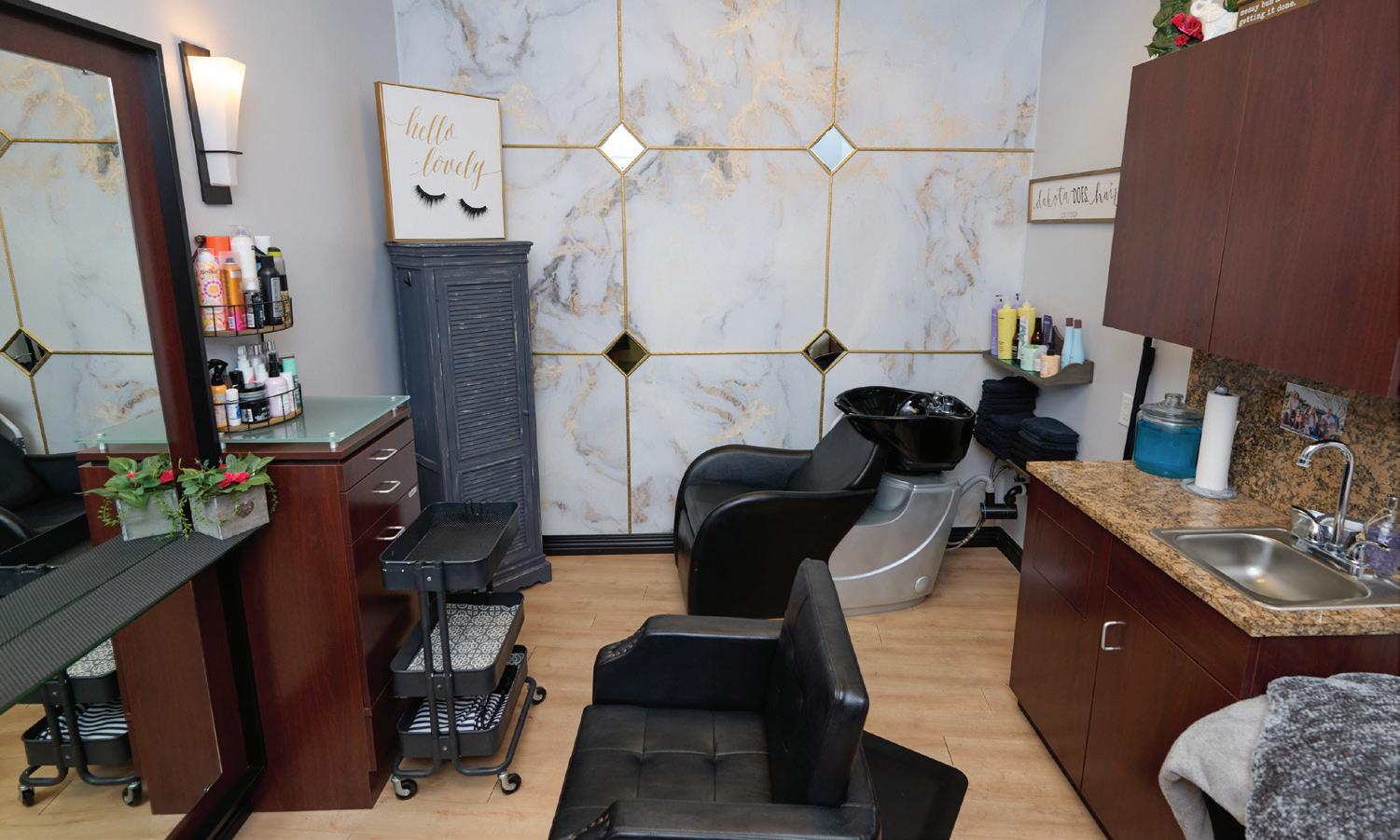



Christopher Aslam
“My dad taught me to always dream big, stay positive, and that money isn’t the only thing.”
Bold Moves
Youngest franchisee in Jack in the Box history capitalizes on risk
Written by KEVIN BEHAN

CHRISTOPHER ASLAM
CEO & Principal
Company: Rock Strategies and various entities
No. of units: 59 Jack in the Box, 5 Golden Chick, 5 Hawaiian Bros Island Grill
Age: 44
Family: Wife Natalie and 3 children, Beckham, 11, Finnley, 9, and Cruz, 2 Years in franchising: 29
Years in current position: 20
At first glance, Christopher Aslam might look like another second-generation franchisee, following his father’s lead with Jack in the Box. Dig a little deeper, and their entrepreneurial journeys reveal anything but a typical legacy story.
In the 1970s, Aslam’s father arrived in the U.S. from Pakistan with little more than ambition and a college dream. He landed a graveyard shift at a Jack in the Box in Dallas, where his first night tested him: The cook fell asleep, leaving him to juggle both the grill and the front counter. What felt like one of the hardest nights of his life sparked a 14-year career with the brand. Along the way, he met his future wife at the drive-thru window. In 1988, he opened the first of the five restaurants he owns today.
Aslam grew up in the family business, starting as a teenager behind the counter at Jack in the
Box. That early job sparked a genuine love for the restaurant world. A few years later, when one of his father’s restaurants burned down, Aslam left college to take charge of the rebuild and essentially acted as a general contractor. The success of that project gave him the confidence to chase something bigger: his own franchise. He flooded Jack in the Box officials with emails about opening a store. Skeptical about his age and his plan to start small, the company hesitated. Aslam persisted and secured financing. At 23, he became the youngest franchisee in Jack in the Box history.
His boldness didn’t stop there. While most operators gravitated toward established neighborhoods, Aslam studied a population density map of Dallas and spotted a different kind of opportunity: a struggling part of the city with cheap real estate, one McDonald’s, and no other major chains. Where others saw risk, he saw untapped demand. With his business partner, Edith Diaz, who maxed out her credit cards to help fund the project, Aslam built his first restaurant in 2007. His emotions swung from excitement to terror and back again on the night before the grand opening.
“It was the most thrilling and scariest part of my life,” Aslam says. “A TV reporter walked around the property and asked me if I was worried about whether we would be successful in that location, and that question caught me off guard. I thought either this would not go well and I would work the drive-thru and just keep the place open, or I would build a bunch more restaurants and be very successful. Thank God the latter happened.”
Despite his age and inexperience, the planned locations of his restaurants, and the economic recession that was hitting the country at the time, Aslam was undeterred by risk. During a time of limited growth, his restaurant succeeded, encouraging him to build more units. Today, he operates 59 Jack in the Box locations and serves as chairman of the Texas Restaurant Association.
A few years back, Aslam decided to diversify beyond Jack in the Box. It was a difficult decision given his deep history and loyalty to the brand. With prime markets already tapped, he began searching for complementary QSR concepts that could strengthen his portfolio. In 2016, he opened his first Golden Chick, strategically placing it in the same parking lot as his original Jack in the Box. The gamble paid off: Sales for both restaurants climbed. Two years ago, he added Hawaiian Bros Island Grill to the mix, further expanding his reach. Today, Aslam operates 69 restaurants across three brands, and he’s not slowing down. His next target? Steady expansion toward 150 units over the next decade.
“I’ve been so blessed to have so many good people with me throughout my career: business partners, family, friends, and long-time employees,” Aslam says. “My dad taught me to always dream big, stay positive, and that money isn’t the only thing. I have everything that I want, and that is the blessing in my life. Quite honestly, this is fun. That’s what drives me, and we as a team will eventually reach our goals.”
PERSONAL
First job: As a Jack in the Box cashier when I was 15. My parents owned a couple of restaurants, and I helped out as a kid.
Formative influences/events: My parents were immigrants and instilled family values, like an unrelenting work ethic. I learned business from a young age through both wins and painful lessons. One of the biggest wins for our family was when my parents made generational progress by going from employees to becoming franchisees. It showed me firsthand the power of entrepreneurship, risk-taking, and the freedom that comes with building something of your own. On the other side, we unfortunately discovered that a CPA we trusted had been embezzling from us at the same time one of our restaurants, which was uninsured, caught fire. That double blow taught me two things: the absolute importance of controls and accountability in business, even with people you think you can trust, and the need to be resilient.
Key accomplishments: Successfully navigating high-stakes litigation and regulatory challenges and drafting laws that would influence our industry. I am also the chairman of the Texas Restaurant Association.
Biggest current challenge: Balancing growth and complexity while navigating economic, legal, regulatory, and labor headwinds is tough because each factor pulls you in a different direction. Growth brings opportunity, but it also magnifies complexity with more units, more people, and more risk. Legal and regulatory shifts mean the rules can change mid-game, and labor pressures add cost and limit flexibility. It forces you to stay agile, make fast but sound decisions, and build systems that scale without losing culture.
Next big goal: Lifting our organization and people to create a $1 billion enterprise over the next 15 years with an eye on the quality of assets rather than quantity.
First turning point in your career: My family’s support and the Jack in the Box brand taking a chance by allowing me to become a franchisee. I became the youngest franchise owner in the system at age 23 in 2005.
Best business decision: Risking everything to build our first Jack in the Box restaurant when others thought the chance of success was low.
Hardest lesson learned: Even when you do everything right, you can still sometimes fail. I opened a store that I thought was perfect in every
respect. When it opened, it did not do well. The truth is that even after the failure and my analysis of it, I would have made the same mistake again, which shows you can sometimes fail even when you think you have everything correct.
Work week: I don’t track hours; I work until I get tired. But because I enjoy it so much, it rarely feels like work.
Exercise/workout: An exhausting 45 minutes three times a week with fast-paced cardio and core strength work.
Best advice you ever got: You just need to get more decisions right than you get wrong. That is something my CPA, Gary Vick, told me years ago.
What’s your passion in business? I love building new restaurants because it allows my team to create opportunities for growth for our people.
How do you balance life and work? I don’t think entrepreneurs can really balance. We juggle. At work, I ask myself if I really need to be in a meeting. At home, I ask myself if I can afford to miss any family moment.
Guilty pleasure: Solo trips to recharge.
Favorite book: Atlas Shrugged by Ayn Rand. It was a life-changing book that I was lucky enough to find when I was a teenager.
Favorite movie: “Forrest Gump.”
What do most people not know about you? I love the art of design and innovation.
Pet peeve: People and institutions without a passion or care for what they do.
What did you want to be when you grew up? I always knew I wanted to go into business. I would play a video game called Aerobiz, where you are the CEO of an airline.
Last vacation: Terlingua in the West Texas high desert in May.
Person you’d most like to have lunch with: The founding leaders of the three major religions. I’d love to hear their vision firsthand and ask how they’d see the world today.
MANAGEMENT
Business philosophy: Grow smart and strong, and do it with people you like. It’s all about the journey.
Management method or style: I try to ask lots of questions. It helps those I manage to think through the entire picture.
Greatest challenge: Managing the unexpected. This applies to everything in life and is important to work through. In the restaurant industry, specifically, it can be the equipment fails during a lunch rush, a supplier runs short, or a storm knocks out power. Managing the unexpected means you keep a calm head, make quick calls, and train your people to problem-solve rather than freeze.
How do others describe you? Strategic, relentless, and creative.
Have you ever been in a mentor-mentee relationship? What did you learn? I’ve been in a mentor-mentee relationship with all my people. Sometimes, I learn from them, and sometimes, they learn from me. I’ve learned the value of perspective and patience, seeing challenges through someone else’s eyes and realizing that growth takes time. In most cases, it’s about guiding them to find the answers on their own.
One thing you’re looking to do better: Delegation by trusting my team and protecting time for staring out the window. As a leader, you can get so caught up in keeping the engine running that you forget to look out the window to guide the direction in which you are traveling.
How you give your team room to innovate and experiment: Encourage pilots, celebrate results, and don’t punish smart failures.
How close are you to operations? My role isn’t to run every detail of operations; it’s to make sure the teams have the tools, resources, and clarity they need. I stay close enough to understand the challenges, but my job is to set the direction and remove barriers so that the operations can succeed.
What are the two most important things you rely on from your franchisor? Brand protection and transparent and fair economics.
What you need from vendors: A partnership mindset.
Have you changed your marketing strategy in response to the economy? How? Yes, by adjusting to a more digitally focused approach. To stay relevant, you must navigate the third-party delivery system by finding the right balance of levers to pull, such as sponsored ads, pricing, and promotions. It adds an entirely new layer of analytics to our business.
How is social media affecting your business? It’s reputation management in real time, and it can make you or break you in an instant. No matter how many positive reviews you get, it only takes one negative video to go viral to hurt the entire brand. A lot of times, customers don’t even come to you to help solve the issue, and you find out about it at the same time as the rest of the world.
In what ways are you using technology (like AI) to manage your business? To help brainstorm and build out strategic decisions and implementation. Using AI to help run different scenarios for your business, including cost savings options, menu pricing, or break-even analysis, has become simple. Describing the problem in your own words and seeing thoughtful responses to complicated questions is a game changer.
How do you hire and fire? We hire based on our values and fire when it affects our culture. We hire for our ROCKS values: Right thing, Ownership, Can-do attitude, Kindness, and Striving for growth. If someone consistently goes against those values, it affects our culture, and that’s when we have to part ways. It’s rarely a single mistake. It’s

consistent opposition, which indicates it’s not a right fit.
How do you train and retain? By having clear systems, growth pathways, recognition, and profit sharing for our management teams.
How do you deal with problem employees? I approach the situation with direct conversations, coaching, and encouraging accountability.
Fastest way into your doghouse: Not caring.
BOTTOM LINE
Goals over the next year: Further development of each brand and acquisition. Continue a slow and steady new store development plan and keep our eyes out for great existing opportunities for acquisitions.
Growth meter: How do you measure your growth? Solid EBITDA growth, low leverage, and culture retention.
Vision meter: Where do you want to be in five years? 10 years? Within the next decade, we hope to achieve 150 units and a $1 billion valuation.
Do you have brands in different segments? Why/why not? Yes. Diversification hedges risk, allows for more opportunities in real estate and people growth, and creates learning across concepts. How is the economy in your region(s) affecting you, your employees, your customers? Broader immigration concerns have influenced consumer confidence and spending patterns among certain customer groups, creating ripple effects across the industry.
Are you experiencing economic growth in your market? Sales growth has been challenging this year, and labor costs, inflation, and regulatory pressure are real. However, the Texas, Nevada, and Utah markets have a lot to offer in the form of new development and a business-friendly environment. How do changes in the economy affect the way you do business? Changes always bring opportunity if you are looking at them correctly. For example, it can refocus attention to your P&Ls, which allows you to renegotiate with vendors and cut out nonessential expenses. It gives you an opportunity to reset expectations with your teams. One
of my favorite quotes is, “You become a millionaire during the good times and a billionaire during the bad times.”
How do you forecast for your business? A combination of R365 data, brand metrics, and real estate analysis. R365 gives us real-time financial and operational data so that we can see how each restaurant is performing day-to-day. Things like average unit volumes, customer traffic, and menu mix help us measure performance against the broader system and spot trends. Real estate analysis helps us understand the potential of a location, trade area growth, traffic patterns, and demographics. Putting those together gives us both a short and long-term view, so we can plan growth and manage risk with confidence.
What are the best sources for capital expansion? A mix of retained earnings and our lending partners, both local and national.
Experience with private equity, local banks, national banks, other institutions? Why/ why not? Local for the newer concepts and national for the established brands is the most efficient.
What are you doing to take care of your employees? Offering benefits and increasing culture, recognition, and upward mobility. Every year, we have continued to improve the benefits we provide for our employees. With new store growth, there is always room for personal growth, caring about the employees’ personal lives, and supporting them when they have personal issues.
How are you handling rising employee costs (payroll, minimum wage, healthcare, etc.)? Making the job more efficient and enjoyable through tech and streamlining. Any software that simplifies tedious tasks, such as inventory or scheduling, helps. That includes simple things, like automated safes to reduce the time and accuracy of counting cash. Installing automated equipment, such as beverage dispensers, allows employees to have a simplified experience while helping keep costs down.
What laws and regulations are affecting your business, and how are you dealing with them? We deal with a wide range of labor, tax, and compliance regulations that vary from one jurisdiction to another, which can make uniform compliance difficult. My focus is on working with industry groups and policymakers to help shape laws toward fair, balanced solutions that work for businesses, employees, and guests.
How do you reward/recognize top-performing employees? Bonuses, recognition programs, and growth opportunities.
What kind of exit strategy do you have in place? I know they say start with the end in mind. I honestly have been in this for the journey and don’t know where or when the road will end.
POWER MOVE IN YOUR FRANCHISE PLAYBOOK

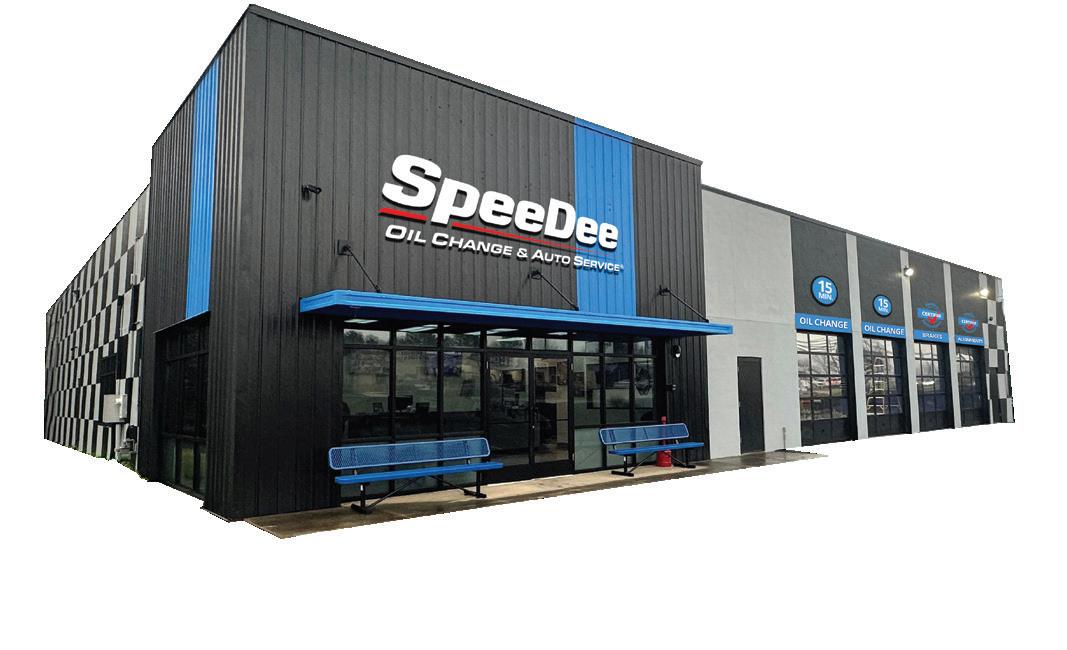




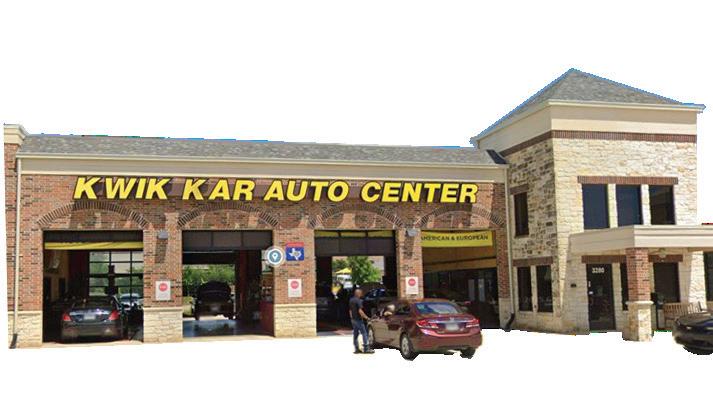
“Trust is the highest form of human motivation. It brings out the very best in people.”
Beyond the Clippers
Building a business, a legacy, and a lifelong partnership with Sport Clips
Written by KEVIN BEHAN

VManaging Member
Company: Lee Hill Companies
No. of units: 67 Sport Clips Haircuts, 1 Woof Gang Bakery & Grooming Age: 57
Family: Wife Stacey, 5 children, Derek, 32, Tyler, 30, Nicole, 28, Brandon, 24, and Breezy, 23, and 7 grandchildren
Years in franchising: 20
Years in current position: 20
al Hill had built a thriving career in construction contracting and supply chain management when a conversation with his longtime friend Jared Lee changed everything. The two had known each other since their days at Brigham Young University and often kicked around the idea of owning a business together. In 2005, Lee finally pushed: “Are we just going to keep talking about this, or are we going to do it?”
“I looked at a few franchise options, but when I came across Sport Clips, it resonated with me,” Hill says. “It is a really cool concept. At the time, there wasn’t anything like it that catered to men and boys. I mentioned it to Jared, and he hadn’t heard of it. He thought it was something involving sports highlight videos. When I explained it and my interest, he said, ‘Two dudes in the hair business?’ We went to a local salon and tried it, and we said, ‘This is pretty awesome.’”
By the end of 2005, they had purchased three licenses and taken over an existing salon. Hill kept his demanding job at Intel, juggling both careers as the Sport Clips footprint grew. But as the business expanded to 13 locations, the balancing act became impossible. Hill made the leap, leaving corporate life to focus fully on franchising. That decision paid off: Today, he and Lee run 67 Sport Clips salons across Arizona, Utah, Washington, and Oregon.
Hill and Lee thrived through their first 15 years in business, but Covid threatened to upend their operation. Salons shut down temporarily, and the real challenges came when doors reopened. Cushioned by stimulus checks and concerned for their health and safety, many employees throughout the hair salon industry did not return. Beauty schools, which had always supplied a pool of talent in a high-turnover field, closed for a year and did not produce graduates at a normal rate for about two years. Consumer behavior also changed with less emphasis on a professional appearance amid the shift to remote work. Others chose to cut their hair at home.
Calling that time “the hardest thing we’ve ever gone through,” Hill said that he and his partner doubled down on taking care of the more than 300 existing staff members across their 32 stores. They decided not to lay off any employees and continued to pay them, including their regular wages and the tips they would have earned. Hill says they weathered the initial storm better than many others in the industry, and they continue to provide employees with generous salaries and benefits to attract the best talent.
With the damage of the pandemic behind them, Hill and Lee recently decided to expand their franchise portfolio by opening their first Woof Gang Bakery & Grooming location earlier this year. They wanted another franchise in the service industry and knew the dog grooming and bakery concept had a proven business model that had been successful in several states. The partners plan to add about 10 Woof Gang locations in Arizona over the coming years while also continuing to grow their Sport Clips business.
Hill isn’t planning to retire anytime soon, but he can see the day when he and Lee step back and pass the business to his two of his sons who have been working alongside them for years. He said he would like to structure the company so that Tyler and Brandon become “the Val and Jared of the company.” Hill also takes pride in the lasting friendship and strong partnership he’s built with Lee throughout their journey.
“When people ask how a partnership works for that long, I say our business is significantly better
with both of us than it would be with one of us,” Hill says. “We don’t worry about keeping score. We both have confidence that the other person is doing their part. There is a huge amount of trust. He is incredibly generous and open to the idea of my sons coming into the business. It has definitely been a blessing for both of us.”
PERSONAL
First job: I spent my summers working in my grandfather’s furnace cleaning business when I was a teenager, starting in seventh grade. It was great because I got to work with my grandpa, dad, and uncles.
Formative influences/events: There were two. The first was working in our family business when I was growing up. We worked six days a week, and it was a dirty job, but I look back on it with pride because that is where I learned how to work hard. The other was when I served a two-year church mission at age 19. I learned the importance of my faith and how to serve others without worrying too much about myself.
Key accomplishments: My family is my biggest accomplishment. On the business side, we were a three-time winner of Store of the Year (The Logan Trophy) for Sport Clips, a two-time Team Leader (Franchisee) of the Year, an IFA Franchisee of the Year, and CNBC’s Top Franchisees in America in 2016. Biggest current challenge: Growing our client count back to pre-Covid levels.
Next big goal: The past five years have brought a lot of changes and upheaval into our business. It has felt like we’ve gone from one challenge to the next. My goal is to stabilize and strengthen the business so that we’re able to grow our client count, strengthen our margins, and continue to be the workplace of choice for our team members.
First turning point in your career: One of my close friends from business school, Jared Lee, and I had always talked about someday owning our own business. He always said, “You can’t win if you don’t play the game.” So, in 2005, we started looking, and I found Sport Clips. We investigated it and decided to jump in and become Sport Clips franchisees. By 2014, we had 13 Sport Clips stores when my business partner and I decided to focus on Sport Clips full-time. I had a good corporate job, and my wife was a little bit nervous about leaving the stock options and benefits behind. Fortunately, it worked out, and we never looked back.
Best business decision: After initially buying three Sport Clips licenses, we purchased an existing salon, which helped us hit the ground running and allowed us to open our next store, knowing the key elements of the business.
Hardest lesson learned: Be ready to change and adapt. When Covid hit, our business was devastated. With a lot of difficult decisions and hard work, we got rolling again and thought we were in good shape. Then the staffing crisis hit. Beauty schools
had shut down, so no new stylists were coming into the industry for well over a year. We struggled to keep the doors open for full hours. We made some missteps, but we learned, and fortunately, we have a resilient organization that has weathered these storms and is back in growth mode. The quote, “Success isn’t permanent, and failure isn’t fatal,” is a good one.
Work week: This year, I cut back my office days to Monday, Tuesday, and Wednesday. I work from home or visit stores on Thursday, and I try to reserve Fridays for family or personal time.
Exercise/workout: I try to play golf a couple of times a month, and I have a weekly pickleball game with some buddies. I also enjoy anything outdoors, but I’m hit or miss at the gym.
Best advice you ever got: I love this quote by Stephen Covey: “Trust is the highest form of human motivation. It brings out the very best in people.” I’ve worked for leaders in my career who were great examples of this, and it’s something I’ve tried to emulate within our own organization.
What’s your passion in business? I love making a difference for other people, such as providing a space where our people can create great careers for themselves. I enjoy seeing them buy their first home or first car. I also love seeing the difference that our team members make in the lives of our clients. The personal connections that can be made in our industry make the world a better place.
How do you balance life and work? I have great people at the top of our organization who make sure things run smoothly. We have the very best operations and area leaders who oversee eight to 10 stores, and they do a great job. We trust them to keep things on track, which allows me to get away when needed.
Guilty pleasure: Flying. I have a Piper Archer airplane that I love to fly whenever I can.
Favorite book: I have a lot of favorite books, but Shoe Dog is probably at the top. It’s about Phil Knight and how he built Nike. I really love to learn how entrepreneurs build a business. Business bios and sports bios are my favorites.
Favorite movie: “Gladiator” and “Miracle” are my two favorites. I also love the movie “Moneyball.” What do most people not know about you? I really enjoy cooking, especially outdoor cooking, like smoking meats.
Pet peeve: Not doing what you say you will do. What did you want to be when you grew up? I wanted to be a pro basketball player.
Last vacation: My last vacation was a river cruise on the Rhine to see the Christmas Markets in December 2024.
Person you’d most like to have lunch with: Elon Musk—so much to tell. If he’s not available, Phil Mickelson.
MANAGEMENT
Business philosophy: Provide a great team member experience, and then your team will deliver a great customer experience.
Management method or style: Train, trust, and empower.
Greatest challenge: Creating an organization that can continue to set the standard for our industry in terms of team member pay, benefits, and client experience.
How do others describe you? Faith and family oriented, loves a challenge, results driven, detailed, and hardworking.
Have you ever been in a mentor-mentee relationship? What did you learn? I’m not sure that I have a lot of experience in a mentor/mentee relationship.
One thing you’re looking to do better: I can always improve on letting go of the day-to-day issues and spending my time focusing on the strategic aspects of the business.
How do you give your team room to innovate and experiment? Our leaders understand the nonnegotiables, and they know that outside of those items, we want to push the envelope. We’ve made changes to our pay and benefit structures based on feedback from our team. For example, we are among the first in our industry to have a matching 401(k) retirement plan available to all team members.
How close are you to operations? I’m still very close to operations. We have weekly meetings with our area leaders and discuss individual store performance. We have quarterly face-to-face, all-manager meetings in each of our markets.
What are the two most important things you rely on from your franchisor? Data is the number one thing I need. Having insights into client behaviors, marketing program performance, and store-by-store comparison data is very important. I also need solid technology, such as our app, online check-in system, and loyalty programs.
What you need from vendors: Quality and competitive pricing.
Have you changed your marketing strategy in response to the economy? How? For the past couple of years, after things settled from Covid, we have rededicated ourselves to marketing and bringing in new clients. Our strategy has been one of getting back to the basics that worked for us in the past. We’re using local store marketing and behind-the-chair marketing. We’re really trying to connect with our communities to drive new clients into our stores.
How is social media affecting your business? Obviously, social media continues to grow in importance. We focus very hard as an organization on our online reputation. We’re vigilant about resolving client concerns and responding to every online

review, positive or negative. Our teams know that we build our business one client at a time.
In what ways are you using technology (like AI) to manage your business? This is definitely an emerging area for us. We’re just starting to explore how it can help us in our back-office tasks and training programs. There is nothing solidly in place yet.
How do you hire and fire? We do both carefully. We’re probably a little slower than others when it comes to firing people. We care about our employees, and we want to make sure we’ve given them plenty of opportunities to right the ship if there are issues.
How do you train and retain? Sport Clips has a great training program for every new team member called “Core Camp.” It is a multi-day training course to ingrain Sport Clips’ culture and processes into our new hires. Our organization also has specific training for team members in haircutting, product sales, efficiency, and leadership. Sport Clips is among the best when it comes to providing quality training. Our team members often mention this as a reason they love working for us.
How do you deal with problem employees? We evaluate whether it is a training issue or a commitment issue. Training issues are fixable. If the person doesn’t understand what to do, we get them the education they need. On the other hand, if it’s a commitment issue, we simply ask them if they’re going to get on board or not. If the answer is no, we part ways. We’re also pretty diligent in the three strikes and you’re out approach. We make sure to document the process.
Fastest way into your doghouse: Not caring about the client. If you don’t care about our customers, this isn’t the place for you.
BOTTOM LINE
Annual revenue: $31 million.
Goals over the next year: Three percent yearover-year same-store customer count growth. Growth meter: Our top measurement is yearover-year same-store customer growth. The other is year-over-year same-store sales growth.
Vision meter: Where do you want to be in five years? 10 years? Within five years, I hope to have a strong footprint in the Phoenix area with five Woof Gang stores. We will continue to grow in our existing markets with Sport Clips. I expect we will be at 75-plus stores within five years. Within 10 years, I hope to be executing my exit plan and will probably shift to more of a consultant role. Do you have brands in different segments? Why/why not? We love the service segments. So, we’ve just opened our first Woof Gang, a dog grooming and bakery shop. It’s coming up pretty well, and we are very excited about this brand. Of course, Sport Clips is and has been our primary brand for 20 years. We have grown with this brand and love the Logan family and the brand that they’ve built.
How is the economy in your region(s) affecting you, your employees, your customers? The economies in Arizona and Utah are growing quickly. This is driving rent and wages higher, and we’re doing all we can to maintain our prices. In the Pacific Northwest, the minimum wage laws drive higher wages and even higher prices. Fortunately, the rent costs haven’t grown as much in the Northwest as they have in Utah and Arizona. Are you experiencing economic growth in your market? Yes. Our Utah market has really started to show some growth. Arizona and the Northwest are a bit slower.
How do changes in the economy affect the way you do business? We try to deliver a great service at a great value regardless of the economy. Wages primarily and rents secondarily are the main determinants of our pricing. We’ve generally found that haircuts are somewhat insulated from swings in the economy. For example, during slight downturns in the economy, we’ll see a little bit of a slump driven by clients going a little longer between haircuts.
How do you forecast for your business? We are pretty simple. We rely on our past years, take into account any new stores that have opened nearby, and then apply an expected growth rate.
What are the best sources for capital expansion? We’ve had the most success with smaller local or regional banks. The big banks are generally asset-based lenders and don’t typically work well with salons. The local/regional banks look more at cash flow, and we’ve had success there. We also have had seller financing for some of our deals, and that has worked out well. For the past several years, we’ve been building our new stores using cash from operations.
Experience with private equity, local banks, national banks, other institutions? Why/ why not? We haven’t had experience with private equity. We’ve been able to grow through the other methods mentioned.
What are you doing to take care of your employees? I’m proud to say that we set the bar for our industry in terms of pay and benefits. We have store managers making six-figure incomes. We have a matching 401(k) retirement plan available for all team members. We have company-subsidized health insurance and paid time off for all team members. Through Sport Clips’ SupportLinc, our team members have access to counseling services, legal services, and financial services. It’s all free of charge.
How are you handling rising employee costs (payroll, minimum wage, healthcare, etc.)? We’ve put some effort into improving our operational efficiency. This includes eliminating wasted labor, consolidating some of our back-office work, and bringing some things in-house. And, of course, we’ve had to pass some of these rising costs on to our customers.
What laws and regulations are affecting your business, and how are you dealing with them? We’ve been happy with many of the changes with the current administration. Of course, we’re thrilled with no tax on tips. That’s a huge win for our team members. The extension to the beauty industry of the 45B FICA tax tip credit was a big win for us as well. It is interesting to see the differences when you have a multi-state operation. Fortunately, most of our stores are in Arizona, which is a business-friendly, low-bureaucracy state.
How do you reward/recognize top-performing employees? Every year, we have a big awards banquet where we give away great raffle prizes, including a seven-night cruise. We also recognize our top-performing team members in all our key metrics, and we recognize the Most Improved, Heart of a Champion, and Stylist of the Year. Additionally, we celebrate our team milestones with dinners and outings. One of the most important things we do is always promote from within. Our top performers have the opportunity to become assistant managers, store managers, area coaches, and area managers. What kind of exit strategy do you have in place? My business partner and I are both thinking about working a bit less. We enjoy the business, so we’re not in a hurry to fully exit. My two sons are working in the business. They are doing a great job of managing different parts of our organization and learning how to lead it. One of my sons has been with us for more than six years and is leading our Utah and Northwest markets. Another son has been with us for a year and a half, and he’s handling all the back-office responsibilities. My plan is to make sure both are well rounded and can lead the organization into the future.

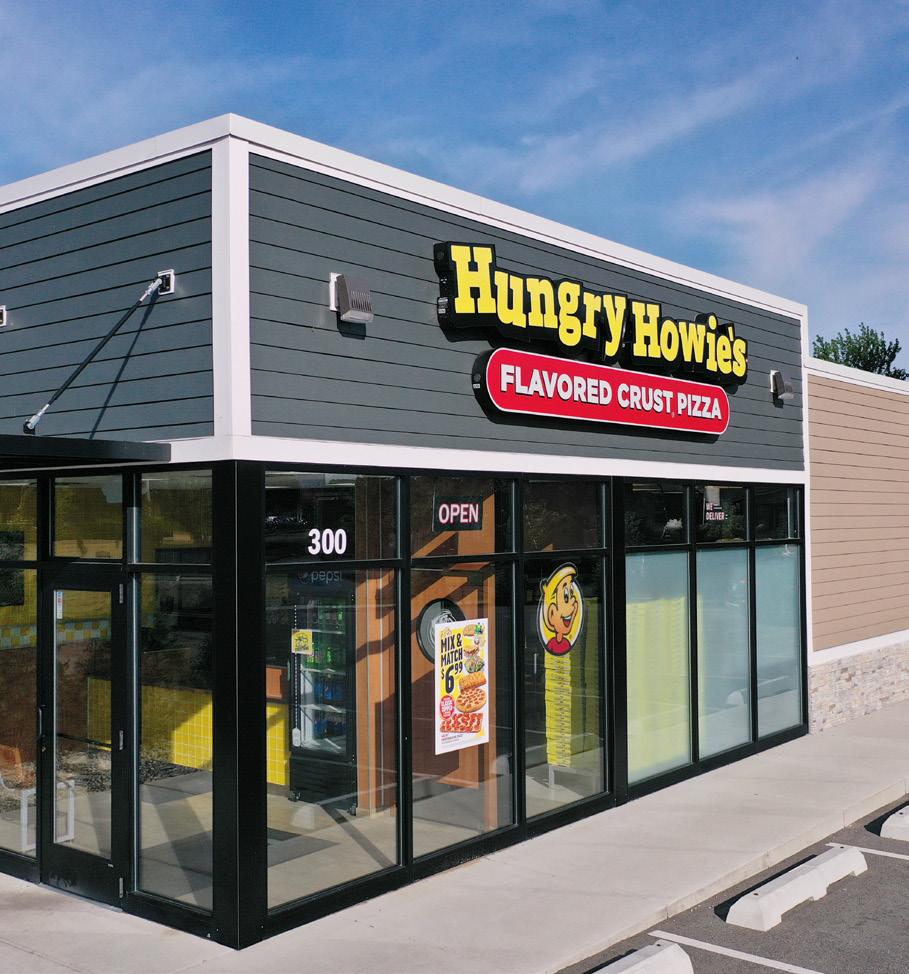

“There are so many fierce, fabulous women in franchising, and I am honored to celebrate their work with them.”
Lifting Others
Taco John’s franchisee elevates the next generation of leaders
Written by KEVIN BEHAN

TAMRA KENNEDY
Franchise Operator
Company: Twin City T.J.’s
No. of units: 6 Taco John’s
Age: 62
Family: 1 son, Jesse, 40
Years in franchising: 41
Years in current position: 27
From slinging pizzas as a teenage waitress at Pizza Hut to running a thriving portfolio of six Taco John’s restaurants across the Minneapolis–St. Paul metro, Tamra Kennedy’s journey is a masterclass in franchising success. With more than 40 years in the restaurant industry, she’s a seasoned operator and a passionate champion for the franchise model and the doors it can open for entrepreneurs from all walks of life.
Kennedy started her career in 1984 as a secretary for a company that owned Taco John’s and Burger King franchises. Early on, she was tasked with creating a spreadsheet that tracked food supply, cost management, and employee training across each location. She later became the office manager and handled administrative duties such as accounting, human resources, and payroll.
She spent more than a decade learning the restaurant business. When her boss was looking to retire and sell the stores, Kennedy asked about buying them. She knew she had mastered the administrative side, but he told her she needed to spend the next year learning about restaurant operations to prepare herself for franchise ownership. She put in the extra hours on nights and weekends in addition to her regular daily responsibilities. She was also assigned to turn around the lowest-performing store in the franchise group.
Kennedy taught herself all aspects of store operations and purchased the group of restaurants in 1999. The operations experience gave her an appreciation for frontline teams.
“Restaurants are the single best business for young people to learn skills they will need later in their careers,” she says. “It teaches them how to manage people, money, and inventory. It provides an opportunity for those who didn’t go to college to receive on-the-job training. If and when they move on from us, they can take what they learned and the skills they acquired to another job. My guarantee is that when people come and work for us, they will be able to grow and shine.”
Kennedy has seen considerable changes in the restaurant industry during her career, including changing laws and regulations. In addition, customer payment shifted from cash to credit cards, which tack on processing fees.
She says speed of service is as important today as it was when she started. Customers should enjoy connecting over shared meals at her restaurants, and it’s her team’s job to deliver a superior guest experience. The company’s motto is “Our family feeds friends.”
Kennedy has served as a trusted voice and mentor to other female business owners. In 2023, she was honored by the International Franchise Association (IFA) with the Bonny LeVine Award, which recognizes women for their business and professional accomplishments within franchising.
“Some women may not have the opportunity or know-how to work their way up the ladder, so I want to share all I can about my experience and help them get through any problems or obstacles,” Kennedy says. “There are so many fierce, fabulous women in franchising, and I am honored to celebrate their work with them.”
Kennedy serves on several IFA boards and has testified before Congress about the joint-employer issue to help define entrepreneurism through franchise ownership. Her mission is to help protect the business model that has been instrumental to her and her team’s success.
“I will always contribute to supporting franchising and advocate for its effectiveness in creating jobs as it is the greatest generator of wealth creation there has ever been,” Kennedy says. “I would like to think my career has stood for giving young people the opportunity to achieve amazing results. I have been able to positively educate elected officials that franchisees are business leaders in their local communities. It is an honor to serve, and it is the least I can do to give back to something I have been a part of my whole career.”
PERSONAL
First job: A waitress at Pizza Hut when I was 20 years old.
Formative influences/events: My father was an independent truck driver. I grew up in the cab of a semi, traveling the country and learning about the food supply chain from the fields to the port terminals as we hauled produce coast to coast. I learned about food cost management while at Pizza Hut. Exact ingredient portions were key to guest experience and, thus, the tips I earned.
Key accomplishments: Working my way from secretary for the owner of the business to becoming the franchisee when I bought his business. I have been engaged for several years at the IFA as a board member and past chair of the Franchisee Forum. I testified before Congress on the joint-employer issue, and I was deeply honored to receive the Bonny LeVine Award from the IFA in 2024.
Biggest current challenge: Staying on top of all the current technology and how to maximize those assets in our daily operations.
Next big goal: Finish remodeling our units and turn our focus more clearly to local market engagement.
First turning point in your career: Stepping out from the administrative role and learning daily operations at one of our locations before I was able to buy the stores. It was a life-changing experience to learn the hard and important work from the night crew.
Best business decision: Focusing on retaining and rewarding our store managers. They are the reason for any success we have, and they build incredible teams.
Hardest lesson learned: I built four franchised units with a different brand in 2004 and then closed them during the recession in 2008. It was the wrong brand and the wrong approach to growth.
Work week: Unless I am on vacation, I work seven days a week, and I usually get more done at night.
Exercise/workout: I swim on a near-daily basis.
Best advice you ever got: My former boss, whom I later purchased the franchise restaurants from, said, “Hope for the best, plan for the worst,” and “Surround yourself with experts in fields that you are not.” It was helpful to have good accountants and attorneys who know the ins and outs of the business. What’s your passion in business? Providing a great workplace for employees on their first job and
setting them up with skills to take with them to any career they pursue.
How do you balance life and work? I tend to schedule all my work from small tasks to large projects and don’t move work to the next day. I work the daily list, but I also schedule personal time and tasks so that I can give respect to both pieces of any day.
Guilty pleasure: Watching “Project Runway” and “American Idol.”
Favorite book: The Deming Management Method by Mary Walton.
Favorite movie: “The Wizard of Oz.”
What do most people not know about you? I can drive almost anything: semi-trailer trucks, farm tractors, and motorcycles.
Pet peeve: People who chew with their mouths open.
What did you want to be when you grew up? An attorney.
Last vacation: St. John with my son and his family in the summer of 2025.
Person you’d most like to have lunch with: President Donald Trump.
MANAGEMENT
Business philosophy: Results through spirited competition and benchmarking against the best of the best. We strive to be number one in all results and cheer each other on through every obstacle and win.
Management method or style: Teaching and always providing the why with the how.
Greatest challenge: Convincing our team that the brand’s decisions and protocols are what we follow even when we disagree.
How do others describe you? Focused, helpful, caring, and collaborative.
Have you ever been in a mentor-mentee relationship? What did you learn? Yes, as a mentor. I learned that not every experience or piece of advice can be directly translated. There must be a commitment to listening to learn for both parties.
One thing you’re looking to do better: Celebrate more of our team members’ accomplishments. They truly bring the magic.
How do you give your team room to innovate and experiment? We are always searching for solutions to issues. Anyone can bring their ideas and freely share them, and we often ask for volunteers to try something new that could benefit everyone. How close are you to operations? Not as close as I could be. I visit stores monthly and also have district managers who are on top of the day-to-day operations in the stores.
What are the two most important things you rely on from your franchisor? Menu and marketing. The more of each, the better. We want to be able to offer food that is relevant to today’s consumer while being profitable for the operator. From a
Restaurants are the single best business for young people to learn skills they will need later in their careers. It teaches them how to manage people, money, and inventory. It provides an opportunity for those who didn’t go to college to receive on-the-job training. If and when they move on from us, they can take what they learned and the skills they acquired to another job. My guarantee is that when people come and work for us, they will be able to grow and shine.
marketing perspective, it is important for the franchisor to establish our brand’s DNA through things like our creative, colors, and font. We need to tell customers who we are.
What you need from vendors: The timely, accurate deliveries of goods and services.
Have you changed your marketing strategy in response to the economy? How? Yes. We have leaned into some discounting through the loyalty app as well as menu offerings at lower prices to promote on a trial basis.
How is social media affecting your business? It has broadened our appeal to those who don’t know us and opened our brand up to a younger guest. Sadly, when there is a negative event, our opportunity to make it right for one guest manifests as an open issue to the masses, so we have less control over mistake resolution.
In what ways are you using technology (like AI) to manage your business? As a brand, Taco

John’s has recently introduced automated drivethru guest interaction, and we are beginning to roll it out as an option for each restaurant. Within our stores, we are using AI to analyze data to collect results, and we use that to create data points for training and operations.
How do you hire and fire? We use interview questions designed to find alignment with our core values, which are more important to us than skills in our evaluation. We are slow to fire, believing that counseling and impactful conversations often solve issues before they become a last-chance scenario.
How do you train and retain? Training is an everyday event. There is always something to teach. New employees go through our “First Day Our Way” training to fully understand their role as a member of the team they are joining. Again, skills come second to behaviors for us.
How do you deal with problem employees? Every chance is given to them to improve. We document, we coach, and we wish them well if we have to part ways.
Fastest way into your doghouse: Lying, cheating, or stealing. Everything else is given grace.
BOTTOM LINE
Annual revenue: $6 million.
Goals over the next year: To move third-party delivery to 15% of our overall revenue and grow the loyalty app base across all our stores.
Growth meter: How do you measure your growth? Guest count, revenue, average ticket, and speed of service.
Vision meter: Where do you want to be in five years? 10 years? I’ll likely have less to do with the day-to-day operations in five years. I will hand over the torch to some great leaders who are already clearing the path for me.
Do you have brands in different segments? Why/why not? One iconic brand to focus on has been my mission from the beginning.
How is the economy in your region(s) affecting you, your employees, your customers? Our guests have less to spend, which means we must overdeliver when they choose us for a meal. As a company, we have thrown our profits into remodels, which cost more to complete than even two years ago. It’s a tough time for everyone, but we are
committed to focusing on controlling those costs we can and not skimping in areas where it makes a difference.
Are you experiencing economic growth in your market? 2024 and 2025 to date are flat or slightly lower. Growth has been elusive, but we are seeing some uptick in the start of the second half of the year.
How do changes in the economy affect the way you do business? The labor market certainly has been a challenge post-Covid. Our team brilliantly does more with fewer on the floor, and they have adapted to some time-saving processes our brand has brought to operations.
How do you forecast for your business? I read tirelessly, focusing on global economic issues and even politics that can affect our future. Commodities play a huge role in our cost modeling. We also look closely at our competitors and track QSR trends.
What are the best sources for capital expansion? Profit. I don’t like to borrow.
Experience with private equity, local banks, national banks, other institutions? Why/ why not? Banks act as our cash depositories only.
What are you doing to take care of your employees? We offer a competitive pay and benefits package to everyone. We find ways to reward excellence and focus on flexibility with scheduling where we can. Our managers focus on a team environment so that everyone thrives, no matter their tenure, their background, or their position on the floor.
How are you handling rising employee costs (payroll, minimum wage, healthcare, etc.)? It’s a challenge—no doubt. We see these costs as necessary, but they do chew away at profit, so we have less to reinvest in the stores for other things.
What laws and regulations are affecting your business, and how are you dealing with them? While we comply with all regulations, we don’t enjoy those that have been imposed as a blanket panacea for perceived workplace issues, like sick time and mandatory PTO. These programs serve as entitlements that chip away at our foundational belief that you earn benefits through performance and not because the state declares us all as equally deserving because we are employees.
How do you reward/recognize top-performing employees? We have a program focused on controlling costs, delivering guest experience scores, and reaching sales goals. Employees are recognized and rewarded when those goals are met. Our individual restaurants recognize their employees during birthdays and anniversaries and have funds for store parties and gift cards.
What kind of exit strategy do you have in place? Well, that’s a work in progress for sure! It is a family-run business. My son oversees the daily operations, and my sister is the office manager. We will look at our options and plan our future together.



“There was a fork in the road at that moment, and I pursued what I knew.”
A Friendly Acquisition
Multi-unit franchisee steps up to lead the brand
Written by KEVIN BEHAN
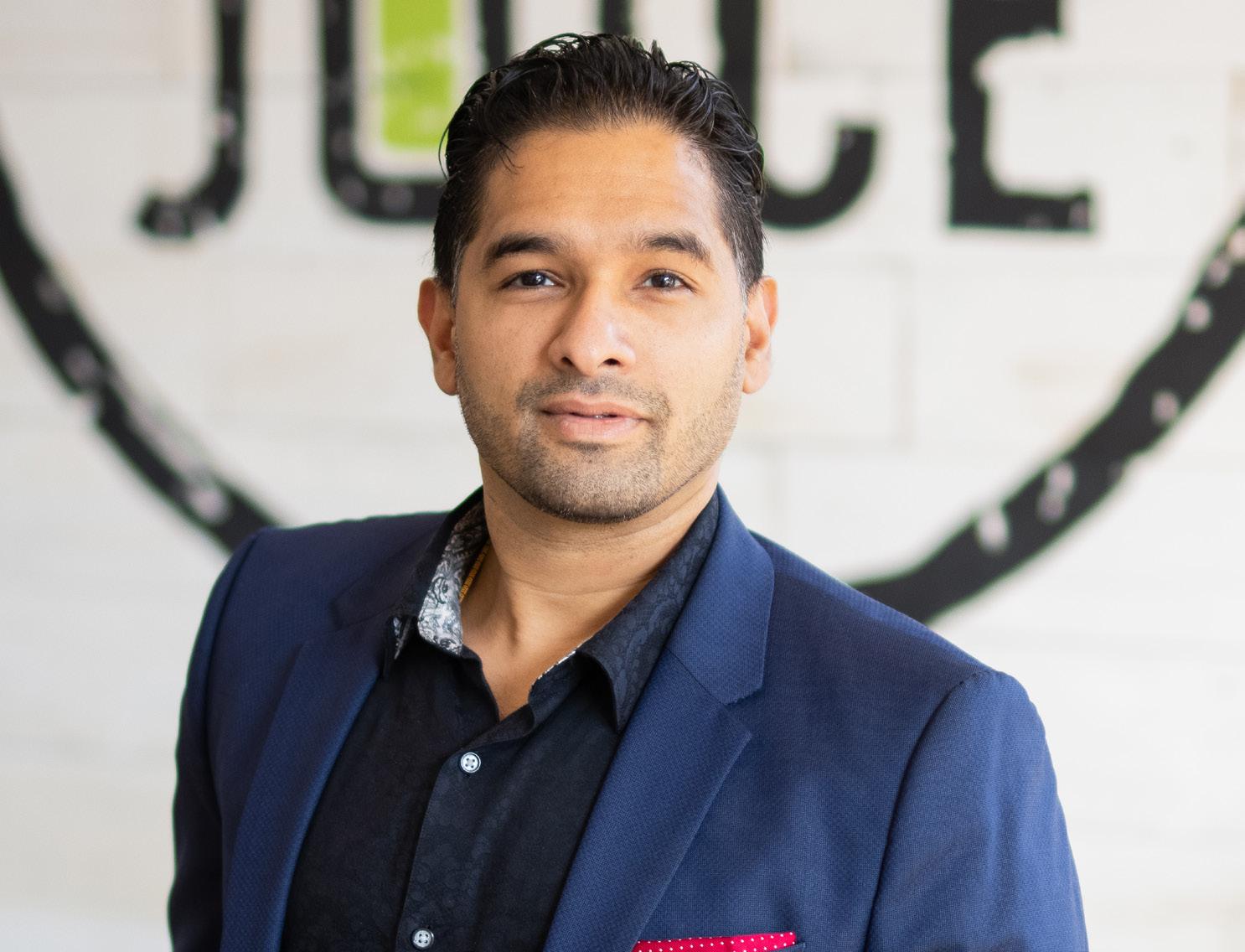
AMOL R. KOHLI
Managing Partner, Legacy
Brands International
Franchisor title: Chairman of the Board, Brix Holdings
No. of units as a franchisee: 31 Friendly’s
No. of units as a franchisor: 61 Friendly’s, 63 Orange Leaf, 60 Clean Juice, 36 Red Mango, 9 Smoothie Factory + Kitchen, 6 Humble Donut Co., 3 Souper Salad
Age: 37
Family: Wife, who is a doctor, and 2 children
Years in franchising: 16
Years in current position: Since July
At 15, Amol Kohli’s first job as a breakfast server at Friendly’s sparked a journey that few could have predicted. Two decades later, he was no longer serving breakfast; he was a multi-unit franchisee who owned 31 Friendly’s restaurants. Now, his path has led him to an even bigger role: operating the entire franchise company that owns Friendly’s and six other brands.
Kohli made headlines this summer when his investment group, Legacy Brands International, acquired Brix Holdings, a multi-brand franchising company with seven food service chains, including Friendly’s, and more than 250 locations. Following the acquisition, he continues to manage his Friendly’s franchise locations while also overseeing Brix’s restaurant operations as its chairman of the board. He plans to grow the company and is looking for additional brands to acquire.
As a teenager, Kohli dove into restaurant work, learning nearly every aspect of operations before becoming a store manager at 18. He left to study business at Drexel University but soon got a call from his former Friendly’s general manager, Jeffrey Blum, who was acquiring several locations and needed help running the back office. Kohli jumped at the chance, spending his last two years of college immersed in the business side of restaurant ownership. By the time graduation rolled around, he faced a pivotal decision.
“I graduated with high honors in finance and marketing and was going to look for a job on Wall Street,” Kohli says. “I also had three to four years of experience on the restaurant administrative side with Friendly’s. There was a fork in the road at that moment, and I pursued what I knew.”
After several years, Kohli successfully petitioned the Friendly’s board to acquire four underperforming units that were set to close. He became a firsttime franchisee when he was 23 and later added five more restaurants. While many locations became successful, Kohli says the ones that failed motivated him the most.
“If not for those failures, there is no way I would be here today,” he says. “I just would have been satisfied and complacent and would have decided not to keep pushing the envelope. Early in my career, I was doing $15,000 a week in business, but I saw other operators doing $40,000 a week. I wanted to be like them. I felt I had to prove to myself that I could do more than operate stores poised for closure. It fueled me for several years to find the right time and location to add and develop new stores and explore various brands in the industry.”
The son of Indian immigrants, Kohli learned the value of hard work early in life. The same motivation that pushed him up the store ladder at Friendly’s at the outset of his career drove his desire to scale the business as a multi-unit owner. He grew his portfolio to more than 30 Friendly’s restaurants before setting his sights on Brix Holdings and its diversified pool of restaurant concepts.
Kohli believes that being able to work with many of the Brix team members before acquiring the company has helped in the transition and established a collaborative relationship. He plans on taking a strategic approach to expand the Friendly’s brand by targeting Georgia, the Carolinas, Florida, Arizona, and Texas while opening other Brix brands in growing markets nationwide.
“We plan on being a unique and world-class group that provides a potentially rewarding and comfortable lifestyle for anyone who wants to partner with us,” Kohli says. “I will lead with a franchisee-
Have you ever been in a mentor-mentee relationship? What did you learn?
Several. Most of my mentors are still mentoring me today. It is the most valuable resource you could ever have. Personal and professional mentorship is critical to having a proper life balance and longterm success. Good mentors who have had the experience and longevity can be instrumental to your business success. It is important to have them from an unbiased perspective. I speak with multiple mentors weekly.
first mindset and a long-term view that focuses on people, operations, and the guest experience. I am excited to see what the years ahead hold for us.”
PERSONAL
First job: As a breakfast table waiter at a Friendly’s restaurant when I was 15.
Formative influences/events: Growing up in a family that valued hard work and entrepreneurship. In addition, starting in an entry-level restaurant role taught me the value of every position in the business. Earning Drexel University’s Top 40 Under 40 recognition reinforced that with focus, persistence, and metered risk-taking, big goals are achievable.
Key accomplishments: Building a multi-unit, multi-brand franchise portfolio that is focused on being an industry leader; successfully acquiring Brix Holdings and its seven national brands through Legacy Brands International; developing
top-performing Friendly’s locations and expanding into new markets; and negotiating more than $50 million in landlord contributions and tenant improvement allowances and more than $100 million in leasehold monetization over the years.
Biggest current challenge: Scaling Brix’s portfolio while preserving the unique culture and guest connection that make each brand special.
Next big goal: Expand the Brix platform both organically and through complementary acquisitions with a focus on better-for-you and family-friendly brands and bring Friendly’s into the Southeast, Midwest, and Texas.
First turning point in your career: Transitioning from a single Friendly’s operator to a multi-brand developer and realizing I could apply operational discipline and growth strategy across diverse concepts.
Best business decision: Taking the leap to go into business and purchasing my first Friendly’s restaurant and then focusing on finding great mentors and role models as I scaled my business.
Hardest lesson learned: Rapid growth without sufficient infrastructure. Growth and control are key.
Work week: Often six to seven days with a mix of on-site visits, strategy sessions, and deal negotiations as well as significant admin time.
Exercise/workout: Regular weight training and cardio. Staying active is key to managing the demands of the role.
Best advice you ever got: “Never ask your team to do something you wouldn’t do yourself.” That came from James Yanucil, the owner of the first Friendly’s I worked at as a teen. Today, he is one of my strongest mentors and supporters in business and friendship.
What’s your passion in business? Transforming underperforming businesses into healthy, growing ones while mentoring future leaders.
How do you balance life and work? Protecting family time and integrating my children into my work life when possible so that they can see firsthand what it means to build something.
Guilty pleasure: Obviously, ice cream at Friendly’s even after 16 years.
Favorite book: Tap Dancing to Work: Warren Buffett on Practically Everything by Carol Loomis.
Favorite movie: “The Pursuit of Happyness.”
What do most people not know about you? I used to be an event DJ. I started while I was in high school.
Pet peeve: People who struggle with being up front with what they need and people who do not respect others’ time.
What did you want to be when you grew up? A businessman. I grew up in a middle-class family, and we always had more than sufficient means for what we needed. But I saw others who were in
business and had more money, and I was drawn to that possibility.
Person you’d most like to have lunch with: President Abraham Lincoln.
MANAGEMENT
Business philosophy: People and culture first, supported by strong systems, routines, and processes. Management method or style: Hands-on to an extent while also providing room for managers to grow and develop. Being highly collaborative, I’m in the field often, but I empower leaders to own their results.
Greatest challenge: Balancing strategic growth with operational excellence and consistency across multiple brands.
How do others describe you? Driven, disciplined, fair, and relentless in pursuing growth.
Have you ever been in a mentor-mentee relationship? What did you learn? Several. Most of my mentors are still mentoring me today. It is the most valuable resource you could ever have.
Personal and professional mentorship is critical to having a proper life balance and long-term success. Good mentors who have had the experience and longevity can be instrumental to your business success. It is important to have them from an unbiased perspective. I speak with multiple mentors weekly. One thing you’re looking to do better: Worklife balance and delegating more to create space for long-term strategic work.
How you give your team room to innovate and experiment: Encourage pilot programs at the store level and measure success before rolling out system wide. I also want to encourage team members to come up with genuine out-of-the-box solutions and developments.
How close are you to operations? Operations are the heartbeat of any business, and I try to remain close to that side. I began in operations and still believe the guest experience starts with how the restaurant runs every day while ensuring all the direct and indirect support systems are functioning. What are the two most important things you rely on from your franchisor? Efficient and profitable systems and innovation.
What you need from vendors: Commitment with a partnership mentality. Advisors and vendors should bring solutions, not just products, and be excellent at logistics and execution.
Have you changed your marketing strategy in response to the economy? How? Yes. We lean into value, digital, loyalty, and localized campaigns that can flex by market conditions.
How is social media affecting your business? Social media is a significant part of our business. It is another way for customers to learn about your business and also interact with your brand. It requires constant monitoring and dynamic

engagement. A business with an online presence must be aware of reputation management, which is an important part of making sure your business is properly represented online. For advertising, social media allows you to reach customers in a targeted method. Digital-only marketing campaigns are effective if done properly, but generally, retailers who use digital marketing will coordinate messaging with other marketing channels to be fully effective. The drawback is that with limited dollars to invest in marketing the businesses, a brand’s voice can be splintered due to the need/desire to communicate with customers through multiple channels.
In what ways are you using technology (like AI) to manage your business? We are leveraging AI and analytics to optimize site selection, staffing, innovation, and marketing targeting. How do you hire and fire? Hire slowly, focusing on character and capability. Part ways quickly but respectfully when alignment isn’t there.
How do you train and retain? Invest in onboarding, mentorship, and recognition programs. How do you deal with problem employees? Address issues early with direct, constructive feedback.
Fastest way into your doghouse: By overpromising and underdelivering.
BOTTOM LINE
Goals over the next year: Open multiple new units across Brix brands, execute at least one strategic acquisition, and expand Friendly’s into two or three new states.
Growth meter: How do you measure your growth? Unit count, same-store sales comps, profitability, and team retention.
Vision meter: Where do you want to be in five years? 10 years? A national and international portfolio of high-performing brands that are recognized for operational excellence and strong franchisee relationships.
Do you have brands in different segments? Why/why not? Yes. Diversification mitigates risk and allows us to capture different guest occasions. But we do our best to focus on kids and family brands in the better-for-you sector.
How is the economy in your region(s) affecting you, your employees, your customers? Inflation pressures margins, but strategic pricing and value engineering help maintain competitiveness. Are you experiencing economic growth in your market? In many markets, we are seeing economic growth. Many of our restaurants are in growing areas, and we are looking at areas to continue to grow through strategic planning and marketing.
How do changes in the economy affect the way you do business? Changes are good and bad, but unexpectedly, they generally lead to an expense for the business. The economy is very important. You have to be able to detect the change in the
economy before it moves and create a plan to attempt to benefit your business during that economy or, at least, protect your business if a benefit cannot be realized during that period of time.
How do you forecast for your business? Datadriven modeling based on historical trends, market analysis, and competitive insights.
What are the best sources for capital expansion? A combination of private equity, family office, REITs, and traditional banking partners.
Experience with private equity, local banks, national banks, other institutions? Why/ why not? I have worked with all the above. The experience varies greatly and generally depends on your need for the capital and the outcome of your investment to understand the varieties.
What are you doing to take care of your employees? With competitive pay and growth opportunities. We also foster a culture of respect.
How are you handling rising employee costs (payroll, minimum wage, healthcare, etc.)? Through design efficiencies, training, innovation, and technology. Innovation is critical. Being in the restaurant industry, we focus on the human experience. Great employees and culture are the apex of what we will always be. We need to incorporate technology into our operations to make the job easier, more efficient, and less stressful. We always want to put people first, putting them in the right position while eliminating waste.
What laws and regulations are affecting your business, and how are you dealing with them? Every state has different rules and regulations, such as hourly rates, and they are constantly changing. We work tirelessly to remain compliant by tracking them closely, quickly adopting SOPs, and advocating through industry groups.
How do you reward/recognize top-performing employees? With bonuses, public recognition, and growth opportunities.
What kind of exit strategy do you have in place? Build a sustainable, profitable portfolio with strategic options for transition or generational handoff.
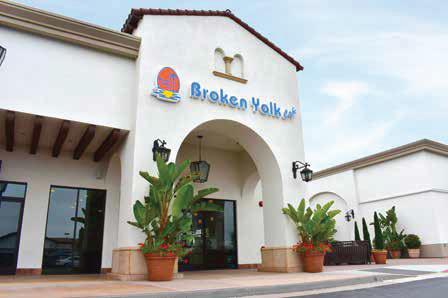
(All stores... not just the top quartile) 8-hour

“You can’t grow properly without having your infrastructure in place first.”
Baked Into the Business
Papa Murphy’s largest operator prepares for the future
Written by KEVIN BEHAN
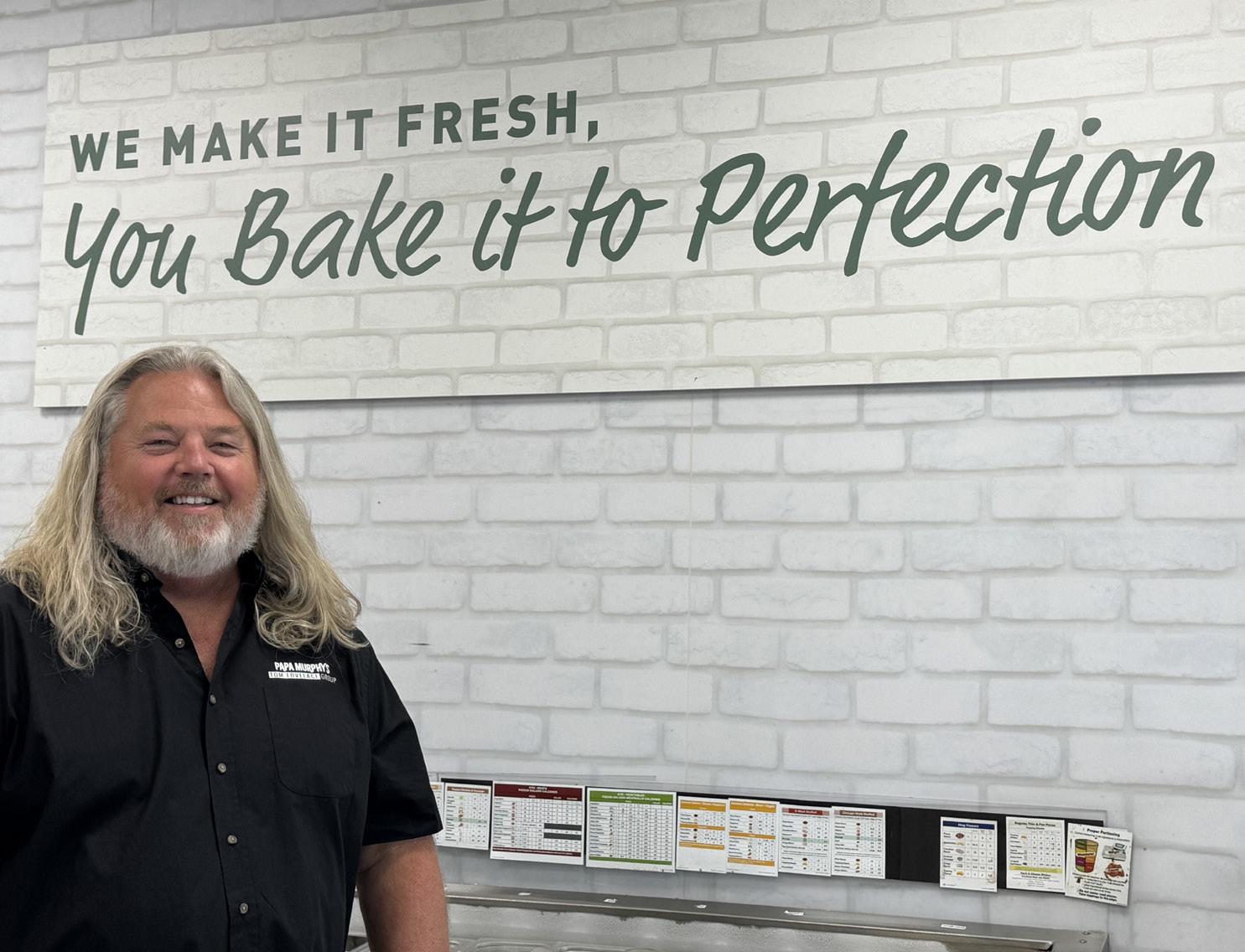
TOM LOVELACE
Owner/President
Company: Tom Lovelace Group No. of units: 96 Papa Murphy’s Age: 63
Family: Wife Lisa, 2 children, Jeremy, 42, and Jenn, 40, and 6 grandchildren
Years in franchising: 35
Years in current position: 35
Tom Lovelace’s nearly 50-year career in the restaurant industry will likely conclude within the next year. Before he turns over the reins of his 96 Papa Murphy’s units to his children, however, he has some things left to accomplish. Ever the restaurant lifer, Lovelace wants to optimize profitability and communication across each of his stores to ensure his business is in good hands for the next generation of his family.
Lovelace got his start in the industry as a busboy when he was 14 and worked in several restaurants as a teenager before heading to the University of Oregon on a football scholarship. After one year on campus, he decided he needed to take another direction in life by getting married and starting his career. At age 19, he married his girlfriend Lisa and enrolled in the McDonald’s management program.
“Forty-four years later, those proved to be the right decisions,” he says.
After spending 11 years as a manager in the McDonald’s system and learning all aspects of restaurant operations, Lovelace decided it was time to become an owner. He was attracted to Papa Aldo’s (later Papa Murphy’s), a burgeoning takeand-bake pizza franchise based in his native Pacific Northwest. Although he considered becoming a McDonald’s franchisee, Lovelace preferred Papa Aldo’s operational advantages of fewer hours and employees and a smaller store footprint than the burger chain. He and his brother Jim, who also worked at McDonald’s, purchased two stores from a local owner, but the acquisition came with stress.
“I was scared to death,” Lovelace says. “I went from having a secure paycheck every two weeks to mortgaging our house and putting everything on the line for something we believed we could do. Coming from McDonald’s, it was all about systems. So, it was the same experience for us, and it was an easy transition.”
For the first decade of his ownership, Lovelace only operated in Washington state. As the brand grew, he became its first franchisee in Canada in 2006 and operated 16 stores over three years north of the border. Today, he is the largest franchisee in the Papa Murphy’s system with 96 locations across 12 states.
Lovelace credits the franchise model with his ability to scale the business. He said having effective systems in place, including training programs and supply chain management, helped the most during his early years. He now relies upon strong marketing programs and assistance with real estate for new restaurants.
Over the next year, Lovelace will turn over ownership of the company to his two children, who have worked for him for two decades and have been brought along with a succession plan for the past five to six years. His son Jeremy is VP of operations, and his daughter Jenn is an accountant, and both will continue in similar roles after the transition. Although he will oversee legal matters in a chairman role, Lovelace looks forward to traveling more with his wife in the coming years, knowing the company is in good hands with his children at the helm.
PERSONAL
First job: As a busboy at a restaurant in Vancouver, Washington, when I was 14.
Formative influences/events: Growing up, we didn’t have much, but I excelled in football. I saw
my hard work pay off when I was awarded a scholarship to play Division 1 football. That mentality that you need to work hard to achieve your goals has stuck with me throughout my career.
Key accomplishments: In a joint venture with Papa Murphy’s International, we opened the first 16 stores in Canada. Our group was also the first Papa Murphy’s to operate branded locations within a professional sports stadium. For three years, we were the exclusive pizza provider for every event at Quest Field (now Lumin Field) in Seattle. At its peak, we grew our portfolio to 107 stores.
Biggest current challenge: There are a few. The quality and cost of labor in our restaurants. Another is the increasing costs of goods and real estate. All expenses continue to go up.
Next big goal: Completing my exit strategy by handing the business over to the kids.
First turning point in your career: Buying my first two Papa Murphy’s locations. Once we purchased the first two, it wasn’t long before we acquired our third and fourth, and we have grown exponentially since then.
Best business decision: To invest in great people and pour into them. I knew that if we were going to successfully expand, we needed to have good people to do it. We emphasized hiring the right people and developing them, so we had a strong bench of people in place for when we expanded.
Hardest lesson learned: You can’t grow properly without having your infrastructure in place first. When we first expanded out of Washington state and into California, we tried to do it on the cheap. We purchased three stores and ran them through Washington. It didn’t work, and it was a painful experience.
Work week: Six to seven days a week. I usually spend Monday through Friday in the office or traveling. I use the weekends to catch up or prepare for the upcoming week.
Exercise/workout: Not as much as I should, but I do get out and golf every now and then.
Best advice you ever got: Work really hard and then work harder to achieve your goals. It came from a coach during my football-playing days. Being big isn’t good enough. You have to work harder than the person across the line from you.
What’s your passion in business? I love to grow. I’ve had the privilege to help grow the overall Papa Murphy’s brand, along with my own organization, for the past 35 years. We went from around 70 stores to more than 1,500 at its peak.
How do you balance life and work? Being a family business, those lines have always been pretty blurred, but we’ve made it work. Business issues constantly come up during family time, but we only discuss them if we need to. We try to protect family time by discussing business later.
Guilty pleasure: Pizza.
Favorite book: Good to Great by Jim Collins.
Favorite movie: Anything with Will Ferrell in it. What do most people not know about you? I received a scholarship to play Division 1 football at Oregon, but after the first season, I actually gave my scholarship back, left school, and married my wife. I started my career rather than going back to college and began working with a franchisee of multiple McDonald’s. I worked my way up through the ranks and ended up running multiple stores for them.
Pet peeve: People who won’t do what is needed to achieve their goals.
What did you want to be when you grew up? A professional football player.
Last vacation: Fort Lauderdale, Florida, in April. Person you’d most like to have lunch with: President Donald Trump.
MANAGEMENT
Business philosophy: We believe that people come first, and every decision we make is guided by care, respect, and commitment to improving lives.
Management method or style: Put the right people in leadership positions and provide the necessary support and resources to succeed.
Greatest challenge: Staffing our stores with great people. Before Covid, we could be selective in our hiring process, and many employees were high school and college age. Now, the quality of the hiring pool is different. People have less of a connection to the brand. It is now more difficult to identify people and develop them.
How do others describe you? A man of faith who is hardworking, loyal, and, hopefully, kind and caring.
Have you ever been in a mentor-mentee relationship? What did you learn? When I first started in the QSR space with McDonald’s, I learned a lot from the local owner on how to run multiple locations. That’s stuck with me throughout my career. I’ve also had the privilege to mentor many young men and women over the years and learned that everyone responds differently to pressure and accountability. Some thrive in that environment while others shrivel away.
One thing you’re looking to do better: Communication, both personally and within our organization. It can be a challenge with an organization of our size. I’ve tried to work on it over the years, and it will be a priority for me for the rest of my time in the business. I don’t need many people around me, and I can work alone, which can be a detriment. I need to work on getting the buy-in from all our employees and motivating them effectively. How you give your team room to innovate and experiment: We provide them with the opportunity to make their own decisions on a dayto-day basis (within reason). For example, if they think we need to focus more on digital or local store marketing over print, we empower them to make those decisions and own the initiative.
How close are you to operations? Not as close as I used to be. My son Jeremy is the VP of operations and has run operations for years, and he does a great job. However, I love being in our stores with our crews and customers. I would do that every day if I could.
What are the two most important things you rely on from your franchisor? Effective marketing that grabs people’s attention and attracts them into our stores. We also expect the flawless execution of initiatives.
What you need from vendors: Great pricing, excellent service, and on-time deliveries.
Have you changed your marketing strategy in response to the economy? How? It seems like everyone is trying to play in the value space right now. We have always been there, so it is getting crowded, but it’s one of the many things that makes Papa Murphy’s great and keeps customers coming through the door.
How is social media affecting your business? Positively for the most part. But trying to stay relevant and current can be challenging. The key is to be genuine and prompt in how we respond to comments from our guests.
In what ways are you using technology (like AI) to manage your business? We continue to test ways to be more efficient and provide a better guest experience with AI, such as phone answering and projection models.
How do you hire and fire? We try to adhere to the saying “slow to hire, quick to fire.” However, during Covid, we really struggled to keep great employees in the stores. Now, it’s becoming a bit easier to build out a great bench of people who are motivated to become leaders.
How do you train and retain? With our management style, we try to ensure that those who are training and retraining believe in our process and see the benefits of a fully trained employee.
How do you deal with problem employees? Head on. We encourage our leaders to invest in and coach all our staff until they feel there is no return on investment.
Fastest way into your doghouse: Dishonesty and laziness.
BOTTOM LINE
Annual revenue: $60 million.
Goals over the next year: I would like to finetune our operations by improving the customer service and profitability in all our stores. If a store is not performing properly, we need to figure out if it is the right location for us.
Growth meter: How do you measure your growth? I look at growth in more than just numbers. To me, real growth is when people become more confident, step into new challenges, and work better together. It shows up when the team communicates more openly and supports each other. It’s when guests can feel the difference in their

experience with us. The numbers matter, but the biggest sign of growth is seeing our people thrive.
Vision meter: Where do you want to be in five years? 10 years? I love what I do, but I know my kids are more than ready to take over the business. The business will be in good hands, so my wife and I look forward to more travel.
Do you have brands in different segments? Why/why not? We do not. We decided early on that we would stay focused on one thing and do it well.
How is the economy in your region(s) affecting you, your employees, your customers? The economy is affecting everyone nationwide, and our locations are in various markets, but we’re leaning into the fact that Papa Murphy’s offers value deals to help offset these impacts.
Are you experiencing economic growth in your market? We have stores all across the country, so it does vary market to market. We’ve seen growth in Tucson, Arizona, for a while and the entire state of Texas with so many people moving there. How do changes in the economy affect the way you do business? We have to trust our leaders in each market to advise us of what is happening locally so that we can react quickly. Based on that information, we can decide to be more aggressive with our promotions or be more involved with local store marketing.
How do you forecast for your business? We look at the trailing 12 months and factor in marketspecific data to forecast future sales.
What are the best sources for capital expansion? Early on, we made the decision that we would
try to expand our portfolio through existing cash flow and have very little debt, which we’ve been able to accomplish.
Experience with private equity, local banks, national banks, other institutions? Why/ why not? Local banks, but other than when we first started and one-time specific needs, we haven’t used them very often.
What are you doing to take care of your employees? We’re showing them daily that we’re invested in their growth and providing leadership pathways to those who excel in their roles.
We try to make everyone feel valued and be consistent with that. It is so expensive to onboard someone. Turnover costs money, so retention is a priority. We have awards for longevity, which is uncommon in this industry.
How are you handling rising employee costs (payroll, minimum wage, healthcare, etc.)? We try to control our expenses as best we can, but as costs go up, we are forced to consider all options. We have stores in multiple states, so it varies depending on where we’re doing business. All we can do is manage our controllables.
What laws and regulations are affecting your business, and how are you dealing with them? Since we operate in multiple states, we have to comply with a wide range of mandates, some of which are more business friendly than others. Our team works hard to stay ahead of new legislation to ensure that we are always in compliance. It’s a complex but necessary part of doing business at this scale. The most challenging regulations are in Washington, Oregon, and California, and they involve scheduling and minimum wage.
How do you reward/recognize top-performing employees? Outside of the previously mentioned incentives, we pride ourselves on promoting from within. These promotions come from our top performers and have allowed us to grow over the years.
What kind of exit strategy do you have in place? I anticipate exiting within the next year. We started planning my exit five to six years ago. My kids have been involved in the business for more than half their lives, and from the beginning, the plan has been to have them carry on the legacy.

33 stores open YTD, with an average of 1+ opening per week for the rest of 2025. GROWTH MOMENTUM
850+ Total Locations



Our biscuits and breakfast favorites don’t just open the day, they open opportunity.

Development Incentives Available 273 Corporate Locations

Minimum Commitment of 3 Units
150 new units signed across New Jersey, Texas, New York, Tennessee, Ohio, Michigan, and more in 2025
Recent openings in Texas, Nevada, Florida, New Jersey, and Colorado.

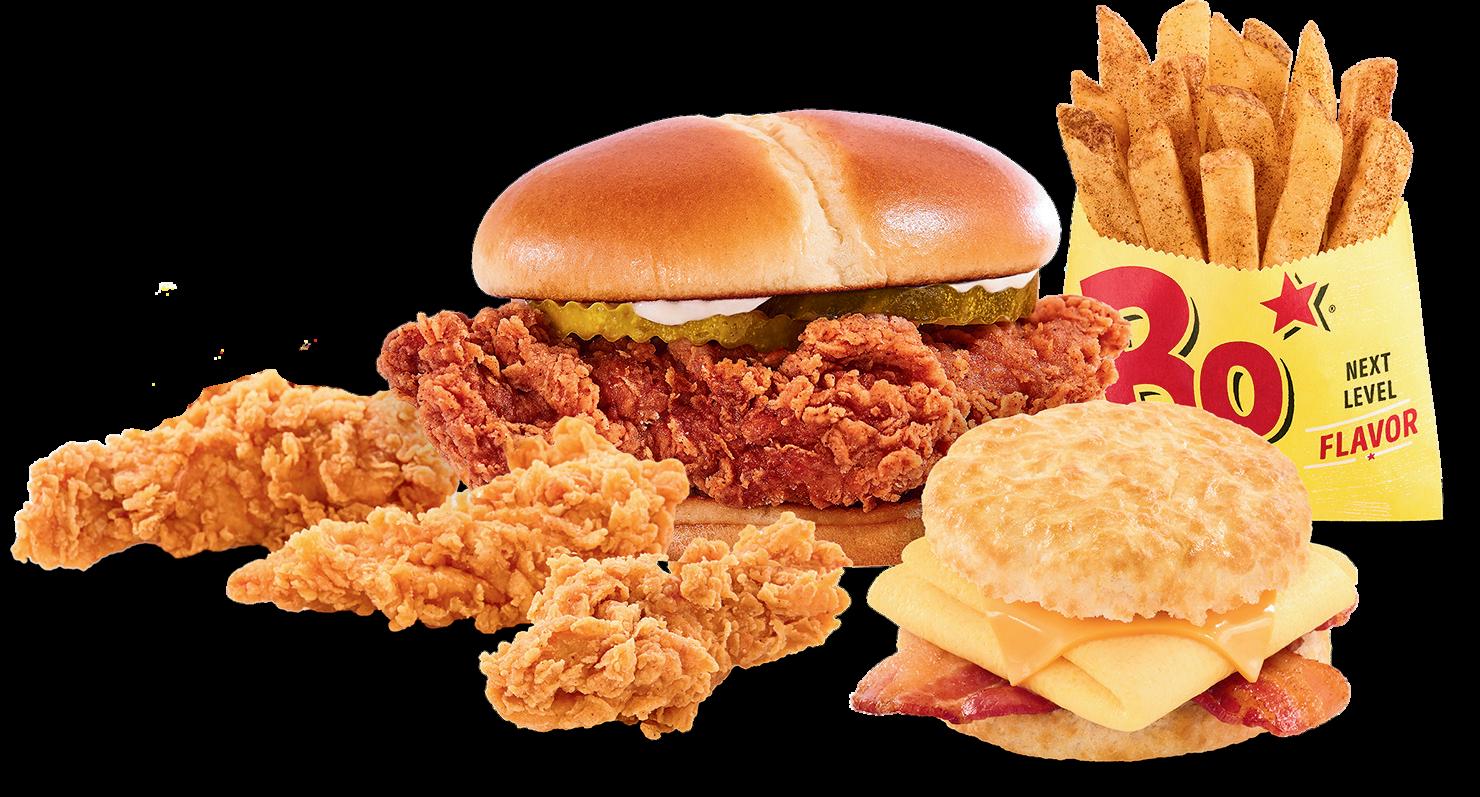



Cynthia Maxwell
“Looking back at that girl when I was younger, I am very proud of her and grateful I didn’t give up.”
“Relentless in Life”
From humble beginnings to Drybar’s second-largest franchisee
Written by KEVIN BEHAN
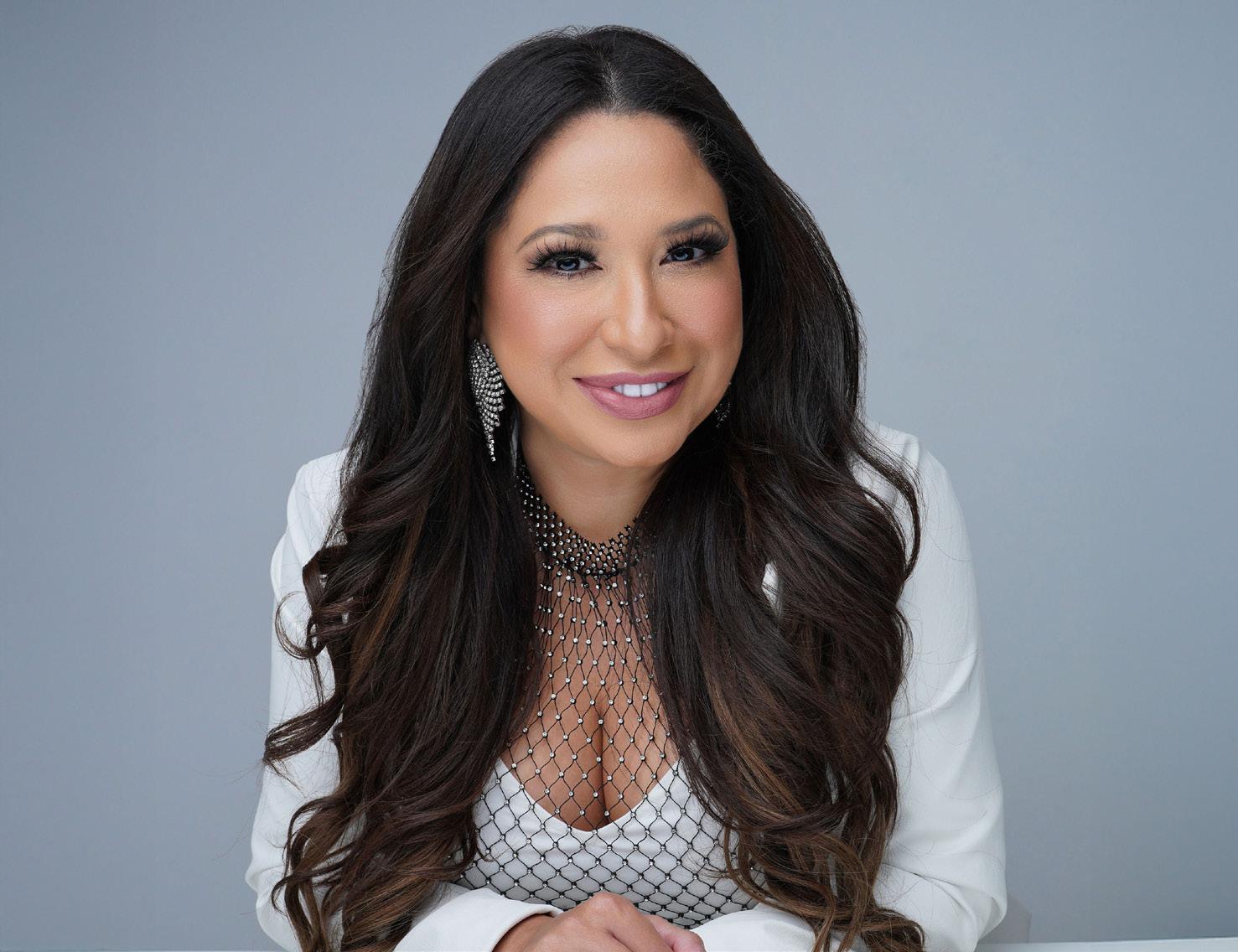
CYNTHIA
CEO
Company: Maxwell Group
No. of units: 10 Drybar
Family: Husband Derek and 5 children, Alexis, Margarito, Karlina, David, and Sky
Years in franchising: 20
Years in current position: 20
Cynthia Maxwell reflects on her childhood with perspective: “We were poor, but life was good.” She didn’t realize the extent of her family’s financial struggles then, but those challenges fueled her drive to become a powerhouse entrepreneur, building business assets across a wide range of industries.
The oldest of five children and daughter of a truck driver and a preschool teacher, Maxwell did not think much about money while growing up in a colonia in Weslaco, Texas, near the U.S.-Mexico border. However, an experience in elementary school changed her perception and inadvertently fueled her drive in life.
After a long day on the road, Maxwell’s father came home exhausted, but when his kids asked to go to the beach, he didn’t hesitate. The family piled into their GMC truck, spent the night on a mattress
in the back, and fell asleep under the stars. When Maxwell proudly discussed her memorable experience upon returning to school, a classmate chimed in about her family’s stay at a beach house.
“That is when I realized we were poor,” Maxwell says. “It was at that time that I decided I was going to own a beachfront property someday. I didn’t know how I was going to do it, but I was going to make it happen. From that point on, I became relentless in life.”
By high school, Maxwell was already hustling as an entrepreneur, selling purses out of the trunk of her car. She quickly expanded into neighboring school districts, local hospitals, and house parties, adding jewelry to her product line along the way. A few years later, she expanded her business career by purchasing a consignment store.
Today, she is the founder and CEO of the Maxwell Group, a firm with more than 32 businesses spanning real estate, private equity, luxury retail, distribution, medical, tech, staffing, and health and wellness. Maxwell previously owned two staffing franchises and currently operates 10 Drybar locations with more expected to open by the end of the year as she follows her plan to become the brand’s largest franchisee. She’s currently in second place. Maxwell also plans to expand her portfolio with a quick-service restaurant brand.
She was a customer at several Drybar salons in California and knew that franchising provides a proven playbook for owner success. Coming out of the pandemic, Maxwell decided to purchase several units. Running salons carried a personal connection, reminding her of childhood trips with her grandmother for haircuts.
“The first time I got my hair cut and it was blown out straight was when I was about 10 years old. I felt like I was the most beautiful person in the world,” she says. “I received so many compliments and saw how good going to a salon could make people feel about themselves. The beauty industry always fascinated me, and I became interested in owning a salon.”
Maxwell relishes the role of being a mentor and providing advice for others, especially aspiring female entrepreneurs. Before his death several years ago, Maxwell’s father encouraged her to inspire people by sharing her life story. Those experiences have provided a clear perspective on life.
“I’ve learned to live moment by moment and be very appreciative for today because nothing is promised to us,” Maxwell says. “I’m very proud and humbled that God has given me grace. Looking back at that girl when I was younger, I am very proud of her and grateful I didn’t give up. Life is good right now.
I aspire to do more in the future, but in the present moment, I feel blessed.”
PERSONAL
First Job: Selling purses out of the trunk of my car to teachers while I was still in high school. I later expanded it to other school districts and even started hosting house parties for teachers and their friends.
Formative influences/events: My first job taught me how to connect with people, build trust, and find creative ways to make a sale, and it was something I revisited years later as a single mom, trying to make ends meet. My father was a huge influence on me. He believed in me and gave me the space to figure things out on my own. That belief planted the idea that my destiny was in my hands, a mindset that carried me through some of the hardest, darkest moments in my life.
Key accomplishments: My kids are my proudest accomplishments. They’ve shaped my vision, my values, and the way I move through life. They’ve given me grace, love, and perspective, especially during the moments I felt lost. Professionally, when I finalized my first real estate deal that made me my first million, it gave me confidence in myself and the knowledge that I wanted to do something big.
Biggest current challenge: Making sure we hire the right people. I have an extensive background in staffing, and that has helped our portfolios thrive. I set high goals for our business and the people we hire. It is crucial to find the right people to match your culture.
Next big goal: To become the largest franchise group in the Drybar system. I am passionate about the brand and love the way its services make people feel. I am currently the second-largest franchisee, and I’m on track to become the largest.
First turning point in your career: After starting by selling purses from my car, I opened my first consignment boutique, which became the foundation for everything that followed with multiple brands, real estate ventures, and global expansion. This led me to my opportunities with Drybar, and I’m lucky to say I’ve taken on the challenge of expanding the brand from coast to coast with the goal of becoming the largest franchisee in the system.
Best business decision: When I sold one of our companies that had multiple locations across the U.S. It was a highly lucrative and profitable business and one we had poured years of work into scaling. But when the right offer came, we knew it was time. Saying yes to that deal wasn’t just about the price; it was about the timing, the vision, and the doors it would open. That sale gave us the freedom and capital to expand into new industries, build more platforms, and create opportunities for others. It was a defining moment that allowed us to elevate from running one successful brand to building a diverse and global portfolio.
Hardest lesson learned: When I was a young entrepreneur, I bought a business without doing the proper due diligence. I incorrectly assumed the
seller shared the same values, integrity, and transparency that I hold. The business turned out to be unscalable, and we faced significant challenges as a result. This experience taught me the crucial importance of thoroughly vetting every opportunity, no matter how promising it seems and reinforced that due diligence is nonnegotiable.
Work week: I prioritize setting clear goals with my leadership teams, reviewing performance metrics, and addressing key challenges. Throughout the week, I also carve out time for innovation and personal development to stay sharp. Even with everything going on, I prioritize my family because they keep me grounded and energized.
Exercise/workout: I mix it up with strength training, yoga, and long walks to clear my head. Some days, it’s a quick 30-minute sweat session. Working out keeps me focused, balanced, and mentally sharp.
Best advice you ever got? “Don’t play small just because it makes other people comfortable.” That came from Ray Nelson, a real estate developer whom I admired. It changed everything for me. It reminded me to trust my instincts, take bold risks, and stay focused on the vision even when others didn’t see it yet. It’s helped me move with confidence, build unapologetically, and stay true to who I am, no matter the room I walk into.
What is your passion in business? Building with purpose and investing in brands and opportunities that not only grow, but make a real impact. I love turning a vision into something tangible, something that creates jobs, opens doors, and inspires others. How do you balance life and work? It’s not always perfect, but I’ve learned to be intentional. I schedule time for both with the same priority. When I’m working, I give it my full focus. But when I’m with my family, I’m present. I’ve had to let go of the idea that balance means equal time; it’s more about being fully where I am.
Guilty pleasure: Hot chocolate and a great book—hands down.
Favorite book: The Alchemist by Paulo Coelho. Favorite movie: One of my favorite movies is “The Pursuit of Happyness.”
What do most people not know about you? I love to bake, and according to my family, I make the best homemade pumpkin rolls.
Pet peeve: Gossip and mean-girl energy. I can’t stand it. I believe in women supporting women, not tearing each other down.
What did you want to be when you grew up? I always knew I wanted to be an entrepreneur.
Last vacation: I spent a full month in August 2025 in California at Carmel-by-the-Sea and Big Sur. It was peaceful, grounding, and exactly what I needed.
Person you’d most like to have lunch with: Warren Buffett. His wisdom, long-term thinking, and ability to stay calm and strategic through decades of change are qualities I really respect.
MANAGEMENT
Business philosophy: Build with purpose, lead with integrity, and never lose sight of the people. Every brand I build and invest in is a reflection of vision, culture, and long-term impact.
Management method or style: I lead with trust, clarity, and high expectations. I hire people I believe in. I’m direct and clear about the vision, what we stand for, and where we’re going. I expect excellence, but I also lead with heart. I’ll support and challenge my employees, and I’ll always keep it real.
Greatest challenge: Learning to let go of control, people who no longer align, and the idea that I have to do it all myself. As the business grew, I had to shift from being in everything to trusting others to lead, which wasn’t easy for me. But I’ve learned that scaling a vision means building strong teams, setting clear expectations, and letting go of what no longer serves the bigger picture.
How do others describe you? People often describe me as driven, passionate, and real.
Have you ever been in a mentor-mentee relationship? What did you learn? Yes, both as a mentee and a mentor. Early on, I had a few key people who poured into me, and I learned the value of listening, asking questions, and being open to growth. Now, I’m in a place where I get to mentor others, and that’s honestly one of the most rewarding parts of what I do. It has taught me that leadership isn’t just about what you build; it’s about who you help build along the way.
One thing you’re looking to do better: I’m working on feeling more comfortable speaking in front of large groups. Public speaking doesn’t come naturally to me, and I get nervous, but I know that using my voice more confidently can help me inspire others and make a bigger impact.
How do you give your team room to innovate and experiment? I empower my team by giving them autonomy to test new ideas and take ownership of projects. I believe the best innovations come when people feel empowered and supported.
How close are you to operations? My role is to provide a clear vision and guidance while empowering the people on the ground to execute. Staying connected to operations helps me spot opportunities, solve problems quickly, and keep the culture strong.
What are the two most important things you rely on from your franchisor? I count on open communication and partnership. When challenges or new opportunities arise, having a franchisor who listens, collaborates, and adapts makes all the difference. Wellbiz Brands, for example, does a fantastic job of supporting its franchisees. Regardless of our vision for expansion, they are with us every step of the way.
What you need from vendors: Reliability and quality are nonnegotiable. I need vendors who deliver on time and provide products or services that meet high standards. Good pricing is also really important, especially because sometimes vendors know they’re the only option within the system.

Have you changed your marketing strategy in response to the economy? How? Yes. We’ve made changes in that area. People are spending more carefully, so we focused on adding value, strengthening customer relationships, and being intentional with our marketing spend. How is social media affecting your business? It’s huge. Social media is where we tell our story and connect with our clients in real time. It drives business, but it also gives us a way to listen to what people love, what they react to, and what they want more of.
In what ways are you using technology (like AI) to manage your business? We’re leveraging AI to work smarter, not harder. From automating backend operations to personalizing customer experiences, it’s helped us move faster with better precision.
How do you hire and fire? I hire based on character, hunger, and alignment with our culture.
Skills can be taught, but mindset can’t. I look for people who are solution driven, team oriented, and willing to grow. When it comes to firing, I don’t hesitate if someone consistently lacks accountability or disrupts the culture. We’re building something great, and there’s no room for energy that doesn’t match the vision.
BOTTOM LINE
Goals over the next year: We want to scale and continue to expand strategically. We’re aligning ourselves with brands and partners that inspire us and match our energy.
Growth meter: How do you measure your growth? I measure growth in more than just numbers. Of course, revenue and expansion matter, but I also look at how strong our team is, how loyal our clients are, and whether we’re creating opportunities in new markets. Growth to me is when the business is scaling, the culture is thriving, and both employees and customers want to stay connected to what we’re building.
Vision meter: Where do you want to be in five years? 10 years? In five years, I see us scaling with intention, building outstanding brands that inspire, disrupt, and lead in their industries. I want to be surrounded by powerful teams, many of whom have grown with us and now lead with confidence and clarity. Most of all, I want to be at the forefront of a cultural shift where women are breaking boundaries, owning their power, and redefining what leadership looks like. In ten years, it’s about legacy. I see a global footprint, equity in the hands of our teams who helped build it, and a pipeline of bold female founders we’ve invested in and mentored. We’re building a world where women don’t just rise; they lead, they own, and they change the game unapologetically.
Do you have brands in different segments? Why/why not? Yes. I believe in diversification. I build and invest in companies across beauty, real estate, health and wellness, medical, retail, and fashion. This balance allows me to reduce risk and create opportunities for cross-industry synergy. How is the economy in your region(s) affecting you, your employees, your customers? The economy impacts labor costs, consumer spending, and operations, but my focus is on adapting quickly. Customers today want quality and experiences, and my employees are trained to deliver on that consistently.
Are you experiencing economic growth in your market? Yes. But it looks different than before. People are more intentional about where they spend their money.
How do changes in the economy affect the way you do business? They keep me flexible. I’ve learned not to get too comfortable. If something shifts, we adapt, whether that’s pricing, operations, or even how we market.
How do you forecast for your business? I use both data and intuition. I look at performance met-
rics and market trends, but I also trust my instincts. After years in business, I can usually feel where the consumer is heading.
What are the best sources for capital expansion? For me, reinvesting profits has been the best route. But I think it depends on the stage of the business. Sometimes, a strategic partnership or a bank is the right move.
Experience with private equity, local banks, national banks, other institutions? Why/ why not? Primarily with local banks. You may have relationships with them, and they know you are building something within their community. That was my first lending experience. Whatever profit we make, we pour back into the business.
What are you doing to take care of your employees? Taking care of my employees is at the heart of everything we do. We invest in their growth with training, mentorship, and leadership development. We celebrate milestones and foster a positive work environment.
How are you handling rising employee costs (payroll, minimum wage, healthcare, etc.)? To offset these expenses, we’re focused on driving operational efficiency, scaling our businesses, and creating new revenue streams. This approach allows us to stay ahead of the curve, remain competitive in compensation, and ensure that our team members have stability and growth opportunities even in a changing economy.
What laws and regulations are affecting your business, and how are you dealing with them? Because we operate across the country, we see firsthand how laws and regulations impact both businesses and the people they employ. California has some complex regulations that have made it difficult for investors and entrepreneurs to grow there. Minimum wage in California is a big issue. We try to keep our costs down, but it is challenging with the minimum wage in the state being so high. We have to control what we can control with our expenses.
How do you reward/recognize top-performing employees? Recognition is a cornerstone of our culture. We celebrate success through performance-based growth opportunities and public acknowledgment of achievements. For those who go above and beyond, we’ve even gifted life-changing rewards, including cars, trips, and unique experiences.
What kind of exit strategy do you have in place? I don’t have an exit strategy right now. I truly love what I do, and my focus is on continuing to grow, creating more opportunities for our team, and building a legacy we are proud of.



Tracy Savasta
“If it is right for the member or customer and if it is right for the business.”
Working Out
Entry-level hire becomes top female-led Anytime Fitness franchisee
Written by KEVIN BEHAN

TRACY SAVASTA
Franchise Owner
Company: AF Midwest Holdings DBA
Anytime Fitness
No. of units: 13 Anytime Fitness
Age: 50
Family: Husband Ryon and 2 daughters, Alyssa, 28, and Aria, 22
Years in franchising: 8
Years in current position: 8
Tracy Savasta lives by the saying, “Find something you love to do, and you’ll never work a day in your life.” She started as a fitness enthusiast and then became an entry-level employee at Anytime Fitness. Now, she owns 13 Anytime Fitness locations, and she’s driven to help others build meaningful careers in the fitness industry.
That passion wasn’t always there. In the first half of her career, Savasta cycled through sales and management roles that felt like little more than paychecks. Then one day, she stretched on the gym floor after a workout, looked around, and wondered: What if I made this my career?
When she floated the idea at home, her husband, Ryon, told her she was crazy and insisted there were no real opportunities in the fitness business. But fate intervened. Ryon, who worked in commercial real estate, had a connection with Anytime Fitness
franchisee Andy Gundlach and introduced them. Soon after, Tracy accepted an $11-an-hour sales job at one of Gundlach’s clubs. It was a humble starting point that launched her career in fitness.
Over the next seven years, she climbed through five different roles, eventually serving as area manager and VP of operations. In 2017, she took the leap that would define her career by becoming an Anytime Fitness franchisee.
“The experience I learned under Andy about how to scale a business was absolutely huge,” Savasta says. “I loved it and would have worked inside a gym seven days a week for free. I didn’t come into this thinking of becoming an owner. Each new position was a microstep in my development. Becoming a franchise owner just felt like the next logical step. My personality is always looking to grow.”
The fitness industry has been a perfect fit for Savasta, who has run several half and full marathons. She works out daily and views exercise as the foundation for being her best self. She also focuses on helping clients reach their health goals and helping staff members achieve their career goals in the fitness industry. While many competitors pay based primarily on commission, Savasta’s group offers guaranteed compensation, 401(k) plans, PTO, and medical benefits.
“That is personal to me,” she says. “I think back to the conversation with my husband and how we would pay the bills by having a job in fitness. I was fortunate to find a career with Andy, starting at $11 an hour and moving up to a VP position. I want to be able to give a stable career path like that to others who are passionate like I am.”
Savasta is in growth mode. She runs 13 Anytime Fitness clubs today and is pushing toward 20–25 by opening two to four new locations each year. Many of her acquisitions have been underperforming gyms, which she sees not as setbacks but as opportunities to revive the brand and deliver a strong fitness experience to the community.
As she scales, Savasta keeps her business closeknit. All her clubs are clustered within an hour of each other in Minnesota’s Twin Cities and western Wisconsin. The strategy builds a strong culture and family feel. Her own family is also deeply involved. Her husband traded real estate for the role of CFO, their older daughter manages HR and administration, and their younger daughter leads marketing and social media. Together, they’ve turned Anytime Fitness into a family business and community force.
PERSONAL
First job: I worked on my family’s dairy farm from a young age until I went to college. That experience taught me discipline and responsibility.
Formative influences/events: Joining the fitness industry 15 years ago changed my career path, ultimately leading me to franchise ownership. For the first time in my career, I had a job I was truly passionate about.
Key accomplishments: I’ve completed several half-marathons and three full marathons. I’m also humbled and proud to be the largest female-owned franchise group in the Anytime Fitness system.
Biggest current challenge: Trying to slow down and enjoy life. I’m the type of person who usually goes all-out, and I have a major commitment to growing the company. I have to make sure I find a balance in life.
Next big goal: Getting to 20 units in the next five to seven years.
First turning point in your career: Being given the opportunity to step into a multi-unit leadership position working for an Anytime Fitness franchise owner. This paved the way for my leap into ownership. I started as an assistant manager and progressed to a vice president of operations role. Before that, I had been in management in sales in various industries, but nothing ignited my passion like the fitness industry.
Best business decision: Doubling down on business growth following the Covid-19 pandemic. At the time, the future of the fitness industry was uncertain. We opted for aggressive growth by doubling our number of gyms from three to six in 2021 and adding two more locations again in 2022. Those moves really helped accelerate our growth coming out of the pandemic.
Hardest lesson learned: Having to change our business model and staffing to adapt to the change in market conditions. There’s a lot of noise in the Twin Cities with all types of gyms from boutique to large gym brands. Initially, we had a more robust staffing plan, but to increase our revenue, we quickly learned that we didn’t need as many staff members but rather staff who could wear multiple hats.
Work week: My weeks are a blend of strategic oversight, hands-on support, and team development. I spend time connecting with our club leaders, reviewing performance metrics, and helping solve problems in real time, whether that’s through site visits, Zoom calls, or coaching sessions. There’s also a big focus on collaboration with our leadership team to make sure we align on goals, stay true to our mission, and improve how we operate. Each week looks a little different, but at the core, it’s about building strong teams, maintaining high standards, and creating a culture that delivers both results and a great member experience.
Exercise/workout: I work out six to seven days a week. I love an outdoor walk every day and incorporate weights two to three times a week.
Best advice you ever got: You always need to take imperfect action or fail forward. If you stop for too long, you’ll become a dinosaur. You have to continue innovating and trying new things.
What’s your passion in business? My passion is twofold. First, I’m deeply driven by helping our members and clients become stronger, healthier, and more confident through fitness. Seeing lives change because of consistent, supportive training environments is incredibly fulfilling. Second, I’m equally passionate about creating career paths in the fitness industry. I’ve been fortunate to build a career here, and I want to open that door for others. That means offering stable income, growth opportunities, and meaningful benefits, things that aren’t always common in this field. For me, success is building a business that supports the transformations of clients and employees. We believe in employee development at a high level.
How do you balance life and work? I work when I am inspired to work, and I take breaks and time off when I feel I need it. I am energized by my work, not the opposite.
Guilty pleasure: Sitting down with a good book. Favorite book: Multi-Unit Leadership by Jim Sullivan. It is the best book for multi-unit leaders. Favorite movie: “Pretty Woman.”
What do most people not know about you? That I grew up on a farm and that I know how to milk cows.
Pet peeve: Slow movers or indecisiveness.
What did you want to be when you grew up? I don’t think I ever knew. My family is secondgeneration farmers, and I just knew I didn’t want to stay on the farm.
Last vacation: Stayed at a Vrbo on Castle Rock Lake in Wisconsin with my family in June.
Person you’d most like to have lunch with: With entrepreneur Leila Hormozi. I really look up to her as a strong female role model who’s built a successful business from scratch.
MANAGEMENT
Business philosophy: Our business philosophy centers around three pillars: people, process, and product. From building strong teams, investing in their growth, and creating meaningful connections with our members, we believe everything starts with people. From there, it’s about refining our processes so that operations run smoothly and consistently, ensuring the experience we deliver is reliable and scalable. Finally, the product ties it all together by providing a high-quality fitness experience that truly delivers results. When people, process, and product are aligned, growth and member satisfaction naturally follow.
Management method or style: Direct and hands-on.
Greatest challenge: Letting go. When you start as an owner-operator of one or two units, you do
What’s your passion in business?
My passion is twofold. First, I’m deeply driven by helping our members and clients become stronger, healthier, and more confident through fitness. Seeing lives change because of consistent, supportive training environments is incredibly fulfilling. Second, I’m equally passionate about creating career paths in the fitness industry. I’ve been fortunate to build a career here, and I want to open that door for others. That means offering stable income, growth opportunities, and meaningful benefits, things that aren’t always common in this field. For me, success is building a business that supports the transformations of clients and employees. We believe in employee development at a high level.
Tracy Savasta
everything. By the time you grow to three units, you realize it’s too much for one person to handle. It can be challenging to let go. It’s been a progression of making myself let go and giving responsibilities over to other people.
How do others describe you? Driven, motivated, and goal oriented.
Have you ever been in a mentor-mentee relationship? What did you learn? Andy Gundlach, the Anytime Fitness franchisee under whom I started. I was with him for seven years, and when I started, he had just six units. I was able to run every level of business growth with him, and in those seven years, he expanded to 29 units. It was through that mentorship that I was able to step into ownership and scale the way we had done together.
One thing you’re looking to do better: Have more patience and let go of the little things.
How you give your team room to innovate and experiment: I encourage my team to approach problem-solving through a simple but powerful framework: if it is right for the member or customer and if it is right for the business. That also applies if it is right for the staff. When a solution checks all three boxes, we know we’re making a decision that supports long-term success not just for one person or department, but for the organization as a whole. It helps create clarity, alignment, and accountability across the team.
How close are you to operations? I am very hands-on with my director of operations to ensure that we have the best systems and processes for our team to ensure that they can be successful in their positions.
What are the two most important things you rely on from your franchisor? Big-picture market trends, ops, and SOP playbooks or best practices.
What you need from vendors: I appreciate quality options at reasonable prices and having extended warranties.
Have you changed your marketing strategy in response to the economy? How? We have changed our marketing strategy based more on the pressure from the competition in the market as opposed to the economy.
How is social media affecting your business? It allows us to connect with our members and community. I think it was a bigger factor three to five years ago, but it is still a great way to educate our community about who we are.
In what ways are you using technology (like AI) to manage your business? I’m starting to incorporate AI in some of our processes. Ideally, I would like to use AI to streamline operations and make smarter, faster business decisions.
How do you hire and fire? We focus on finding the right cultural fit and then provide them with every opportunity to succeed before letting them go. It only happens after we’ve exhausted all other options. How do you train and retain? We focus on first finding the right culture fit and then have really
homed in on our onboarding process for the first 30–90 days. We adopted this process about two years ago and have seen great results with our retention. How do you deal with problems with employees? It starts with overcommunicating our expectations and what they need to do to meet or exceed those expectations. We give them a chance with a 90-day track to show us, and then we’ll reevaluate. Fastest way into your doghouse: Not following through on a promise.
BOTTOM LINE
Annual revenue: $5.8 million.
Goals over the next year: Growth through acquisition of two to four locations over the next year and to increase same-store sales by 12%.
Growth meter: How do you measure your growth? Our costs are pretty fixed, so we measure growth through increased revenue.
Vision meter: Where do you want to be in five years? 10 years? Owning 20–25 units. Our goal is to open two to four units per year with a total of 20 to 25 units in operation. We want to keep within an hour of each other.
Do you have brands in different segments? Why/why not? No. We believe in staying focused on one brand.
How is the economy in your region(s) affecting you, your employees, your customers? Everyone is more price conscious, so we’re doubling down on offering high-value benefits, such as additional perks for our employees or members.
Are you experiencing economic growth in your market? While the Twin Cities market overall is experiencing slower economic growth, we’ve continued to see strong momentum within our clubs. Fitness is one of those areas where people still prioritize their health and well-being even when they’re more cautious with spending. We’ve been able to grow by focusing on value and community.
How do changes in the economy affect the way you do business? We have to adjust in order to meet the demands of our members. For example, during the Covid-19 pandemic, we transitioned to operating as a remote company and offered virtual personal training sessions. We continued to offer those up until just a few months ago. We want to make sure our members get the most out of their gym membership.
How do you forecast for your business? Annual projections at the end of the year are used to forecast through the upcoming year.
What are the best sources for capital expansion? Local lenders.
Experience with private equity, local banks, national banks, other institutions? Why/ why not? We do not use private equity or national banks. We prefer local lenders.
What are you doing to take care of your employees? We provide a 401(k) with employer
match and both paid and unpaid PTO to be as flexible as we can be to provide work-life balance. We also offer premium health, dental, and vision coverage. One of the biggest things that we have found in the fitness industry is that there are few options for a career track with stable pay. One of the biggest gaps we’ve seen in the fitness industry is the lack of career paths with stability, benefits, and long-term growth, and we’re committed to changing that. How are you handling rising employee costs (payroll, minimum wage, healthcare, etc.)? We are absorbing it and providing benefits packages.
What laws and regulations are affecting your business, and how are you dealing with them? One key regulation currently affecting our business is Minnesota’s new law prohibiting employers from holding employees to noncompete agreements. While we understand the intent of the law, it presents a unique challenge for us. We invest significant time and resources into onboarding and developing our staff, ensuring they are equipped to deliver a high-quality member experience. Without the ability to utilize noncompete agreements, there is an increased risk of employees taking this training and moving to competing fitness clubs, especially given the high level of competition in the Twin Cities metro area. To adapt, we are focusing on strengthening employee engagement, fostering a positive company culture, and continuing to create growth opportunities within our organization to retain talent and make our team feel invested in long-term success with us.
How do you reward/recognize top-performing employees? We offer performance-based bonuses and promotions to higher-level leadership positions. Every year, we have a holiday party where we honor top performers.
What kind of exit strategy do you have in place? We don’t have a specific exit plan in place right now. We enjoy what we are doing, and when the time is right, we have a few options that we are considering.

































































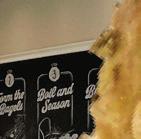

















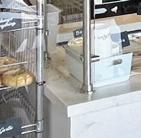


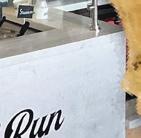
























$245,051


























$1,252,496










Experienced Franchisor. Aggressively Expanding. Inquire Today.





*Based on the top Jeff's Bagel Run affiliate-operated store open and operating for a full fiscal year as of 12/31/24. There were two Jeff's Bagel Run affiliate-operated stores open and operating for a full fiscal year as of 12/31/24. The store with the lowest Sales was $841,884 and the lowest Net Profit was $49,991. “Sales” include all revenues, except tips and taxes. “Net Profit” is Sales minus the cost of goods sold, payroll, rent, store-level office and general operating expenses, utilities, merchant fees, local advertising and imputed 2% marketing fund contribution, and imputed 6% royalty, but with no deduction for amortization or depreciation. Additional information can be obtained from JBR Franchise Co's Franchise Disclosure Document. This advertisement is not an offering. An offering can only be made by prospectus filed first with the Department of Law of the State of New York. Such filing does not constitute approval by the Department of Law. MN – 11233. JBR Franchise Co, 4190 Millenia Blvd., Orlando, FL 32839










“That door opened, and I decided to walk through it.”
The Georgia Bulldog of Franchising
Franchisee sets high standards for himself and his team
Written by KEVIN BEHAN

DAVID WEEKS
CEO
Company: The Bean Team
No. of units: 9 Barberitos, 8 Dunkin’, 4 Newk’s Eatery, 1 Dunkin’/Newk’s co-brand Age: 52
Family: Wife Erin and 4 children, West, 22, Whit, 20, Zach, 17, and Kate, 12
Years in franchising: 22
Years in current position: 19
Launching into franchising without a shred of business ownership experience isn’t the usual path to success. But David Weeks made it work and then some. Two decades later, he looks back on that bold leap and sees a thriving portfolio of more than 20 restaurants across multiple brands.
Weeks first made his mark on the football field as a captain and three-year starter on the University of Georgia’s offensive line in the mid-1990s. After graduation, he traded his helmet for a career in pharmaceuticals. It was a good job, but the spark wasn’t there. Restless, he turned his attention to the restaurant world, exploring franchise opportunities that might ignite his passion.
The turning point came from a local newspaper. Flipping through the pages, Weeks spotted a photo of a former teammate rolling a burrito at
a new Athens, Georgia, eatery called Barberitos. Curious, he stopped in, took a bite, and was instantly hooked. That burrito led him to an introduction with Downing Barber, the brand’s founder, who was ready to franchise the concept.
Weeks didn’t hesitate. Convinced of the brand’s potential and eager to dive into ownership, the former Bulldog opened the first Barberitos franchise a year later, kickstarting a restaurant career that’s still going strong.
“I’m grateful that Downing trusted and invested in me,” Weeks says. “I needed him as much as he needed me. I needed him to take a chance on me as a new owner, and he needed someone like me who was crazy enough to believe in his new concept. The stars aligned, and life is all about relationships.”
Just 15 months after launching his first restaurant, Weeks snapped up two more Barberitos locations. Growth wasn’t top of mind until a broker urged him to expand his portfolio with a Dunkin’ store.
“I enjoyed operating Barberitos, but the idea of adding a breakfast concept to go along with our lunch and dinner business made a lot of sense,” Weeks says. “I also thought I could learn a lot through a larger brand like Dunkin’. Everything happened organically. That door opened, and I decided to walk through it.”
Today, Weeks owns nine Barberitos, eight Dunkin’s, and four Newk’s Eateries standalone stores. This summer, he opened a Dunkin’/Newk’s co-branded location. Many of his restaurants are among the top-performing stores within their respective systems. He plans on opening an additional Barberitos and Dunkin’ over the next year, and he also recently signed an agreement with Guthrie’s to open four new stores in 2026.
All Weeks’ restaurants are located within four counties in Georgia and a 30-minute radius around Athens. They are close enough for him to frequently visit and meet with management at each location. For Weeks, the operation of his restaurants comes naturally through the foundational principles learned on the football field: hard work, leadership, and teamwork.
PERSONAL
First job: I like to say I always had an entrepreneurial spirit. I started my own landscaping company at 9 years old, pushing my lawn mower up and down the street, cutting my neighbors’ grass. One of the neighbors I did service for owned a BaskinRobbins and hired me there to scoop ice cream and make milkshakes. My first official job coincidentally foreshadowed my career with Inspire Brands down the line.
Formative influences/events: I played college football at the University of Georgia, so my time growing up on the football field was an incredibly formative experience for me. I continue to apply the lessons I learned in teamwork, leadership, and grind to my career in the restaurant industry every day.
Key accomplishments: I am extremely proud of the longevity and strength of my team, many of whom have been with me for 15 years or longer. Their loyalty, talent, and accountability are the foundation of everything we’ve built and are the reason we have been able to grow and succeed as much as we have.
Biggest current challenge: Recruiting strong talent for management roles. I have high standards for my business and hold people accountable for their performance. As long as both sides are honest with each other, it is a very good relationship. We will not lower our standards for anyone.
Next big goal: We recently signed on with a fourth brand, Guthrie’s, and will be bringing four locations to Athens in the coming years.
First turning point in your career: When I decided to make the leap and leave a well-paying corporate job to follow my dream of owning my own business and becoming a restaurant owner.
Best business decision: My business grew exponentially when I learned how to properly delegate. I hold my team to high standards while empowering them to do the job their way.
Hardest lesson learned: I’ve had several failures in my career with a restaurant franchise in 2009 and my own concept, ShishkaBobby’s, back in 2008. I learned from these experiences that I need a proven playbook from people who are smarter and more experienced than I am.
Work week: I go hard Monday to Friday and will work on the weekends too, but I prioritize work-life balance by compartmentalizing and giving 100% to each side. The great thing about working for myself is that I can go to my daughter’s volleyball game at 4:30 p.m. on a Monday, but that might mean I have to catch up on payroll that night.
Exercise/workout: I exercise five days a week. I swim for an hour every single day and alternate between lifting weights and walking. My wife and I always go for a walk after dinner.
Best advice you ever got: “If everyone likes you, you are lying to someone.” Being a leader, it is important to be respected, but sometimes you need to make decisions that not everyone will like. When you hold a high standard and hold people accountable, they may not like it, but in the end, that is what makes companies successful.
What’s your passion in business? Seeing others succeed and accomplish things they never thought they could accomplish professionally and financially.
How do you balance life and work? I am a fanatic about not wasting a single minute of the workday, and I’m also good at multitasking during the workday. This enables me to have a life outside
of work. I am so fortunate that my wife is supportive of the career path that I have chosen. She knows that if I need to take a call for work during family time, I need to take that call to make sure the business is running smoothly.
Guilty pleasure: Peanut M&Ms.
Favorite book: The Comfort Crisis: Embrace Discomfort to Reclaim Your Wild, Happy, Healthy Self by Michael Easter. People are most afraid of change, and this book challenges you to change and get out of your comfort zone.
Favorite movie: “Braveheart” and “Gladiator.”
What do most people not know about you? I love to raise goats and chickens. After a long day at work, it is therapeutic to just watch my goats and chickens as they go about their day.
Pet peeve: Dishonesty. Don’t tell me what you think I want to hear; tell me the truth. People have a tendency to want to please their boss. I want people to be honest and tell me what is going on in our stores. What did you want to be when you grew up? I wanted to be a train engineer and drive trains.
Last vacation: My wife and I took our sons to the British Virgin Islands in July.
Person you’d most like to have lunch with: Abraham Lincoln. I would love to know how he kept it all together when our country was at its lowest. His leadership was just incredible.
MANAGEMENT
Business philosophy: Do what’s right and be nice. Management method or style: I’m hands-on from a macro level. I do not believe in micromanaging, so if I need to micromanage you, you will not like it and neither will I.
Greatest challenge: Finding people who have the same standards as I do. People may not know that I am my biggest critic. It is hard to find people who feel the same way about my business as I do. I want to have people who aren’t afraid to make mistakes but can figure out how to fix them if something goes wrong. How do others describe you? As someone who is consistent, ethical, and a hard worker.
Have you ever been in a mentor-mentee relationship? What did you learn? Throughout my youth and through college, I was fortunate to be coached by many strong men of great character. These mentors taught me the importance of standards and showed me that adversity does not build character; it reveals it. It’s easy to be at your best when everything is going right, but it’s how you handle adversity when things go wrong that determines your success.
One thing you’re looking to do better: I am always looking to be a better communicator. One of my favorite sayings is, “When you point the finger, three fingers point back at you.” If someone makes a mistake, I try to think about what I could have done better to prevent it and if I communicated my vision clearly.
How do you give your team room to innovate and experiment? We are always looking for new ways to improve our business. As a franchisee, I will never alter the recipes, but how we execute the franchisor playbook is up to my team and me. We are highly focused on using technology to streamline all our operations.
How close are you to operations? I am in my restaurants every day. I have a corporate office above one of our stores and try to visit each of our restaurants on a weekly basis. One of my favorite mottos is “Inspect what you expect.” As an owner, how can you know what goes on in your stores if you are never there?
What are the two most important things you rely on from your franchisor? Great products and high standards across the franchisee community. Guests know the brand, not the franchise owners, so if they have a bad experience at a store in a different town than where I operate, they will not come eat with us at ours.
What you need from vendors: Communication. If a delivery is going to be late or if they are out of a certain product, we need to know so that we can make adjustments.
Have you changed your marketing strategy in response to the economy? How? My marketing strategy has been consistent for 22 years: If we support our community, they will support us back. We donate a lot of money and food to various organizations within our communities, and it’s proven to be a successful strategy.
How is social media affecting your business? We need to do a better job at engaging in social media. Personally, I am not on much social media, but I do realize that is the way of the world now. We do read all the comments, and when we get negative feedback, I view this as an opportunity for us to get better.
In what ways are you using technology (like AI) to manage your business? I am grateful that the brands I’m involved with all have great apps that streamline our guest experience, making it easy to order online and use third-party delivery platforms. Thanks to technology, there are so many ways for guests to experience our product. If you are not embracing it, you will fall behind.
How do you hire and fire? We put a lot of thought and energy into our hiring and training process both for crew members and management positions. I still take part in all management interviews because I work closely with and have a relationship with each store’s GM. I want to give people every opportunity to succeed, but if a role is not working out, our standard is that when we fire someone, they need to know it’s coming and understand why they are being let go.
How do you train and retain? Training never ends with us. I am learning things every day, and my team should be doing the same. Retention is incredibly important to me, and I start by holding people accountable from the beginning and up -

holding high standards. If a team member makes it six months with us, they will likely be with our company as long as they want.
How do you deal with problem employees? I am very transparent and am not afraid to have difficult conversations, especially if it can improve job performance. I like to give people every chance to improve and succeed, but if a problem continues, it’s up to me to let them go. One bad apple can spoil the whole bunch.
Fastest way into your doghouse: Lie to me.
BOTTOM LINE
Annual revenue: We are on track to hit $31 million this year.
Goals over the next year: Over the next year, we are slated to open another Barberitos, another Dunkin’, and our first Guthrie’s location.
Growth meter: How do you measure your growth? While I do track everything, I measure growth by the quality of our restaurants, not the quantity. We only expand when the right people are in place and want to grow alongside us.
Vision meter: Where do you want to be in five years? 10 years? I don’t have a specific projection for the number of units I operate. I love people on my team having success. I’m not opening restaurants to put money in my pocket; I’m doing it for other people to make a living. I love what I’m doing and building the business.
Do you have brands in different segments? Why/why not? All my brands are in the restaurant industry. I love the restaurant business. To me, it’s not only an investment, but a lifestyle where I can have all my friends over for lunch and dinner.
How is the economy in your region(s) affecting you, your employees, your customers? It has had a positive impact. The economy in Georgia is very strong. Doing business in Athens, where the University of Georgia is located, has been extremely beneficial for us. We have new employees and new customers walking through our doors every year. Athens takes great care of us, and we take great care of them.
Are you experiencing economic growth in your market? Yes. It has been consistently good due to the market in which we are located.
How do changes in the economy affect the way you do business? Tariffs have had a large impact on our businesses. They’ve affected the price of coffee beans, tomatoes, and avocados. We need to reevaluate our pricing structure, operations, and more to make sure we are still profiting while providing a quality experience for our customers. How do you forecast for your business? We are very data driven, and all our decisions are based on the numbers. We are aware of the school calendar, and we can always project that business will be slower in the summer. We look at speed of service, drive-thru times, and customer feedback.
What are the best sources for capital expansion? If I can’t do it myself, I have two strong local banking relationships that help with funding. Experience with private equity, local banks, national banks, other institutions? Why/ why not? I do not work with private equity. I do have relationships with local banks. They are great and eat with me at our restaurants all the time.
What are you doing to take care of your employees? Since our stores are in a college town, a
lot of our crew are college students, so we have very flexible scheduling. For our management team, we provide benefits such as health insurance and optional life and disability insurance. We also have a retirement program. We want our team members to have careers with us, and the bottom line is that we treat our people with respect, which goes a long way in today’s environment.
How are you handling rising employee costs (payroll, minimum wage, healthcare, etc.)? I absorb the rising employee costs because investing in people is nonnegotiable. We offer healthcare, PTO, and a retirement program. We want to have all the things in place to attract the best people. What laws and regulations are affecting your business, and how are you dealing with them? Drive-thrus are a major part of our business model, so when we are looking to expand, we have to be aware of local ordinances that regulate them. How do you reward/recognize top-performing employees? We have an employee of the month. When we have an excellent shift, we’ll buy the whole staff a good meal to recognize their hard work.
What kind of exit strategy do you have in place? After 22 years, I still love what I do and don’t see myself leaving, so I don’t currently have an exit strategy. I figure I’ll start considering an exit strategy in the next 10 years if I even want to have one.


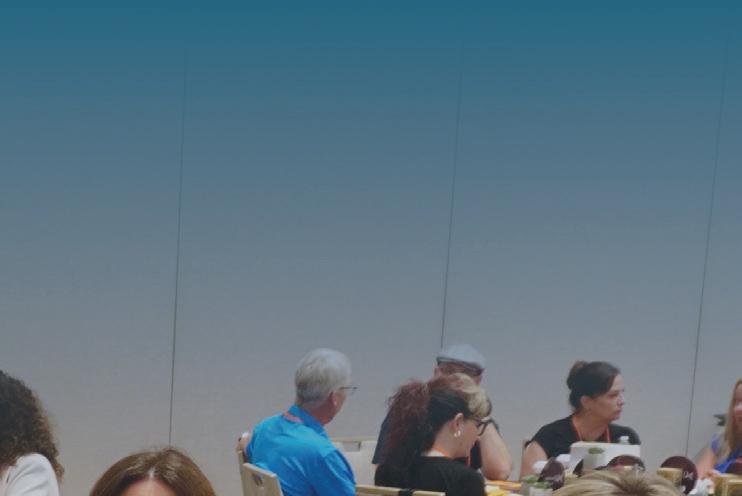
Join a Franchise Community That Feels Like Family.

1,000 Members in Under 4 Months!

Build your business with the strength of a national brand and the heart of a close-knit community.
The MassageLuXe Di erence



2025 DOMINATORS
EMERGING HOT SPOTS AND SHIFTING GROWTH PATTERNS
Written by AMBIKA OBEROI
The 2025 Dominators analysis shows a steady but evolving franchise landscape. The top CBSAs—New York, Los Angeles, Chicago, Dallas, and Houston—remain firmly at the top with only fractional movement in unit counts year over year. For multi-unit operators, this stability signals that the nation’s biggest markets remain essential, but expansion opportunities there are about optimization, not aggressive growth.
Where we see meaningful movement is in secondary and midsized markets. Several CBSAs posted healthy double-digit percentage increases in franchisee units. Laurinburg, North Carolina, grew 11.4% while Spencer, Iowa, rose 9.4% and Oil City, Pennsylvania, advanced 7.1%. For operators seeking less saturated environments with competitive cost structures, these markets illustrate where new opportunities are forming.
On the other side of the spectrum, some regions experienced sharp contractions. Durant, Oklahoma, saw a nearly 25% drop in units while Magnolia, Arkansas, declined 20%. These declines suggest certain regional markets are struggling with demand, costs, or brand retrenchment.
At the franchisee level, the story of consolidation and scale continues. Already a powerhouse, the Flynn Group expanded its reach and now ranks as the top franchisee in nine states, up from seven last year. This jump stems from its acquisitions of Wendy’s units in New Jersey and Pizza Hut locations across the Southeast. At the same time, Cultivate Solutions, a major franchisee in North Dakota, joined the Dominators list this year. Its multi-unit development deal with Dave’s Hot Chicken signals an appetite for bold expansion and the increasing role of emerging operators aligning with high-growth brands.
The key takeaway for franchisors and multi-unit franchisees is balance. The largest metros still anchor national footprints, but real growth is happening in unexpected places as secondary CBSAs post steady gains while some legacy markets contract.
Ambika Oberoi is director of information management for FRANdata.
LARGEST FRANCHISEES BY STATE
TEAM WASHINGTON 9
D.C. KOVAN GROUP/ DEKK GROUP/NGP MANAGEMENT 9 DELAWARE NISTAZOS AND SONS/FRANCHISE MANAGEMENT SERVICES 25
FLORIDA SUMMIT RESTAURANT GROUP (NEIGHBORHOOD HOSPITALITY/ ARGONNE CAPITAL)
GEORGIA FLYNN GROUP
FRASIER ENTERPRISES
FLYNN GROUP
ILLINOIS THE DHANANI GROUP
ROTTINGHAUS COMPANY



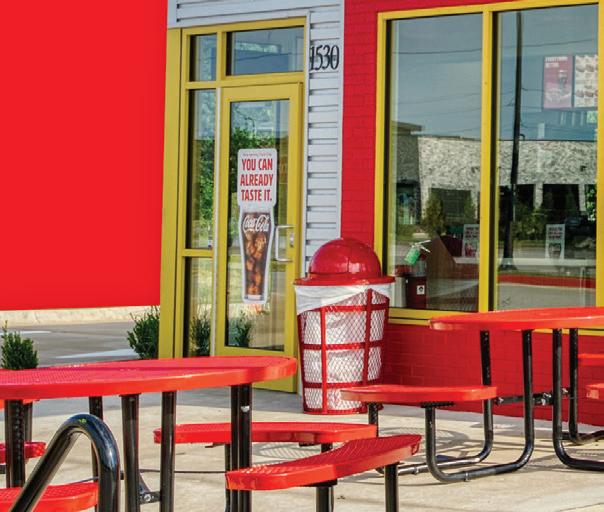













ENTIRE U.S.
NEW YORK-NEWARK-JERSEY CITY, NY-NJ-PA
ANGELES-LONG BEACH-ANAHEIM, CA
CHICAGO-NAPERVILLE-ELGIN, IL-IN-WI
DALLAS-FORT WORTH-ARLINGTON, TX
HOUSTON-THE WOODLANDS-SUGAR LAND, TX
ATLANTA-SANDY SPRINGS-ALPHARETTA, GA
WASHINGTON-ARLINGTON-ALEXANDRIA, DC-VAMD-WV
MIAMI-FORT LAUDERDALE-POMPANO BEACH, FL
PHILADELPHIA-CAMDEN-WILMINGTON, PA-NJDE-MD
CA 1,047
BOISE CITY, ID 1,047
BRIDGEPORT-STAMFORD-NORWALK, CT 1,035
EL PASO, TX 995
ALLENTOWN-BETHLEHEM-EASTON, PA-NJ 976
GREENSBORO-HIGH POINT, NC 974
ROCHESTER, NY 966
CHATTANOOGA, TN-GA 959
WICHITA, KS 951
AKRON, OH 945
BAKERSFIELD, CA 940
ALBANY-SCHENECTADY-TROY, NY 935
MYRTLE BEACH-CONWAY-NORTH MYRTLE BEACH, SC-NC 919
JACKSON, MS 896
WORCESTER, MA-CT 892
AUGUSTA-RICHMOND COUNTY, GA-SC 883
NEW HAVEN-MILFORD, CT 880
LEXINGTON-FAYETTE, KY 871
PALM BAY-MELBOURNE-TITUSVILLE, FL 863
STOCKTON, CA 860
FAYETTEVILLE-SPRINGDALE-ROGERS, AR 859
DELTONA-DAYTONA BEACH-ORMOND BEACH, FL 857
TOLEDO, OH 826
LAKELAND-WINTER HAVEN, FL 824
OGDEN-CLEARFIELD, UT 814
HARRISBURG-CARLISLE, PA 801
SAVANNAH, GA 776
DURHAM-CHAPEL HILL, NC 770
AL 768
PENSACOLA-FERRY PASS-BRENT, FL 757
UT 748
NC 746
MCALLEN-EDINBURG-MISSION, TX 734 ASHEVILLE, NC 732
NY 667
LARGEST FRANCHISEES BY REGION
WEST
(AK, CA, HI, OR, WA) UNITS
G & M OIL CO 279
FLYNN GROUP 248
HARMAN MANAGEMENT CORPORATION 239
AKASH MANAGEMENT 236
AMERICAN WEST RESTAURANT GROUP 222
SOUTHWEST
(AZ, NV, NM) UNITS
DESERT DE ORO FOODS 182
MERRITT GROUP/B & B CONSULTANTS 139
TERRIBLE HERBST 136
WENDYS OF COLORADO SPRINGS/HOLLAND BUERK ENTERPRISES 123
DIVERSIFIED RESTAURANT GROUP (DRG) 97
SOUTH
(AL, AR, FL, GA, KY, LA, MS, NC, SC, TN, TX, VA) UNITS
FLYNN GROUP 964
THE DHANANI GROUP 857
SUN HOLDINGS (RMH FRANCHISE-APPLEBEE'S) 742
KBP BRANDS 611
SUMMIT RESTAURANT GROUP (NEIGHBORHOOD HOSPITALITY/ARGONNE CAPITAL) 375
EAST
(DC, DE, MD, NJ, NY, PA, WV) UNITS
FLYNN GROUP 324
MOUNTAIN WEST
(CO, ID, MT, UT, WY) UNITS
FLYNN GROUP 242
SIZZLING PLATTER 151
ALVARADO RESTAURANT NATION/ALVARADO HOLDINGS/PALO ALTO 104
HARMAN MANAGEMENT CORPORATION 103
MBN BRANDS (FRONT RANGE HOLDINGS) 80
PLAINS
(IA, KS, MO, NE, ND, OK, SD) UNITS
FLYNN GROUP 498
ROTTINGHAUS COMPANY 250
LOVE'S TRAVEL STOPS & COUNTRY STORES 202
K-MAC ENTERPRISES 190
FUGATE ENTERPRISES 129
MIDWEST
(IL, IN, MI, MN, OH, WI) UNITS
FLYNN GROUP 391 THE DHANANI GROUP 371
KBP BRANDS 284
BORDER FOODS 195
ALLINE SALON GROUP 190
NEW ENGLAND
(CT, ME, MA, NH, RI, VT) UNITS
CAFUA MANAGEMENT CO (CMC) 187 KOVAN GROUP DEKK GROUP/NGP MANAGEMENT 157 THE DHANANI GROUP 98
COUTO MANAGEMENT GROUP/ DARTMOUTH MANAGEMENT GROUP/CAPE MANAGEMENT TEAM 93
HK ENTERPRISES 85
Source: FRANdata
Note: Data based on most current FDDs





Franchise leaders tell their stories to Congress at IFA’s 2025 Advocacy Summit
Written by KERRY PIPES
When more than 400 franchisees, franchisors, and suppliers gathered in Washington, D.C., this September for the International Franchise Association’s (IFA) 2025 Advocacy Summit, the energy was palpable. The three-day event at the Hilton Washington DC National Mall The Wharf wasn’t just another conference; it was a rallying cry for the future of franchising.
At its core, the Summit highlighted a simple truth: If the franchise community doesn’t tell its story to policymakers, how will government leaders ever understand the business? With the newly introduced American Franchise Act (AFA), a bipartisan bill designed to codify the joint-employer standard, on the table, the stakes have never been higher.
IFA Chair Mary Kennedy Thompson set the tone in her welcome remarks: “Power is not power if you don’t know you have the power. Franchising is a powerful constituency and the voice on Main Street.”
The duality of franchising as both entrepreneurial grit and national economic engine echoed throughout the event. From small franchise owners to multi-unit operators, attendees carried a unified message that franchising provides a proven path to the American Dream. But without regulatory clarity, especially around the joint-employer rule, that path is threatened.
The AFA represents stability. With seven Democrats and seven Republicans signing on at the bill’s introduction, the bipartisan bill aims to put an end to the regulatory ping-pong that has plagued the industry for the past decade. As Thompson reminded the audience, uncertainty is the real enemy: “The thing that hurts business the most is not bad news but the unknown. We want them to quit changing the rules.”
The Summit blended policy discussions with personal narratives in an intentional strategy to help attendees sharpen their message before heading to Capitol Hill to meet with their elected officials on the last day of the event.
One of the first to speak to attendees was Scott Jennings, a CNN commentator and longtime political strategist. He began by addressing the Charlie Kirk assassination, noting that Kirk was “about building, not tearing down,” and then cautioned that the West’s norms of free speech, civil discourse, and open debate are under attack. Jennings framed Kirk’s assassination as a stark reminder that America was founded on speaking and debating. He said recommitting to those principles is essential now more than ever.
Jennings then turned to the matter of advocacy and the AFA, noting the important role of franchising in America. “Franchising is part of everyday life. It combines the strength of national brands with the sweat equity of local owners. That independence deserves protection,” he said in reference to the AFA as a critical way to restore stability.
Jennings also gave practical advice: Lawmakers respond to personal stories. “When people describe their business and what they do, politicians want to know,” he said. “They place a lot of value on your opinion. Walk tall, be confident, because you all carry a big stick.”
A gathering momentum and excitement for the AFA carried through every session. IFA President & CEO Matt Haller delivered a progress report on the association’s 2025 Roadmap for Franchise Growth, which includes codifying a joint-employer standard that protects franchisee independence, preserving a pro-franchisee tax code achieved earlier this year, and stopping burdensome regulation. He cued up a new video created to demonstrate the importance of franchising and why it needs protection.
Day 2
The second day of the summit kicked off with a keynote by U.S. Secretary of Labor Lori ChavezDeRemer. She underscored her commitment to fighting for the American worker and explained how the Department of Labor is providing clarity and consistency for both employers and employees by issuing guidance and removing restrictions that harm businesses. She outlined priorities such as eliminating taxes on tips and overtime, making estate tax exemptions permanent, increasing the child tax credit, and leveraging tariffs to create more opportunities for American businesses. She also emphasized the importance of expanding apprenticeships and trade jobs as part of her vision to strengthen the workforce beyond traditional four-year college pathways. Ultimately, she said, her goal is to position the U.S. as the dominant global economic leader, reminding attendees that “the Department of Labor has your back.”
Next, IFA’s Erica Farage, senior vice president, advocacy and political affairs, spoke with Kevin Yoder, former U.S. congressman from Kansas and

now with Venture Government Strategies, a consulting and advocacy firm. She asked what attendees need to know before meeting with members of Congress and their staff. While highlighting the new AFA, he stressed punctuality and clear introductions when explaining the joint-employer rule to lawmakers.
“Don’t assume they are tracking the jointemployer rule. Explain how the rule impacts business. Mention the AFA that was just introduced last week,” he said. Yoder noted that many meetings will be with staffers, who are influential, so attendees should collect cards and follow up promptly. He encouraged ongoing engagement by thanking lawmakers, inviting them to visit businesses, and building lasting relationships beyond Washington.
In a “fireside chat,” Haider Murtaza, IFA’s senior director, federal government relations, spoke with Reps. Hillary Scholten, D-Mich., and Don Davis, D-N.C., about Democratic priorities and franchising’s role in shaping policy.


Scholten emphasized the need for a clear, consistent joint-employer standard, calling it common sense. She outlined Democratic goals such as reclaiming congressional authority over tariffs, pursuing permitting reform, and advancing immigration policies that balance border security with pathways to opportunity. She stressed her pragmatic, constituent-first approach and the importance of bipartisan problem-solving.
Davis, the first Democrat to co-sponsor the AFA, highlighted the central role franchises play in rural America, describing them as vital gathering spaces that strengthen communities. “Bojangles is just as powerful as a good golf course,” he quipped. On bipartisan cooperation, Davis pointed to progress in areas like defense, cryptocurrency regulation, and the Farm Bill.
Both leaders agreed that the AFA is essential to creating stability for franchise owners nationwide.
Small Business Administration (SBA) Administrator Kelly Loeffler has deep roots in small business. She noted her background on a five-generation family farm and in her father’s trucking company. She described her approach as getting government out of the way so that entrepreneurs can thrive. A key early move was reinstating the SBA’s franchise directory within her first 100 days. She called the resource essential for banks and franchisees, adding that it has already led to more loans and streamlined access to SBA programs like the 504 loan. Loeffler also highlighted efforts to restore lending standards to stabilize the system, roll out the upcoming Made in America Finance Act, and provide a supplier list to strengthen domestic business. On tax policy, she has supported restoring expiring provisions like the 199A passthrough deduction and bonus depreciation to give businesses predictability. Looking ahead, she pointed to workforce challenges as the biggest issue
facing Main Street. She assured attendees that this administration is listening and actively supporting small businesses.
Kansas Senator Roger Marshall sat for a candid Q&A with IFA Chief Advocacy Officer Michael Layman. A Republican, Marshall underscored his deep support for franchising, calling it a $9 billion driver of Kansas’ GDP and a proven pathway to the American Dream, particularly for veterans, women, and minorities. On the pressing issue of the joint-employer standard, Marshall highlighted the instability caused by frequent changes across administrations and courts, saying the AFA is essential to create certainty. He urged attendees to “make the sell” on Capitol Hill by sharing their personal stories with lawmakers. “Don’t walk out tomorrow without getting the commitment to co-sponsor this bill,” he said. “No bill will get to the finish line without bipartisan support.”
Marshall also spoke about the broader probusiness legislative agenda, describing potential reforms, including expanded tax write-offs, doubled estate tax limits, and bonus depreciation, saying they could be highly consequential for small business owners. Turning to the Senate outlook, he noted looming budget battles and the need for a balanced approach to keep the government open. Finally, Marshall addressed workforce shortages, rising healthcare costs, and his push for a Transparency Bill to reduce medical expenses, reinforcing his focus on practical solutions for small business owners.
Codie Sanchez, co-owner of ResiBrands, a multi-platform franchise, and founder and CEO of Contrarian Thinking, wrapped up the day with a Q&A led by Haller. Sanchez highlighted franchising’s power to boost business success, noting it offers a stronger path than going solo. She emphasized the industry’s collective strength, saying
franchising thrives when owners work together to support the many, not just the one. Sanchez stressed culture over systems, encouraging transparency, collaboration, and resilience. On the topic of advocacy, she urged franchisees to share emotional, personal stories with lawmakers to make an impact. “Bring them a picture,” she said. “Tell them your story. Tell a story about someone who found success in franchising.”
Day 3
On the morning of the final day before attendees headed to Capitol Hill, they got one more round of advocacy pointers, beginning with U.S. Rep. Kevin Hern, R-Okla., who has been a successful McDonald’s franchisee. He shared his personal journey from operating restaurants in Arkansas and Oklahoma to serving in Congress. Drawing on his experience, he stressed that many lawmakers debate issues they don’t fully understand, making it critical for franchisees to tell their own stories.
Hern, who had just introduced the AFA in the House the previous week, highlighted the bill as a historic opportunity to finally codify the franchisorfranchisee relationship and provide lasting clarity. He urged unity across franchising, noting that a bipartisan approach strengthens the entire industry. “No matter what brand you are with,” he said, “we should all pull on the same rope. It’s good for the industry overall.”
Beyond the speeches and fireside chats, the Summit prepared attendees for the real work: walking the halls of Congress. Advocacy experts coached franchise leaders on how to introduce themselves, frame their stories, and follow up with staffers who often drive legislative priorities.
Franchising is an industry that represents 3% of U.S. GDP and employs millions, but it often flies under the radar in policy debates. That’s why the annual Advocacy Summit is critical. It creates a visible, vocal reminder on Capitol Hill that franchising is more than logos and storefronts. It’s local ownership, job creation, and generational opportunity.
The passage of the AFA could secure the future of that opportunity by locking in a predictable regulatory environment. For franchisees, that means more training, growth, and freedom to operate as true independent businesses. For franchisors, it means stability to invest in innovation and brand building.
As attendees fanned out across the Capitol for meetings with their representatives, the message was clear: Franchising doesn’t just want a seat at the table; it deserves it. The Summit was about defending the model and affirming its role as one of the most accessible and resilient pathways to the American Dream. Or as Thompson put it, “We’re here to win, protect, promote, and enhance franchising. It matters what we’re doing. And it matters that our voices are heard.”



Multi-Unit Franchisee
Rob Branca on Advocacy, Bipartisanship, and the Local Face of Franchising
Written by KERRY PIPES
When franchisees from across the country gathered in Washington, D.C., for the 2025 IFA Advocacy Summit in mid-September, there was a mood of determination buoyed by optimism. Among those leading the charge was Rob Branca, a longtime multi-unit, multistate Dunkin’ franchisee and IFA board member. He has been a consistent voice for the industry on Capitol Hill.
For Branca, this year’s Summit reinforced a central truth: Effective advocacy is less about one big meeting and more about persistence. “It requires repetition and persistence to succeed at advocacy,” he says. “Even though we may have a good meeting, it doesn’t mean whatever bill you’re working on will pass.”
Few issues have impacted the franchise landscape more over the past decade than the joint-employer standard. With the rule changing four times in ten years, Branca argues that small business owners have been left without the stability they need to operate confidently.
“You can’t coach your franchisees on the best way to comply if you don’t know what the rule is,” he says. For him, codifying a permanent standard is not just about protecting franchisors and franchisees; it’s about creating clarity for everyone in the ecosystem, including employees, suppliers, contractors, and customers. “Make the rule permanent, and we’ll follow it,” he says.
One of the things that stood out at this year’s Summit, Branca notes, was a refreshing spirit of working together across party lines.
“Members of Congress understand that people want bipartisanship,” he says. The American Franchise Act’s (AFA) bipartisan support was a clear highlight, proving that when partisanship is stripped away, policymakers can focus on the substance of legislation.
“It was nice to be able to thank both sides of the aisle for their efforts on behalf of franchising,” Branca says of the group’s time on the Hill. He believes that continued bipartisan engagement is critical to the future of the industry.
Branca says much of advocacy boils down to education and often reeducation. With frequent turnover in Washington, new members of Congress and their staff members must continually be introduced to the fundamentals of franchising.
“Most members of Congress don’t understand franchising,” Branca says. “And even after we explain it, new people come in, and we need to explain it again. It’s a continuing education process.”

That education also involves dispelling a common misconception that franchisees are simply extensions of massive corporations.
“We’re not part of a big publicly traded McDonald’s corporation,” Branca says. “We’re a small business owner in our town. We support our Little League, donate to the food bank, and run a family business.”
Branca says that one of the most effective strategies to help cut through the barriers is putting a local face on the issues. That’s why, he says, franchisees should invite their lawmakers to visit their locations, meet employees, and see firsthand what it takes to run the business.
“It’s very impactful for them,” he says. “Members of Congress want to hear from the person in their district, the local taxpayer, the local employer, the local philanthropist. You’re putting a face to the name of the local business. It’s not Dunkin’; it’s Rob and his family business.”
Beyond his own role, Branca finds joy in watching first-time attendees at the Summit catch what he calls “Potomac Fever.” Seeing new advocates realize they can walk into public buildings and speak directly with their lawmakers, he says, is both inspiring and vital to sustaining the movement.
He also praised the IFA for its leadership in organizing the Summit. But, he says, the event is only the beginning. “There’s more that can be done—and is being done—throughout the year,” he says.
Branca says advocacy is never a one-and-done effort. It’s about persistence, personal engagement, and ensuring that policymakers understand the unique role of franchisees as local business owners.
Without that constant effort, he warned, franchising risks being swept into broad legislation designed for giant corporations. “If we don’t explain how a piece of legislation will affect us, then no one else will do it for us,” he says. “It’s incumbent upon us to do it.”
At the 2025 IFA Advocacy Summit, Branca and hundreds of others once again made sure franchising had a voice on Capitol Hill. It’s the sound of a voice rooted in local communities but amplified through collective, bipartisan advocacy.










How remodels can drive revenue for franchisees
Written by COLLEEN MCMILLAR
Just before the onset of the Covid-19 pandemic, Jersey Mike’s Subs Founder and CEO Peter Cancro stood in front of a group of franchise owners and announced an aggressive plan for growing the brand’s customer base and increasing revenue. Mitch Cohen, who operated six Jersey Mike’s locations at the time, was among those in the room.
Everyone knew that Cancro was an entrepreneurial genius. This was a guy who, as a 17-year-old in 1975, borrowed $125,000 from his coach to buy a single sub shop in Point Pleasant, New Jersey. By 2020, he had turned the business into an empire of more than 1,800 Jersey Mike’s Subs locations.
Still, when Cancro said he wanted to update the look of all of the restaurants and that the facelifts should start right away, Cohen balked.
All of them?
And not on the timetable dictated by the owners’ individual franchise agreements?
Cohen raised his hand. He had purchased his most recent location six months earlier. Per his agreement, he had almost five years before he was required to refresh the restaurant. “I’m not willing to remodel,” he recalls saying.
Then, something extraordinary happened.
Cancro “announced his plan to pay for the remodels across the country, which is extremely unique that a brand would do that,” says Cohen, who’d been in franchising for 35 years at that point. He says it gave “everybody the incentive to remodel since it wasn’t coming out of their pocket.”
Cancro couldn’t have known about the coming global pandemic, but it didn’t slow him down. He stuck with his aggressive plan, and in 18 months, every Jersey Mike’s location sported a new look.
Anyone who questions the difference a change in a business’ appearance can make should listen to Cohen. “The results for that remodel have been remarkable,” he says.
In what way?
“Customer perception,” Cohen says. “When they walked in, all the customers were like, ‘Wow, this is beautiful. What an upgrade.’
“Sales-wise, we’ve had almost double-digit increases for the past three years in our market. This year, it slowed down a little bit, but we’ve grown our customer base. Part of the result is, obviously, advertising and marketing. But the other part of the result came from the way the store looks, the atmosphere, the way the employees are dressed in their uniforms. I think it all tends to elevate the customer perception of our brand, which gives us an opportunity to be a premium sub shop versus just a quick-service sub shop.”
Brands and their franchisees are constantly looking for ways to gain a competitive advantage. They know that enhancing the customer experience can also enhance the bottom line. With that said, it can be expensive and disruptive for franchisees if elevat-
“
Part of the result is, obviously, advertising and marketing. But the other part of the result came from the way the store looks, the atmosphere, the way the employees are dressed in their uniforms. I think it all tends to elevate the customer perception of our brand, which gives us an opportunity to be a premium sub shop versus just a quickservice sub shop.”
ing the customer experience or making a business more efficient involves investing in a new look, new equipment, or a new layout. Franchisees are always weighing the potential long-term benefits of improvements against the potential short-term pain.
As Taco Bell franchisee David Ostrowe says, “I’m disrupting my current customers for several weeks. I have a construction container in the parking lot. The place looks semi-closed as we’re going through this process. And so, because of the construction, my customers will go to my competitors. There’s a sales hit that franchisees take during these periods. And sometimes, if your competitors do a great job, it takes a long time to win those customers back.”
At the same time, Ostrowe knows that smart investments can deliver clear returns. But what’s a smart investment? Exactly what benefits have franchise operators reaped from remodeling or renovating their establishments? We talked to a few to find out.
In the customer’s shoes
Franchisors often require their franchisees to pay for updates and upgrades to their businesses. Brands say that’s imperative in an industry that relies on maintaining consistency and staying on top of market trends.
“A lot of times, it revolves around new equipment. Maybe new products are being rolled out, and you couldn’t put them in because your electric upgrade wasn’t there,” Cohen says. “Or the layout wasn’t correct to bring in the new equipment that you needed to produce the new product line.”
These mandated times aren’t the only occasions when franchisees invest in improvements or new equipment.
“It really depends on where you are in the marketplace,” Cohen says. “What are your competitors doing? Do you have new competitors coming in? Let’s say your store has a lot of traffic, and things are getting worn down. You kind of have to step back and walk through the front door in the guest’s shoes and see what they see. From a customer’s point of view, does it look drab or worn? Do your ceiling tiles have water stains on them because you had a leak? These are things that, a lot of times, you put blinders on, and you just don’t see.”
New lighting, a more modern decor, and comfortable chairs can make customers want to stay longer and spend more. Nice landscaping can improve a business’ curb appeal. Energy-efficient equipment saves money.
Jersey Mike’s footed the bill for a bright beach decor by investing in new tables, chairs, counters, tile, and artwork as well as ordering devices. The company spent an average of $75,000 per store. It didn’t cost franchisees a thing, and the results were impressive.
Jersey Mike’s went from $850,000 unit volume in January 2020 to a projected $1.2 million average unit volume in January 2022, Cancro told Restaurant Business in 2021. “That’s an unprecedented rise,” he said then.
In addition, the disruption was minimal. Each of Cohen’s restaurants took about five days to complete. The Long Island franchisee now owns eight Jersey Mike’s stores and is in the process of building a ninth. He also has three Sola Salon Studios in New York and plans to open a fourth.
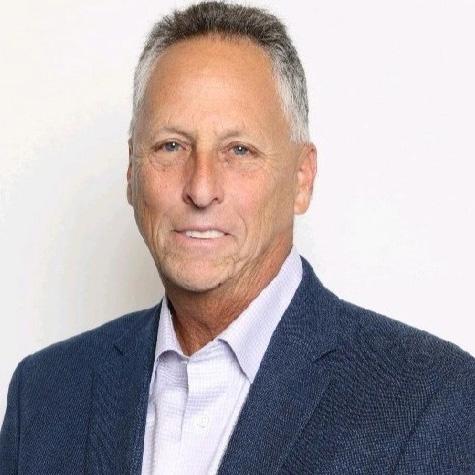

David Ostrowe
Multi-Unit Franchisee
Taco Bell
At the salons, he says, “We are constantly evaluating the locations and putting a fresh coat of paint on the wall in the hallways or looking at the carpeting to make sure that it’s not worn out.
“Our customers are the beauty pros. Their customers are their clients. And their clients need to feel warm and welcomed and be in a clean place when they’re getting their hair done or their eyes done. We refresh a little bit more frequently than we probably would at a restaurant. A restaurant is built to withstand more commercial traffic.”
Again, he says, franchisees must try to see what their customers see when they walk through the door.
Shifting dynamics
Ostrowe owns 27 Taco Bell restaurants in the Oklahoma City metro area. He’s in the middle of building one from the ground up with a new design that will serve as a test case for the brand. It will be used to assess whether the return on investment validates the cost of construction.
Ostrowe, who sits on the Taco Bell Franchise Association Board, is also in the middle of a remodel of one of his restaurants. It’s 8 years old, and the refresh will cost him somewhere around $200,000. In the near future, several of his restaurants are scheduled for similar brand-required remodeling.
He’s found that investments in the outside of his establishments, not the dining rooms, bring the most bang for the buck.
“Our numbers, post-Covid, have really shifted: 90% of our traffic is coming through the drivethrus or deliveries. Only 10% of our traffic is in dining rooms. Anything I can do to enhance the delivery and drive-thru experience drives transactions long-term,” Ostrowe says.
Parking lots need LED lighting. Parking spaces should be well striped, and potholes are a no-no. Everything needs to be welcoming, especially the landscaping, so no one is hesitant to pull into the parking lot.
“Once they’re there,” Ostrowe says, “it’s utilizing technology to efficiently take an order to get people through the line and making sure that they get everything they need and the order is accurate.”
He’s invested in dual drive-thru lanes and dual menu boards. That has increased sales if only because of the psychological effect. “The consumers feel like they’re getting in line faster. They see two lanes in operation, and they see the line moving forward,” he says, adding that it’s also important to have an awning in place to cover customers during inclement weather.
Customers notice spiffed-up businesses. “I typically see between 8% to 10% return on the asset,” Ostrowe says.
Some benefits go beyond increased traffic. “We also see better employee satisfaction because they feel that you care,” he says. “If you’re neglecting your restaurant, your capital repairs, and things of that nature, employees see that, and they don’t like it. Employees want to have a place that feels good. So, there’s a soft benefit to these remodels because it excites the teams.”
Most franchisees understand the necessity of keeping their properties in good shape, Ostrowe says.
“In a good franchise community, coupled with a good franchisor, everybody’s addressing these assets and taking care of them,” he says. “The last thing you want is a franchisee who’s not spending money in any of their restaurants and has restaurants that aren’t up to par. If consumers have a bad experience at another franchise location—from an image perspective, an operational perspective—they’ll quit shopping with me. So, we are tied together.”
Restaurants go through a lot of wear and tear. If new lighting and paint with better equipment will bump up sales, franchisees are all in favor, whether the update was mandated or not. But, he says, not every franchisor-mandated change makes sense.
“I think sometimes the design people in different franchise groups come up with things that you’ve got to scratch your head at and will make you ask, Why are we spending money on this instead of spending money on that?” he says.
There’s an added complication: No matter how well planned a remodel is, surprises can pop up, especially when improvements require crews to go inside a wall.
“What we’ve run into several times on buildings that we acquired and did not build ourselves is we pulled off the old wainscoting and found rotted wood in the substructure,” Ostrowe says. “We went in for a one-week dining room refresh, and in those cases, it can go on as long as three weeks. All of a sudden, we’re now replacing walls or replacing windows that were not part of the original scope.”
“ You kind of have to step back and walk through the front door in the guest’s shoes and see what they see. From a customer’s point of view, does it look drab or worn? Do your ceiling tiles have water stains on them because you had a leak? These are things that, a lot of times, you put blinders on and you just don’t see.”
While those are problems Ostrowe wants to address and would have sooner if he had known, the unexpected issue makes for a more expensive and time-consuming remodel. But when it’s over, there are reasons to smile.
“It gives the restaurants an opportunity to show the best that they can do,” he says, “because customers are excited about the remodel. Employees are excited about the remodel. Let’s put that excitement together to get a good return on the investment.”
Creating a buzz
Since November 2024, Anytime Fitness franchisee Andrew Breton has remodeled four of his 19 gyms. In his most recent project, he made extensive improvements at a newly acquired Anytime Fitness in Manchester, Connecticut. He closed the facility for nine days to refurbish.
“We’ve done remodels in the past, and we worked around the members, but it takes longer and gets a little messy,” Breton says. “By closing the gym down, we were able to do it quickly, and we were able to build a bit of a buzz. So, in a way, we did a mini presale. My team was able to get out into the community and talk to different businesses and other people and drive new people to us.”
Breton painted walls, installed new flooring and turf, invested in new cardio equipment, and expanded the weight room to meet growing demand. He also outfitted the center with the latest technology from Anytime Fitness, such as Myzone heart rate monitors and Evolt 360 body composition scanners, a tool for tracking muscle mass, body fat, total body water, and other health metrics.






















Andrew Breton
Multi-Unit Franchisee
Anytime Fitness
He worked closely with the brand and took advantage of the research it had already done. Had he not been a part of a franchise, “it would have been a lot more work to figure out the color scheme and what people are liking these days,” he says. With the insights the brand provided, “that was all pretty easy in the sense that it was just kind of plug and play for the most part,” he says.
Breton was still years away from the remodeling required by the brand, but for him, it made sense to invest in the upgrades as soon as he took ownership of the gym. The facility was showing its age and losing members, he says.
“It didn’t have the tender loving care that it needed,” he says, adding that he wanted “to make sure that members understood that we value their business.”
He and his team looked at prior complaints about the gym and methodically addressed them. The remodeled fitness center opened in June. Breton has seen an increase in clients and revenue. He expects the remodel to pay for itself in six months.
That project and the three earlier remodels have proven to be worthwhile investments. The fresh look and new equipment increased customer satisfaction, made his employees happy and proud of the gym, and generated new business, he says. Next year, he plans to upgrade four more of his clubs and to proceed at that pace until they are all done.
“We’re looking to get about a 20% jump in revenue,” he says.
For a month before and a month after each of his remodeling projects, he invested more in marketing to build up anticipation in the community and the membership base. Breton also emphasized to his Anytime Fitness team members the potential upsides of the transformations.
“I really wanted to encourage people to treat this as a great sales opportunity,” he says.
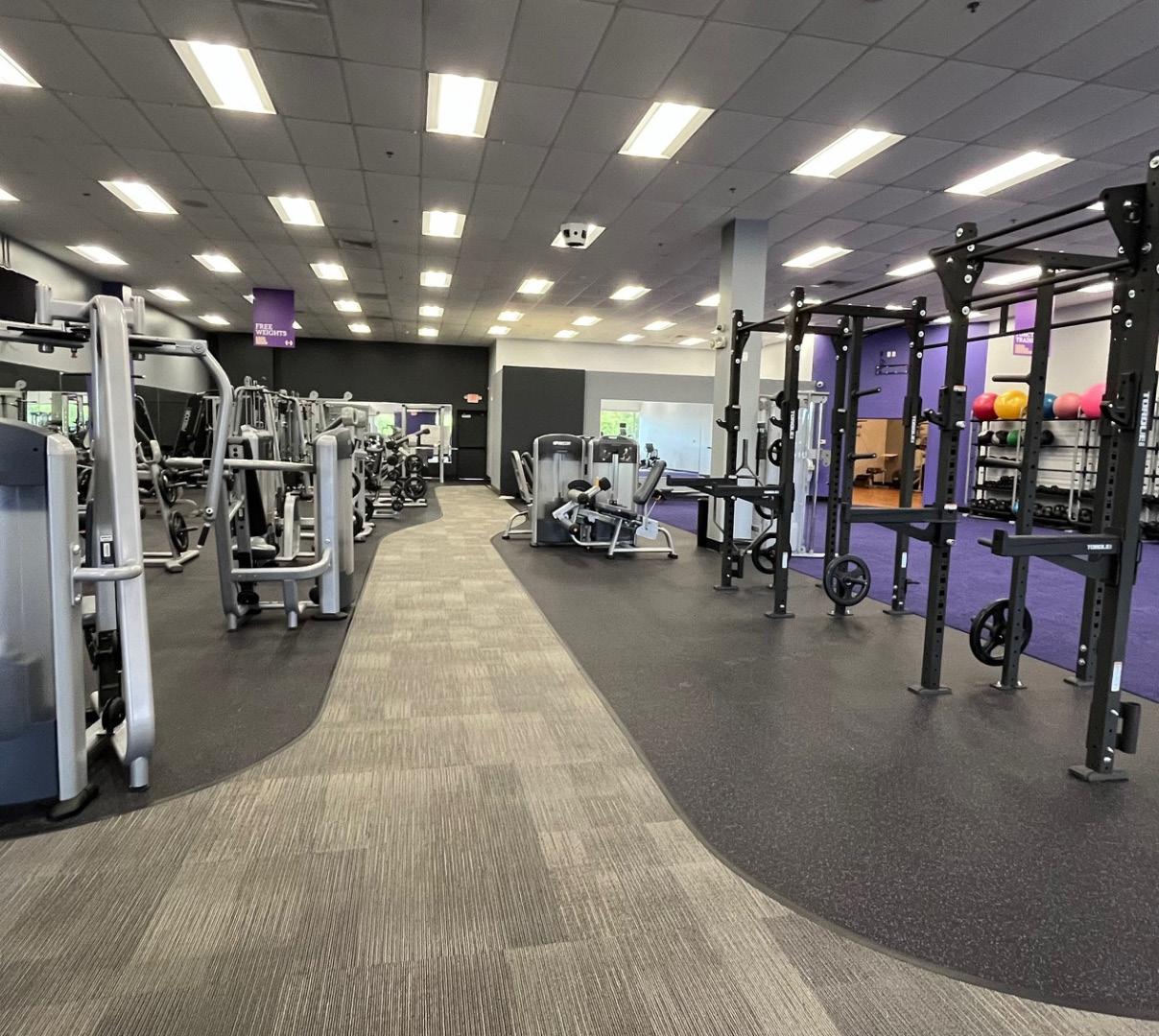
Expert Insights
These franchising pros have advice for franchisees about to undertake a remodeling project.
MITCH COHEN, a Jersey Mike’s Subs and Sola Salon Studios multiunit operator:
• “Start preparing financially for a project well in advance. Don’t wait until three or six months out.”
• “Plan it around a time of year when your business is slower than normal or when you can do a grand reopening to kick off your busy season.”
• Understand the lead time, “whether it’s with permits, your contractor, or suppliers.”
• Make sure “that you’re able to support your employees while you’re closed so that they’re not looking for another place to work.”
DAVID OSTROWE , a Taco Bell multi-unit operator:
• “Open communication between the franchisee and the franchisor is absolutely critical, especially if you want to do something that’s different from the standard cookiecutter.”
ANDREW BRETON, an Anytime Fitness multi-unit operator:
• “Make sure that you’re treating it as a sales opportunity and not just as ‘I’ve got to remodel this building.’ The building is the building. The marketing, the hype, that’s what really gets you the buzz.”
FRANCHISE WITH BOSCH A GLOBALLY TRUSTED BRAND
Bosch is recognized for quality, reliability, and innovation — values that have earned the trust of consumers and businesses worldwide. With a legacy of creating products that are invented for life Bosch continues to set industry standards across multiple industries.
Bosch Auto Service, the company’s latest innovation in automotive repair, embodies the same invented for life principles. Each franchise is built to thrive in the digital age of automotive repair.
Operating in an essential industry and backed by a global leader in automotive technology, starting a Bosch Auto Service Franchise is not only a sound investment—it’s the logical choice for building a lasting business.



Multi-unit franchisees link their fortunes to multi-brand platform companies
Written by M. SCOTT MORRIS
Just as multi-unit franchisees grow by acquiring new locations and territories, franchisors can grow by acquiring new brands. The result has been the rise of platform companies, franchisors that bring multiple concepts under a single umbrella.
For operators, this structure can open opportunities. Sister brands share lessons. Loyalty programs or mobile apps developed in one concept can be translated to another brand. National recognition makes financing easier, and franchisor-run conferences and regional meetings create pipelines for acquisitions and partnerships. And who can forget shared buying power?
“Think about putting Taco Bell and Pizza Hut together,” says Sam Chand, a multi-unit operator of both brands owned by Yum! Brands. “They get such leverage when buying products. Napkins and straws don’t change because you’re selling tacos or chicken. That helps you. Buying in bulk definitely helps you.”
The benefits aren’t just financial. Multi-brand operators deepen their connection to the franchisor itself. It’s a two-way street because franchisors also benefit. Having reliable franchisees across several brands can strengthen the system as a whole. Anna Hines, who operates multiple franchises under Purpose Brands, says she appreciates the easy back and forth that has developed over the years.
“We just have a really good relationship with corporate,” she says, “and they trust how we operate and know how we represent the brands.”
But there are challenges. Operating systems don’t always align, training staff across different businesses can be demanding, and brand priorities sometimes compete for attention.
As franchisees scale their businesses and franchisors acquire new brands, it’s inevitable that some multi-unit franchisees and platform companies tie their fortunes and grow together.
OPERATIONS MATTER

Chand never planned on becoming a multi-brand franchise operator. It started almost by accident. In New York City, he opened a Taco Bell Express inside his deli, a location so small it had no seating. Customers complained about the lack of tables, but the sales told a different story. The unit was doing such strong volume that it caught Yum! Brands’ attention.
“They were like, ‘Wow, why is this guy doing so good?’” Chand recalls.
Impressed by his results, Yum! Brands came back with a bigger opportunity. “They recommended me to the sister brand, which is KFC, and they sold me a whole bunch of stores,” he says.
That leap from one compact Taco Bell to a portfolio of KFC restaurants set Chand on the path to becoming a major multi-brand operator. From those beginnings, Chand now operates 34 KFC, three Taco Bell, and 27 Checkers & Rally’s locations across New York, Michigan, and Connecticut. What started as an experiment in a deli has grown into a multi-state enterprise backed by some of the biggest names in franchising.
The size and strength of Yum! Brands give Chand access to advantages that independent operators could never match. One of the biggest is buying power. Shared purchasing across thousands of units drives down costs on essentials and big-ticket items alike. Chand points out that when brands like Taco Bell and Pizza Hut buy together, their scale creates leverage.
“There’s a good buying power when you have that kind of scale,” he says. “You get a lot better at vendor sourcing and buying the equipment for the store.”
Financing is another plus. Banks are more willing to lend when they see tier-one brands like KFC and Taco Bell on the application.
“If this is a tier-one brand, which obviously KFC and Taco Bell are, banks are like, ‘Yes, we’ll do business with them.’ Then the second part comes: your operating model,” says Chand, adding that a strong brand name matters, but lenders also want to see disciplined management and proven success.
Franchising with different brands under the same platform company encourages shared learning. Chand points to Taco Bell’s loyalty program as an example: When it proved effective, the idea quickly crossed over to KFC. Vendor contracts and third-party delivery deals benefit from the same scale, creating ripple effects that strengthen each brand in the system.
But operating multiple brands has its challenges. Each has its own systems, remodel schedules, and operational quirks, which can make training a challenge. Managers need to be cross-trained to run both Taco Bell and KFC units, and that raises labor costs.
“That could be a challenge for the manager where we would pay them a little bit extra to have that training for both brands,” Chand says.

ANNA HINES
Multi-Unit Operator
Purpose Brands
For all the advantages of being part of Yum! Brands’ platform, including the buying power, financing, and shared innovations, Chand says success ultimately comes down to execution.
“Operating model always matters, regardless of which brand it is,” he says. It’s the same idea that helped turn a tiny Taco Bell Express with no seating into a standout success: Brands open doors, and talented operators keep them open.
BUILDING TRUST
Hines spent 15 years on Wall Street and watched clients take big risks when making trades. The pace and pressure sharpened her instincts, but it also pushed her to imagine a different kind of career.
“I figured if I can work this hard for somebody else, what could I do for myself?” she says.
That question eventually led her into franchising and into a lasting partnership with Purpose Brands. Today, Hines operates three brands under the platform company: Waxing the City, Basecamp Fitness, and Anytime Fitness. Together with her husband, Bobby, she has built a portfolio designed for growth and flexibility.
Waxing the City was her entry point. “There was only one major player in the game, which was European Wax Center. I felt like this seemed like a great concept, and I had been getting waxed for many years,” she says, “so I knew the need for it.”
“THERE’S A GOOD BUYING POWER WHEN YOU HAVE THAT KIND OF SCALE. YOU GET A LOT BETTER AT VENDOR SOURCING AND BUYING THE EQUIPMENT FOR THE STORE.”

JEROME JOHNSON
Multi-Unit Operator
Inspire Brands
At the time, Purpose Brands didn’t exist yet, but the acquisition of Waxing the City into the Anytime Fitness orbit set the stage for her future. She was franchisee number nine, and over a decade later, she has grown to three locations, soon to be four, with a goal of ten within five years.
That early connection with the franchisor proved invaluable. When Basecamp Fitness began franchising, the team at Purpose Brands knew that Hines and her husband had strong skills as operators.
“They personally reached out to Bobby and me,” Hines recalls. “They said, ‘We’re acquiring a new brand. We think you guys would be fantastic for it. We want to make you the biggest franchisees for this brand in Florida.’”
Just like that, the ties between franchisee and platform company deepened. Hines now has two Basecamp locations open with 18 more in development in Florida.
Working under the umbrella of a platform company brings unique advantages. Name recognition has been a big plus. According to Hines, Anytime Fitness’ reputation provides credibility and eases negotiations with banks and landlords.
“As soon as you name-drop, they’re like, ‘Oh, wow, Anytime Fitness—that’s the biggest gym franchise in the world. That is the number one player. There are locations on all seven continents,’” she says.
At the same time, there are some drawbacks. Even though there’s one platform company, its brands may use different systems and vendors. “When you love how something is operating with one brand, you’re like, ‘Why are they not doing it with the other brand?’” she says.
For Hines, the good far outweighs the bad. She and her husband are trusted to try out new initiatives. “Whenever there’s a cool pilot program and we want to be a part, they think of us first,” she says.
That trust can be scary at times. Expanding Basecamp Fitness into Florida is a big deal that she, her husband, and Purpose Brands take seriously. Basecamp was a new franchise and didn’t have an FDD when discussions began.
“Those are all new build-outs, not acquisitions. So that’s a little different,” she says. “The goal is to get these two to where they need to be, and then we start cranking out the other 18.”
Rather than work hard for her clients on Wall Street, Hines works hard for herself, her family, and her clients. The relationship with Purpose Brands has a direct effect on her business’ bottom line. Because of that, she cautions patience when considering working with a platform company
“Research the brands, know them, talk to other owners,” she says, “and really have passion for the brands you’re going to be a part of because this is our bread and butter.”
PLATFORM TO PLATFORM
Jerome Johnson didn’t set out to align his business with a single platform company. He simply saw opportunity where it was. As the owner of Sonic DriveIn, Dunkin’, and Baskin-Robbins locations, he now finds himself firmly inside Inspire Brands’ portfolio.
But he started with a different platform company, Dunkin’ Brands. He was attracted by its range of dayparts, which included Dunkin’ for breakfast, Togo’s for sandwiches, soups, and salads, and Baskin-Robbins for the “31 Flavors.”
“For us, that covered all three dayparts,” Johnson says.
From 2003 to 2009, Johnson and his father, Jerome Johnson Sr., opened nine Dunkin’ units and four Baskin-Robbins locations. But they ran out of room to expand in Virginia and the Washington, D.C., area. While looking for ways to expand, Johnson met a rep from Sonic at Franchise Update Media’s Multi-Unit Franchising Conference.
At the time, Johnson didn’t realize another platform company was on his horizon. Roughly a year after he joined the Sonic team, Inspire Brands purchased the restaurant chain. “A year after that, they bought Dunkin’ and Baskin-Robbins,” he says, “so I ended up under the same umbrella all over again.”
Johnson says he’s pleased with the arrangement and sees the benefits at the unit level. With Inspire Brands’ scale, systems are shared and improved across brands.
“Dunkin’ has a really good mobile app. And Sonic’s app was okay, but it wasn’t the best,” Johnson says. “When Inspire took over, Dunkin’ could share its information with Sonic. Now, my Sonic mobile app is better.”
The same principle applies to supplies. “We all need napkins, right? Now, instead of buying from several different companies, we can all come in together and buy it from the same manufacturer,” he says. “The cost goes down greatly from that.”
Marketing also expands his reach. Johnson points to cross-brand promotions, such as Dunkin’s
butter pecan iced coffee connected to BaskinRobbins flavors. National campaigns and loyalty programs reinforce the brands collectively while still keeping each name distinct.
Financing becomes easier too. “When it comes down to getting financing, all of Inspire’s brands are considered tier one,” Johnson says. “When you’re going to the bank, it’s a lot easier for you to get financing for those tier-one brands.”
That combination of advantages gives him confidence in his growth strategy. When his area became saturated with Dunkin’ and Baskin-Robbins, Johnson was able to branch out with Sonic. Inspire Brands also owns Arby’s, Buffalo Wild Wings, and Jimmy John’s, so there is room to maneuver. He can also take his current brands to new territories beyond his core market.
“You have plenty of room to grow,” Johnson says, “and you feel like you have a level of comfort with Inspire.”
He currently operates four Sonic locations, 10 Dunkin’ units, and four Baskin-Robbins stores in Virginia and Washington, D.C., with a fifth Sonic under construction in Dumfries, Virginia. “Unless I’m leaving the QSR business, I don’t see myself going outside of Inspire,” he says.
For Johnson, the platform model isn’t just about scale; it’s about developing solid relationships, running profitable restaurants, and expanding when opportunities arise.
“The better the relationship, the better the business,” he says. “You’re not working for them, but you’re working with them.”
CORE VALUES
If Lee Downing’s air conditioner broke down on the hottest day of the year, it wouldn’t count as an emergency because he has the tools and the knowhow to fix it. His customers can’t say the same.
“SERVING PEOPLE HAS ALWAYS BEEN A PASSION OF MINE. YOU KNOW, PEOPLE ASK ME EVERY DAY, ‘HOW DID YOU GROW A $70 MILLION COMPANY?’ AND WE’RE PACING FOR $100 MILLION. I TELL PEOPLE, ‘IF I TOLD YOU THE TRUTH, YOU WOULDN’T BELIEVE ME. IT’S REALLY SIMPLE. YOU JUST LOVE THE PEOPLE. THAT’S IT.’”




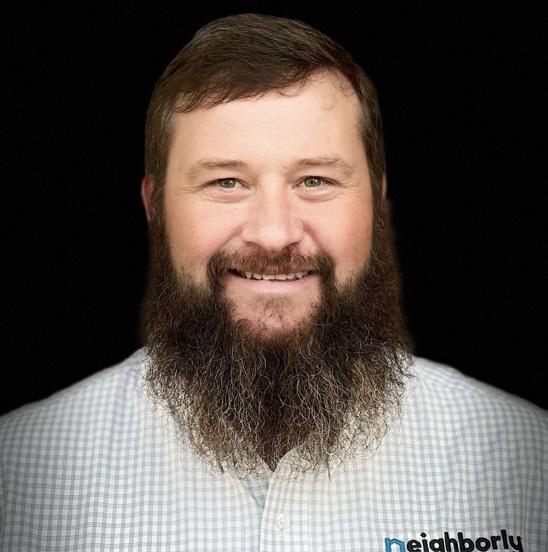
LEE DOWNING
Multi-Unit Operator
Neighborly

“Serving people has always been a passion of mine,” Downing says. “You know, people ask me every day, ‘How did you grow a $70 million company?’ And we’re pacing for $100 million. I tell people, ‘If I told you the truth, you wouldn’t believe me. It’s really simple. You just love the people. That’s it.’”
It helps to have a solid team of technicians on his staff, and he’s been well served by his ongoing relationship with multi-brand franchisor Neighborly. As CEO of Complete Home Services, Tennesseebased Downing operates eight AirServe, five Mr. Electric, two Molly Maid, and one Glass Doctor, and all franchises are part of the Neighborly family of brands.
He got into franchising after what he thought was a prank call. He hung up the first time, and luckily for him and his ambitions, they called back and flew him to Waco, Texas, to meet with Dina Dwyer-Owens, the CEO of Aire Serv that Downing had first seen on the TV show “Undercover Boss.”
“She hugged me. We had a prayer. They told me about their code of values,” Downing says, “and I knew at that very moment that this is where I was supposed to be.”
He says Neighborly shares those values, so it was a natural step to add more locations of Aire Serve and to take on other brands. Through annual reunions, brand-specific events, and regional meetings, Downing meets other franchisees who may be ready to sell or partner.
“When I get ready to grow, I just call the next franchisee over, and I’m like, ‘Hey, man, I know
you’re probably going to want to start thinking about retirement. I don’t want to just buy you out. I want to merge with you, and I want to carry on your legacy,’” he says. “I know them all.”
Most of his brands run on ServiceTitan, a CRM that gives him consistent data and reporting across operations. Molly Maid uses different software, which creates inefficiencies.
“Knowing what we know now, we would never buy a company that’s not on ServiceTitan,” he says.
While Downing is a fan of Neighborly’s website and considers his royalty money well spent, there have been issues when other owners haven’t been as quick to answer calls as Downing requires his team to be. That can affect his rankings for web searches.
“But, you know, they’ve really done a good job at trying to fix that,” he says. “They’re working hard.”
The Neighborly name also helps customers. Home repair can be an emergency that strains a family’s finances. Thanks to the Neighborly connection, financing companies are quick to offer payment options to Downing’s customers. Without the reputation of the franchisor, it could take a year or more after a new business opens before companies are comfortable making financing available.
As Downing grows his business and expands his reach, he knows he made the right choice when he joined the Neighborly team. “People ask me all the time: ‘Would you do it again?’” he says. “Absolutely. I was meant to be a franchise owner.”





















































The Gen Z Stare
WHY CUSTOMER SERVICE FEELS COLDER THAN EVER
Written by JOHN DIJULIUS
Anew hot online debate is called the Gen Z Stare. Recently, on the platform X, older generations complained about the lousy customer service they are receiving nowadays, mainly from the younger generations. X user @pbprot shared a post that gained more than 1.7 million views and started a firestorm of back-andforth opinions.
The post from the user reads, “I’m so sick of the new style of customer service where people just stare at you when you walk up to the counter/service desk that the car service guy saying ‘good morning, I’ll be with you in a minute’ immediately made me start thinking ‘wow, THIS is how you run a business.’”
WHAT’S HAPPENING?
As a society, we are now relationship disadvantaged. A 2024 study found that 40% of adults have gone three or more days without a single face-to-face conversation. This suggests many people today may have fewer than one in-person interaction per day.
The so-called friendship recession describes a long-term trend: Between 1990 and 2021, the share of people with 10-plus close friends dropped from 33% to 13%. Fewer close social ties likely mean fewer daily interactions. Teen habits also changed dramatically: Whereas teens in the 1990s typically hung out in person regularly, only about 25% of teens today spend time with friends outside school daily.
Detailed time-use surveys from decades ago suggest people spent one to three hours per day in social interaction, often face-to-face. Several of those interactions were likely meaningful. Today, many people fall well below that once-common daily social threshold; some even go days without a real conversation.
Research underscores that face-to-face interactions are more vital for mental health and well-being than texting, calling, or meeting via Zoom. Many psychologists argue that we’ve lost valuable inperson social time compared to previous generations.

Americans today spend far less time interacting face-to-face than 30 years ago. Time use surveys reveal a steep drop in in-person social time. For example, weekly hours spent with friends plummeted from about 6.5 hours per week a decade or two ago to only 2 hours and 45 minutes per week by 2021. This represents well over a 50% decline in friend interactions. American adults in the early 2020s spend roughly 30% less time on face-to-face socializing than they did 20 years earlier.
The change is even more dramatic for young people: Teenagers’ in-person social time fell by almost 50% in the same period. One national analysis found that daily socializing with friends dropped from about 60 minutes per day in 2003 to just 20 minutes per day in 2020. Consistently, the average American now spends more time alone, about 5.5 hours per day, up from 4.75 hours in 2003. In short, face-to-face interactions have steadily declined in frequency and duration since the 1990s.
LONG-TERM TRENDS
The General Social Survey shows the share of Americans frequently socializing with neighbors fell from 44% in the 1970s to 28% by 2022. Over the same period, 46% of Americans once said that others could be trusted, and only 26% of Americans say the same today.
In the early 2010s, 44% of Americans reported spending social time in the evening with neighbors several times per month. In 2022, 28% made it a priority to spend some of their evenings with other people each month.
SOCIAL DISPLACEMENT
For adults, too, digital communication often replaces or interrupts face-to-face conversations. Many Americans now default to texting or social media to catch up with friends, reducing the need for inperson visits. Social media use has skyrocketed, and some studies find that heavy social media users have fewer in-person interactions and feel more socially

isolated. In short, technology has made it easier to stay connected remotely, but this convenience appears to have come at the cost of less frequent physical togetherness.
In the 1990s and even 2000s, most people worked on-site, generating daily in-person contact with colleagues and customers. Today, a much larger workforce works from home, meaning fewer daily face-to-face encounters during the workday. This shift translates to millions of Americans no longer chatting with co-workers at the office or meeting clients in person each day. Casual workplace conversations, lunch meetups, and Keurig conversations, once regular parts of daily life, have been reduced for those working from home.
SOFT SKILLS
Service aptitude skills do not apply to the technical or operational side of the experience. However, they are among the most critical parts of an organization’s customer experience. The quality of your customer service and your organization’s customerservice level comes down to one thing and one thing only: the average service aptitude of every employee you have.
Service aptitude is a person’s ability to recognize opportunities to meet and exceed customers’ expectations, regardless of the circumstances. It represents the hospitality side only. This means how an employee makes another person feel. To be a company that consistently delivers outstanding customer service to all, these characteristics need to be screened for in the interview process. Soft skills should be a mandatory part of your new employee training and constantly revisited with your existing employees.
While these skills seem like basic expectations of individuals in the workforce, one study showed that nearly 60% of leaders in the U.S. believe it’s difficult to find candidates with soft skills. That is why it is the burden of companies and the training they provide to develop these constantly.
John DiJulius III, author of The Customer Service Revolution, is president of The DiJulius Group, a customer service consulting firm that works with companies such as Starbucks, Chickfil-A, Ritz-Carlton, Nestle, PwC, Lexus, and many more. Contact him at 216-839-1430 or info@thedijuliusgroup.com.


Juggling Joint Employer
Drawing distinct lines between the duties of franchisees and franchisors
Written by NICHOLE HOLLES
For multi-unit franchisees, the challenge of managing human resources is magnified. Maintaining a strong and consistent culture, even across multiple locations, is crucial to the continued growth of the business, and doing this while navigating an evolving labor market can be tricky. While a franchisor can provide robust, incredibly valuable human resources support, the guidance must not cross the line into joint employment, something that carries significant legal weight.
With a carefully balanced partnership that focuses on guidance, data, and best practices rather than control (direct or indirect), franchisors can empower their franchisees to become exceptional employers and build strong teams as they scale their portfolios.
GUIDANCE VS. CONTROL
Legally, franchisees must maintain direct and immediate control over key aspects of their businesses, specifically as it pertains to terms of employment. However, this does not mean that they cannot receive support from the franchisor.
For example, understanding the employee journey and experience can provide valuable insight and help a franchisee implement a well-thoughtout hiring, onboarding, and ongoing employment pathway. Teams at the franchisor level act as the business coach or consultant. They provide support and feedback in this area, sharing best practices and previous learnings from the system’s past.
The franchisor can also provide helpful tools and benchmarking data, like system-wide surveys and evaluations that can help franchisees measure their own locations and teams against the performance of the system at large and overall industry benchmarks. This can help owners identify strengths and areas of opportunity in their portfolios.
Crucially, the franchisor may also provide education and information regarding market trends for compensation and benefits. This information may be presented as a best practice or guideline, but the franchisor cannot make the final call. Decisions like this cross the boundary into control, which can violate joint-employer standards.
FRANCHISEE DUTIES
Other key responsibilities franchisees must manage independently include:
• Day-to-day human resources functions, like hiring, firing, scheduling, and disciplinary action
• Setting official pay rates and creating the larger compensation strategy
• Setting and maintaining safety standards in the workplace
Once franchisees understand what they must control and where they can seek support from the franchisor, they can begin to solidify and scale practices. Many franchisors will choose to be involved in these processes. Proactive support will help multiunit owners succeed, and as they grow, the entire system benefits.

FRANCHISOR SUPPORT
Franchisees should leverage the franchisor’s feedback and support in a few key ways as they grow:
• Leverage aggregate data. Many franchisors facilitate system-wide programs or complete case studies. A multi-unit franchisee can use brand-level data compared to their
portfolio data to either celebrate wins or identify areas for opportunity and potential solutions to replicate in their own units. This type of loop means the franchisor can provide information, franchisees can use that data to manage and improve their specific units, and the franchisor can later reevaluate to drive continued improvement throughout the system.
• Standardize hiring and onboarding. Things like easy applications, responsive communication, and clear-cut onboarding can make a huge difference in the success and longevity of a team member. Learning from franchisor-outlined systems and other insights from existing franchisees helps multi-unit owners gain new perspectives and continue evolving.
• Align with brand standards. The franchisee is responsible for the pay, benefits, and working conditions of their teams, but it’s important to remember that each owner is part of a larger system (brand). Franchises come with brand standards and, typically, a brand identity. Careful human resources decisions that maintain or improve this image across a few units in a single market benefit the specific owner and can have a positive ripple effect on others in the system.
EMPOWERMENT
A primary function of the franchisor, in this equation, is to train the trainer. Serving as a vital information source, the franchisor can equip the franchisee with the information and coaching they need to make appropriate decisions when directly managing their teams and businesses.
The larger franchise network can function in a similar capacity, creating a network for peer-to-peer discussions and the development of recruitment and retention strategies based on common experiences from other multi-unit franchisees.
The joint-employer standard doesn’t have to feel like a barrier. For franchisees, it can serve as a framework for healthy collaboration. By keeping the reins on day-to-day management while leaning on the franchisor for data, best practices, and training, owners can grow strong teams and cultures across their locations. The result is a system where franchisees lead with confidence, franchisors provide meaningful support, and everyone benefits from a clear, sustainable partnership.
Nichole Holles, PHR/SHRM, is the senior vice president of people strategy and governance at Right at Home. She has a deep passion for transforming HR departments into strategic business partners and enhancing employee experiences.








THE AMERICAN FRANCHISE ACT
Bill pushes for greater franchise independence
Written by MATT HALLER
Anyone who has attended an International Franchise Association (IFA) event this year has likely heard me describe 2025 as the “Year of Franchising.” At the outset of the year, IFA outlined a bold, go-big agenda for franchising. Our 2025 Roadmap for Small Business Growth set ambitious yet achievable legislative priorities to strengthen the franchise model and protect small business owners.
Already, our efforts have delivered meaningful and tangible results. This summer, Congress extended key small business tax provisions, ensuring a tax code that supports franchise development and wage growth. In California, IFA supported landmark legislation improving franchisee disclosures to promote Responsible Franchising, a policy that could serve as a model for other states. IFA also led a successful effort to repeal the Corporate Transparency Act while championing the bipartisan GENIUS Act, advancing fairness for Main Street businesses. And throughout the year, IFA has worked to prevent the spread of harmful, statebased employment and labor policies that threaten the franchise model.
Now, the focus has turned to the most important priority of them all: codifying a clear and permanent joint-employer standard that preserves franchisee independence.
In September, a bipartisan group of lawmakers in the U.S. House of Representatives introduced the American Franchise Act (AFA), a first-of-its-kind
piece of legislation that affirms franchisees are small business owners and that their independence must be protected by federal law.
Seven Democrats and seven Republicans signed on at the bill’s introduction, which is a momentous accomplishment because fewer than 3% of the 11,000 bills introduced during a Congress have more than seven original cosponsors on each side of the aisle. The AFA is intentionally narrow and standalone, only applying to the franchisor-franchisee relationship and not affecting joint-employer determinations outside of franchising. The decision was made to keep the bill focused so that it would garner strong bipartisan support.
The bill is designed to bring stability to the federal joint-employer standard, which has shifted four times in the past decade, depending on political control of the White House. For franchisees, that constant uncertainty has been more than a headache: It has complicated hiring, investment, and long-term planning, leaving owners unsure of how future administrations might treat their businesses.
For the one in three franchisees who would not own a business without the support of franchising, this bill provides much-needed clarity and confidence to grow.
The introduction of the legislation came at a pivotal moment for the business model. IFA’s 2025 Advocacy Summit in Washington, D.C., held Sept. 15-17, brought together the entire franchise com-
munity from across the country to meet directly with lawmakers. Attendees made the case for the AFA to lawmakers, sharing how the instability of the joint-employer standard has stifled growth, limited hiring, and made reinvestment in local communities more difficult. Those conversations reinforced a powerful truth: When franchisees tell their stories, policymakers listen.
The introduction of the AFA is an important milestone, but much work remains to be done. Passing the legislation into law will require sustained advocacy and engagement from franchise owners across the nation. Together with its partners in the Coalition to Save Local Businesses, the American Hotel & Lodging Association, the National Restaurant Association, and other allies, IFA has launched a nationwide campaign to build momentum. But the most powerful voices in this effort belong to franchisees and franchisors themselves.
The stakes are especially high for multi-unit operators. A stable joint-employer standard is essential to protecting independence, encouraging investment, and ensuring that the franchise model remains a pathway to entrepreneurship for future generations. Franchisees have a crucial role to play, including directly reaching out to elected officials, participating in IFA’s advocacy programs, and engaging local media to share the impact of franchising.
After a decade of back-and-forth, the days of joint-employer uncertainty may finally be numbered. The introduction of the AFA is more than just a legislative milestone; it represents a defining moment for the 831,000 franchise small businesses across the country. It is recognition that “Franchise Means Local” and that protecting it means preserving opportunity, growth, and community impact in every corner of America.
For franchisees, now is the time to step forward, speak up, and help secure the future of franchising.
Matt Haller is president and CEO of the International Franchise Association.
















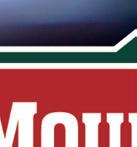
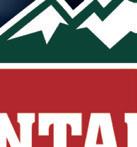

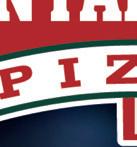






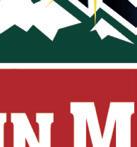



























Cash vs. Accrual
Is your accounting method limiting your expansion potential?
Written by LARRY LAYTON
For multi-unit service operators scaling from three to 10-plus locations, the choice between cash and accrual accounting is a strategic decision that determines whether you’ll secure expansion financing, maximize your exit valuation, or hit an invisible growth ceiling.
THE DIFFERENCE
With cash-based accounting, transactions are recorded when money changes hands: revenue when received and expenses when paid. Accrual accounting matches revenues with expenses in the periods they occur, regardless of payment timing. While both methods often show identical results for simple service businesses with immediate payments, strategic implications can diverge dramatically as you scale.
CASH ACCOUNTING
Cash accounting is adequate in five ways:
1. Business structure and scale
• Single-owner/small owner-operator where decisions are driven by daily cash in the bank
• Low-equipment needs and facility leases with no complex terms or tenant improvements
• Businesses not seeking investors, financing, or franchising
2. Revenue and payment structure
• Service rendered when paid with limited credit/billing arrangements and no significant accounts receivable
• Simple pricing models with no complex packages or memberships
• Minimal deferred revenue from prepaid services or contracts
3. Operational factors
• Service-based businesses with short-term projects and low or no inventory
• Standardized service offerings across all locations
• Low working capital transfers between locations
4. Growth and financing strategy
• Organic growth funded by cash flow, not external financing
• Family business model with internal decision-making and no plans to take on partners
• Self-funded expansion less than $350,000 per new location
5. Management and administrative preferences
• Owner comfort level with cash-based decision-making and limited accounting staff
• Focus on operational metrics, not financial analysis
• Preference for simplicity in daily financial management
Cash accounting is adequate if payments are immediate, inventory is minimal, and the owner is often the primary operator. Service providers, small professional practices, gig economy contractors, food trucks, and small rental properties share the same simplicity with immediate cash flow and owner-operator focus.
MULTI-UNIT DILEMMA
If cash accounting works so well for small service businesses, why do multi-unit service operators eventually switch to accrual?
The same characteristics that make cash accounting perfect in the early years often become the invisible ceiling that caps your expansion potential. Most multi-unit operators can continue using cash accounting successfully if locations maintain immediate payment, no receivables, minimal equipment purchases, and standardized lease terms. However, successful expansion typically introduces complexities that create material timing differences and intercompany transfers that require accrual accounting.
COMPLEXITY
Competitive pressure drives operators to add prepaid packages, seasonal services, or extended service agreements. A tutoring center selling $50,000 in annual packages in December shows inflated December cash profits while understating JanuaryNovember performance.
Multiple locations require significant equipment purchases, build-outs, and technology systems. A $200,000 equipment purchase hits cash account-
ing immediately but generates revenue for five or more years, distorting unit economics crucial for expansion decisions.
Commercial clients, insurance billing, or B2B accounts require 30 to 60-day payment terms, creating receivables that cash accounting overlooks until they are collected.
The cash and the accrual approaches show completely different expansion economics. Franchise development requires FDD compliance with audited GAAP statements. Private lenders and investor partnerships typically require accrual reporting for serious expansion capital.
Your cash method is failing if:
• Comparing location performance becomes impossible to measure due to timing differences.
• Monthly cash swings don’t match business activity.
• Expansion decisions are based on gut feel rather than unit economics data.
• Lenders ask clarifying questions about your real profitability.
MAKING THE TRANSITION
When you’ve determined accrual is necessary, follow this process:
• Engage a CPA experienced in multi-unit service businesses.
• File Form 3115 Application for Change in Accounting Method with the IRS.
• Allow 90 to 120 days for complete system transition and staff training.
• Budget $15,000 to $30,000 for initial setup costs plus $3,000 to $5,000 monthly ongoing.
BOTTOM LINE
Make the shift before it’s needed. Cash works for small, simple, service-based businesses where daily cash flow equals decision-making. Accrual accounting may be required when scaling past three units with service packages, seeking investor financing or large bank loans, or preparing to franchise.
Cash accounting gets you started. Accrual accounting gets you scalable, bankable, and valuable. Proactivity is key. Plan your transition 12 to 18 months before external requirements force the change.
Larry Layton, CFE, is a member of the Profit Soup team. His insights, gained as a franchise operations executive, business coach, and business owner, bring new depth to the team. Contact him at 714-309-3773 or larry.layton@profitsoup.com.

•$3.5M top quartile AUV | 65+ Locations | 250 Coming
•Fast Growth - Multi-unit franchisees expanding into 50+ markets
•30 Sec Drive Thru Times - High Volume + Operational E iciency
•Flexible Formats - Drive thru, End Cap, Inline & 2nd Gen conversions
BRAND HEAT








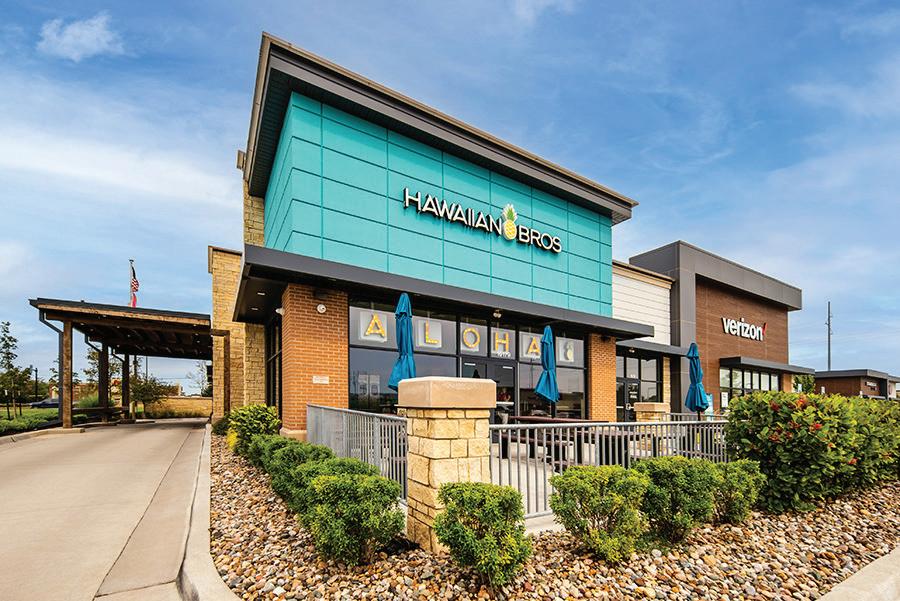
Franchising With Representation
System change without buy-in is a recipe for resistance
Written by BRIAN SCHNELL
In today’s world, many customers expect businesses to adapt to them. In a franchise system, this dynamic is reflected in system change. Franchisors that don’t embrace new possibilities or design a culture where franchisees embrace change will fall behind their competition. With that reality, a franchisor can no longer lead with a primarily command-and-control style. Instead, they should embrace collaborative leadership where a franchisor retains decision-making authority but listens closely to franchisees and all other brand stakeholders.
Franchisees want a voice rather than a vote. They want meaningful input and a franchisor who truly listens. They don’t want to have expensive system changes imposed on them at the last minute even if Section 8.C of the FDD says the franchisor has the right to do it.
System change has increasingly become a point of friction in many franchise brands. How franchisors and their franchisees embrace system change will continue to be a difference maker in 2025 and beyond for every system. The key to an effective process overhaul is a franchisor driving change through collaboration with its franchisees. Success requires unwavering focus on how to effectively design, implement, and communicate new directions that will drive customer brand loyalty and unit-level profitability.
Protecting franchising from within is as important to franchisees as it is to franchisors. After all, a franchisee’s equity is significantly impacted if their franchisor is unable to enforce system standards. If a rogue operator is damaging the brand, it impacts
a franchisee’s value. The value of the franchisee’s business decreases if the franchisor can’t effectively protect the brand and make necessary adjustments.
Culture of collaboration
Franchisor and franchisee leaders are responsible for instilling a passion and attitude throughout the system. Successful leaders don’t blame others for system shortcomings, and they don’t try to dictate attitude or culture. If a franchisor leader can’t instill that passion in their team and franchisees, then franchisees won’t have the tools, drive, and commitment to instill that passion and commitment in their employees. It simply won’t happen on a sustainable, system-wide basis without shared alignment. If a franchisor wants motivated, engaged, and aligned franchisees, give them a meaningful voice in matters of system-wide importance.
As a foundational point, franchisors must have a franchise agreement that allows them to effectively and efficiently grow, maintain, protect, and evolve the brand and system. A strong franchise agreement allows a franchisor to protect the brand from free-riding franchisees. Franchisors, however, must take into account the franchisee’s perspective as they consider new directions. A franchisor that does not obtain franchisee input on system change before announcing its plans is asking for trouble at some point, especially if franchisees resist or if those changes do not produce the desired outcome.
Collaboration does not require a franchisor to give up decision-making authority on system change. That is the franchisor’s role and responsibility. Collaboration is about leadership and how
franchisees can provide input to their franchisors through advisory councils and franchisee associations. Franchisees should be encouraged to offer feedback to field consultants. There can also be discussions with leadership at the home office or at franchise events.
Franchisees will recognize franchisors who invest training time, effort, and money in creating a culture of respect within their team and system, setting clear expectations with franchisees from the beginning regarding the roles and responsibilities of both the franchisee and the franchisor. There should be agreement on how franchisees provide feedback, and franchisors need to have a solid understanding of the day-to-day concerns and needs franchisees face.
Best practices
A franchisor’s collaborative approach to system change often includes the following differencemaking best practices:
• Foster and protect a system-wide culture where the efforts of franchisees are appreciated and celebrated.
• Embrace the belief that new ideas can help drive system-wide growth and are often found in the field with franchisees, but do so in an organized manner rather than every franchisee doing what they want.
• Treat franchisees with respect and recognize their investment in their business and their stakeholders’ role in the brand.
• Promote the importance of the franchisees’ daily interactions with the brand’s customers at the local level.
With the proper approach, new systems and processes can be to everyone’s benefit because long-term sustainability for all brand stakeholders, including the franchisor and franchisees, can only happen when the unit-level economics of the business are healthy.
Brian Schnell is the chair of Faegre Drinker’s franchise practice. He is passionate about franchising and has more than 35 years of experience focusing on finding solutions to challenges and opportunities for clients. He is also the chair of IFA’s Franchise Relations Committee.


















SHOW ME THE (SMART) MONEY
The franchise financing ecosystem is changing fast
Written by PAUL SANTOMAURO
Franchise growth has always depended on access to capital, but how owners secure that capital is changing faster than ever.
While the U.S. Small Business Administration’s 7(a) Lending Program remains a cornerstone—financing billions in franchise projects each year— new models are emerging that promise to reshape the very foundation of franchise funding. From private equity firms eager to scale multi-unit operators to fintech platforms delivering real-time, data-driven solutions, franchise financing is no longer limited to traditional banks and government programs. Instead, it is evolving into a diverse ecosystem where capital providers compete not just on rates and terms, but on their ability to become true growth partners for franchisees.
Nontraditional lenders
Over the past six months, FRANdata has observed a shift in the financing landscape. Specifically, there was a surge in inquiries from nontraditional lenders entering the franchise space. These new players are stepping into the market and redefining how financing is delivered to franchise operations. Among the most active are private equity (PE) firms and alternative capital providers seeking opportunities to embed themselves within the franchise ecosystem.
Factoring and receivables
Although receivables financing or “factoring” companies are a familiar segment, the current evolution reflects a sophisticated and integrated model.
Rather than simply purchasing accounts receivable, modern factoring platforms now offer dynamic financial tools such as business credit cards tailored to specific franchise industries.
These cards often come with targeted incentives such as discounts on supply costs, reduced payment fees, or loyalty points aimed at providing real-time financial benefits. These products are often paired with advanced analytics dashboards that provide real-time performance tracking, including sales trends, customer behavior, and cash flow forecasting to franchisee borrowers.
This deep embedding allows nontraditional financing providers to move beyond transactional lending and become strategic partners in franchise operations. As a result, franchise owners receive financing that is not only flexible and timely, but also responsive to real-time business needs.
PE direct lenders
Another notable trend is the rise of PE direct lenders. Outwardly, these lenders present themselves as operating much like an SBA shop would. They are targeting loan sizes in the same range as an SBA lender, typically having a higher top-end loan size. One such lender could do loans from $500,000 to $10 million from their desk. For reference, the SBA 7(a) program cap is $5 million, so these lenders can be flexible for large projects.
Operating outside of SBA and traditional lending guidelines, they can work with borrowers and
entertain creative covenants. They can finance multi-unit development agreements on aggressive schedules and effectively grow with franchisees as they transition from being a single-unit franchisee to a multi-unit operator. This solves one of the major pain points of growing with SBA financing: Borrowers eventually hit the $5 million cap and must then transition into conventional lending relationships.
Fintech’s expanding role
In addition to these developments, technology is playing a critical role in shaping the future of franchise financing. Financial technology firms, or fintechs, are increasingly designing products specifically for franchise operators. Unlike conventional banking products, these solutions often emphasize speed, automation, and integration with business operations.
For example, digital lending platforms are using machine learning to assess risk profiles in real time, enabling fast approvals and personalized lending terms. This can be particularly attractive to emerging franchisees who may not yet have extensive credit histories but demonstrate strong business potential through operational metrics.
Digital lending
Another innovation is the integration of financing into franchise management systems. Franchise management software now often includes modules for credit line monitoring, loan applications, and repayment tracking, effectively embedding capital access into the day-to-day operations of a franchise. This creates a seamless experience where financing feels like a natural extension of running the business rather than a separate, time-consuming process. In addition, these tools enable franchisors to provide greater support to their operators by offering approved vendor programs, co-branded financing options, or bulk discounted lending solutions that drive both growth and efficiency.
Ultimately, what we are witnessing is a broadening of the franchise financing ecosystem. While SBA programs and conventional banks remain vital cornerstones, the rapid rise of alternative lenders, fintech platforms, and embedded finance solutions demonstrates that the market is evolving toward greater flexibility and customization. Franchisees today are not only seeking capital, but also strategic partners who understand the unique challenges of multi-unit growth, brand scaling, and operational resiliency. Those lenders and platforms that can align financing with the specific rhythms of franchise operations will be best positioned to capture long-term relationships in this expanding industry.
Paul Santomauro is director of lender and risk products at FRANdata.




UNDER ONE ROOF
Explore the opportunities and risks of multi-brand franchising
Written by CARTY DAVIS
The rise of multi-brand franchisors has reshaped how brands approach growth, operations, and long-term strategy. Aligning with a franchisor that manages multiple brands can carry both upside potential and risk. Understanding these dynamics is important for making informed investment choices and positioning a franchise organization for sustained success.
BENEFITS
One advantage of working with a multi-brand franchisor is access to scale. By consolidating procurement across several concepts, franchisors can negotiate better terms with suppliers, reducing food, packaging, and equipment costs. In a marginsensitive business, small savings at the unit level can improve profitability. Restaurant Brands International (RBI), the parent of Burger King, Popeyes, Firehouse Subs, and Tim Hortons, leverages this purchasing power extensively, standardizing contracts and lowering costs for franchisees.
Beyond procurement, franchisors can spread overhead costs and research and development, such as media buys, mobile apps, loyalty platforms, and technology investments, across their portfolio of brands. Smaller brands gain access to tools and resources that would be costly to develop independently, helping them remain competitive with large industry players. Inspire Brands, which owns Arby’s, Sonic, Jimmy John’s, Dunkin’, BaskinRobbins, and Buffalo Wild Wings, has invested heavily in digital infrastructure, a benefit that standalone mid-sized chains could rarely afford.
Multi-brand franchisors also benefit from data. Collecting operational, financial, and consumer information across diverse concepts enables benchmarking and best-practice sharing. Even if franchisees lack direct visibility into all data, franchisors equipped with these insights are positioned to make system-wide decisions that support operators. Yum! Brands has applied learnings from Taco Bell’s latenight success into strategies at Pizza Hut and KFC. These structures can create clear pathways for growth and diversification. Strong operators are often able to expand into additional brands within the portfolio, offering an efficient route to diversification without the need to build new franchisor
relationships. In some cases, struggling units can be rebranded into another concept under the same franchisor umbrella. This flexibility allows operators to balance risk across categories, such as chicken, burgers, pizza, or casual dining, while staying within a single system.
RISKS
These advantages must be weighed against potential downsides. Managing multiple concepts can strain a franchisor’s resources and dilute strategic focus. When leadership attempts to grow several brands simultaneously, brand positioning, marketing, or menu innovation may suffer. The result is stagnation, weak consumer demand, and slow same-store sales growth. Even when franchisors avoid spreading themselves too thin, they often prioritize star brands while neglecting others. Smaller concepts may see reduced investment and attention from leadership.
Another concern is the creation of silos within the franchisor. Despite operating under one corporate umbrella, many franchisors fail to truly integrate their brands in a meaningful way. Separate leadership teams, support structures, and marketing strategies can leave concepts functioning in isolation with little collaboration. Franchisees cannot assume alignment simply because brands share a parent company. It is critical to understand the relationships and relative positioning of each concept within the portfolio before committing to growth. Promised synergies may not translate into practical benefits.
Conflicts of interest may also arise. A franchisor managing two competing brands in the same category, such as RBI with Burger King and Popeyes (both active in the quick-service chicken sandwich space), may prioritize one brand over another depending on market dynamics. Franchisees must evaluate whether competition within the same umbrella could cannibalize their investments.
Operators must also evaluate how a franchisor’s long-term exit strategy influences portfolio management. Many franchisors pursue growth by acquiring additional concepts, creating the perception that a larger portfolio will inherently command greater value at exit. In reality, accumulating brands
does not guarantee strong returns. If weak concepts are left underinvested, they can dilute the performance and reputation of strong brands.
Before entering a multi-brand system, franchisees should understand how the franchisor intends to create value, whether through operational improvements, brand revitalization, or scaling for size. A franchisor focused on short-term expansion rather than sustainable brand strength risks eroding overall system value, impacting franchisee equity and exit opportunities.
Finally, cultural alignment matters. Large multibrand franchisors can feel corporate with layers of bureaucracy that frustrate entrepreneurial operators accustomed to direct access to decision-makers. Franchisees may also find that smaller brands within a portfolio lose their original culture or nimbleness after integration. Before committing, it’s critical to ensure that values, decision-making processes, and support structures align with your operating style.
BOTTOM LINE
Taken together, these opportunities and risks demand discipline. Multi-brand franchisors can be valuable partners, delivering lower costs, broader data, shared resources, cross-brand marketing opportunities, and diversified growth options. They can also create challenges around strategic clarity, siloed structures, portfolio quality, intrabrand competition, and internal bureaucracy.
The central question is not whether multi-brand franchisors are inherently good or bad, but whether their structure aligns with your long-term goals, capital priorities, and operational strengths. Success depends on evaluating franchisor priorities, understanding portfolio dynamics, and maintaining flexibility as conditions evolve.
The franchise business has always been about balancing independence with interdependence. In an era of multi-brand franchisors, that balance is more complex than ever. Operators who approach these relationships with focus and discipline will be best positioned to survive and thrive.
Carty Davis is a partner with C Squared Advisors, a boutique investment bank that has completed hundreds of transactions in the multi-unit franchise and restaurant space. Since 2004, he’s been an area developer for Sport Clips in North Carolina with more than 70 units. Contact him at 910-528-1931 or carty@c2advisorygroup.com.



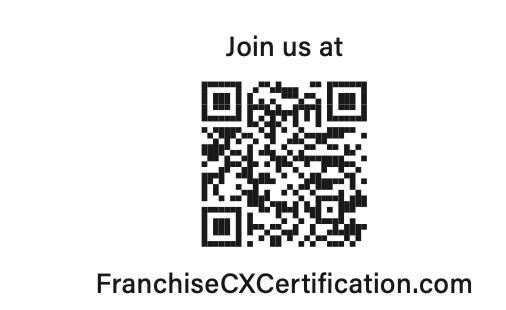



CONGRATULATIONS totheinitialrecipientsofthe2025Franchise CustomerExperienceCertification,validatingpracticesthatdrivefranchisee profitabilitythroughoutstandingfranchiseeandconsumerexperience.




